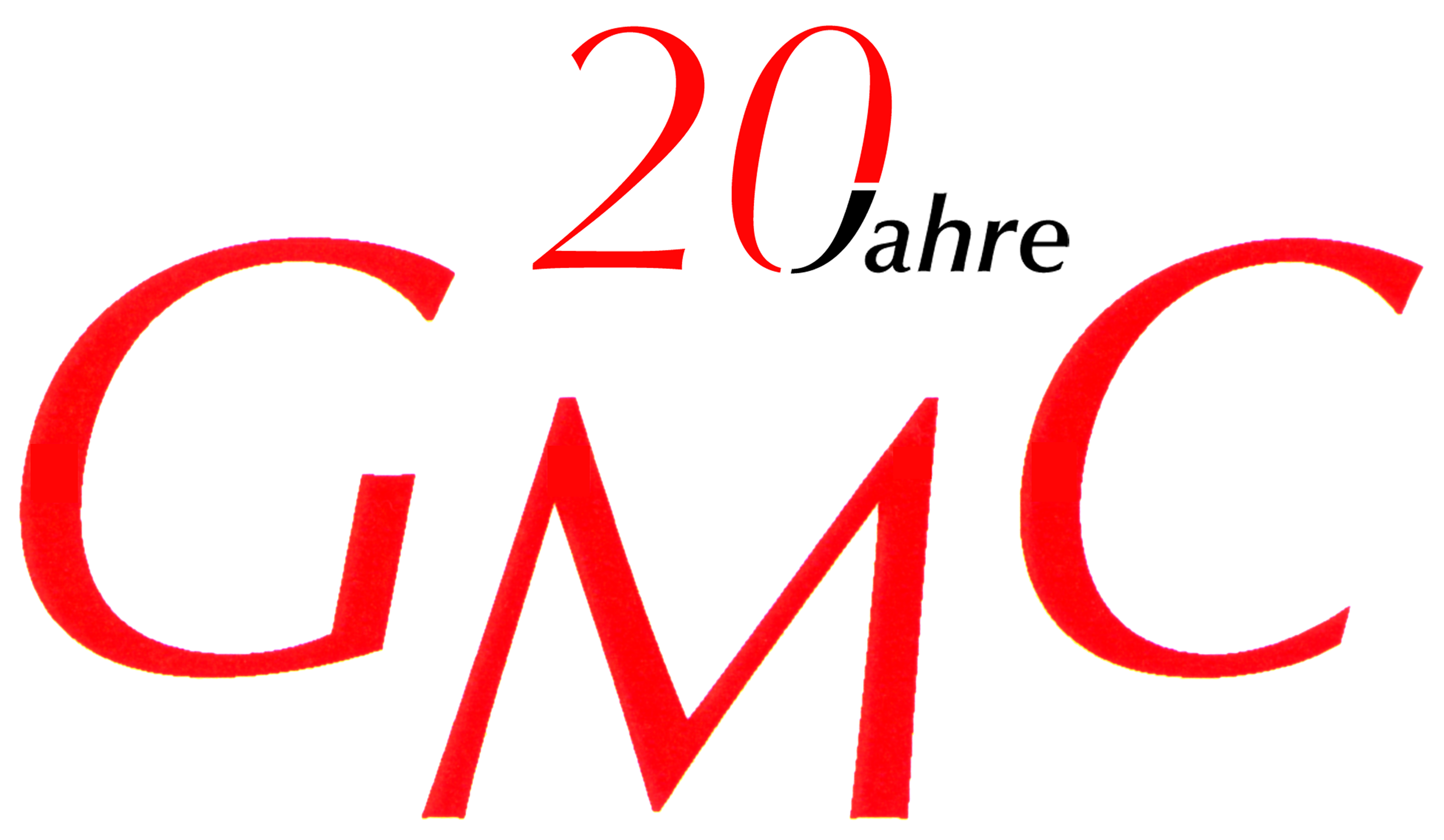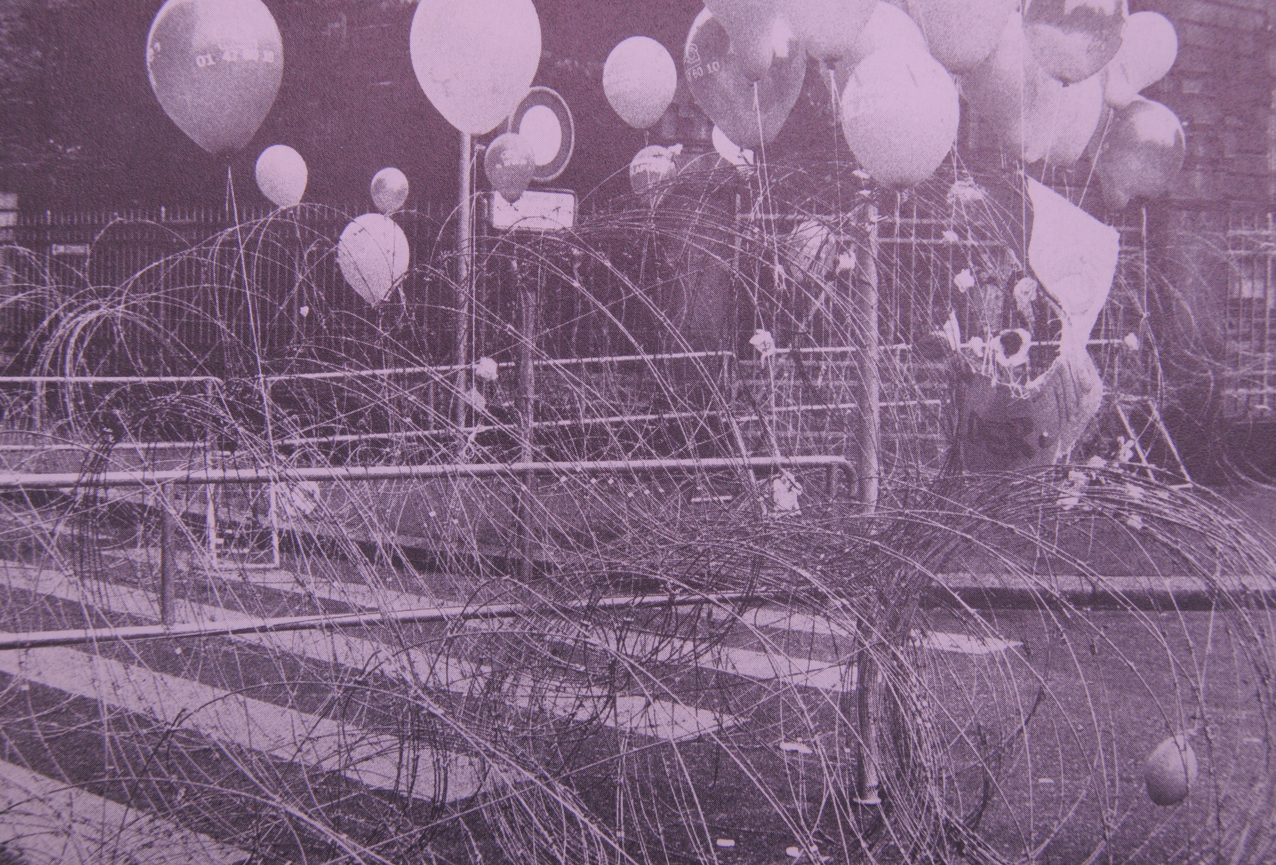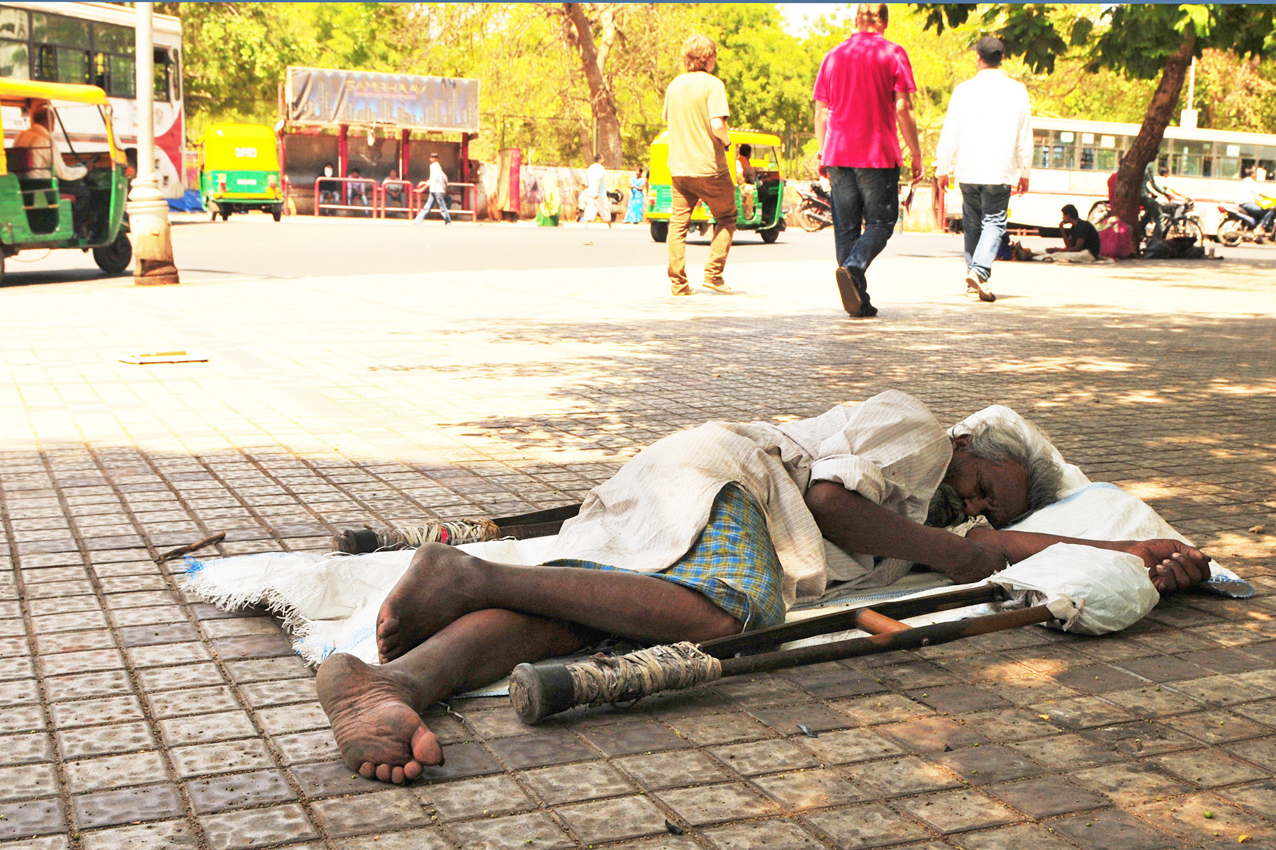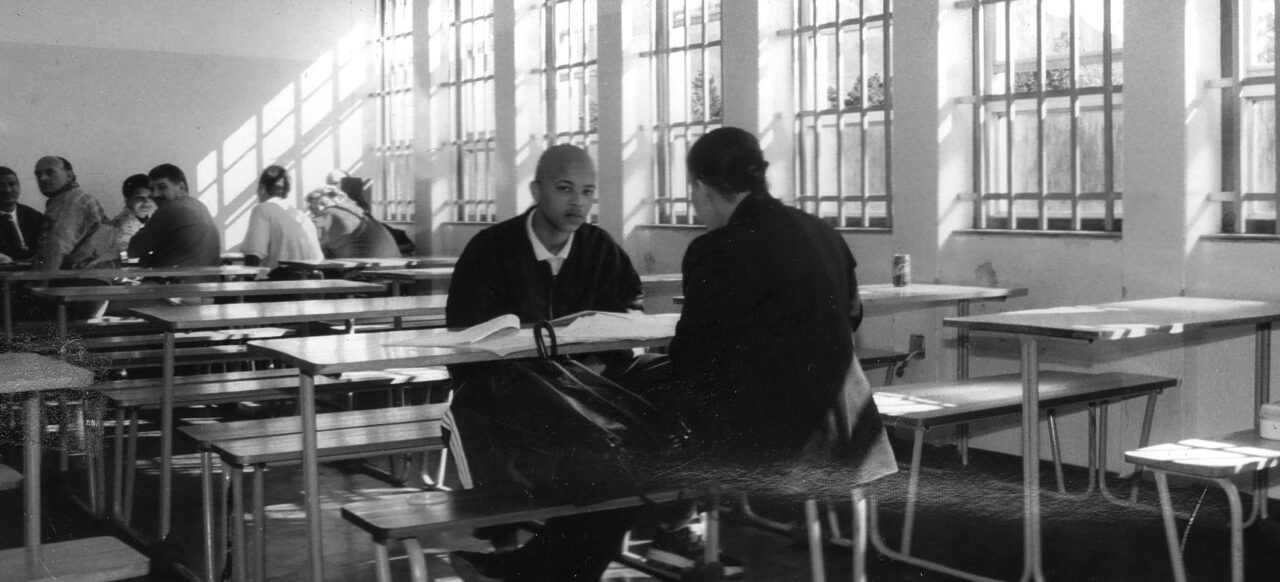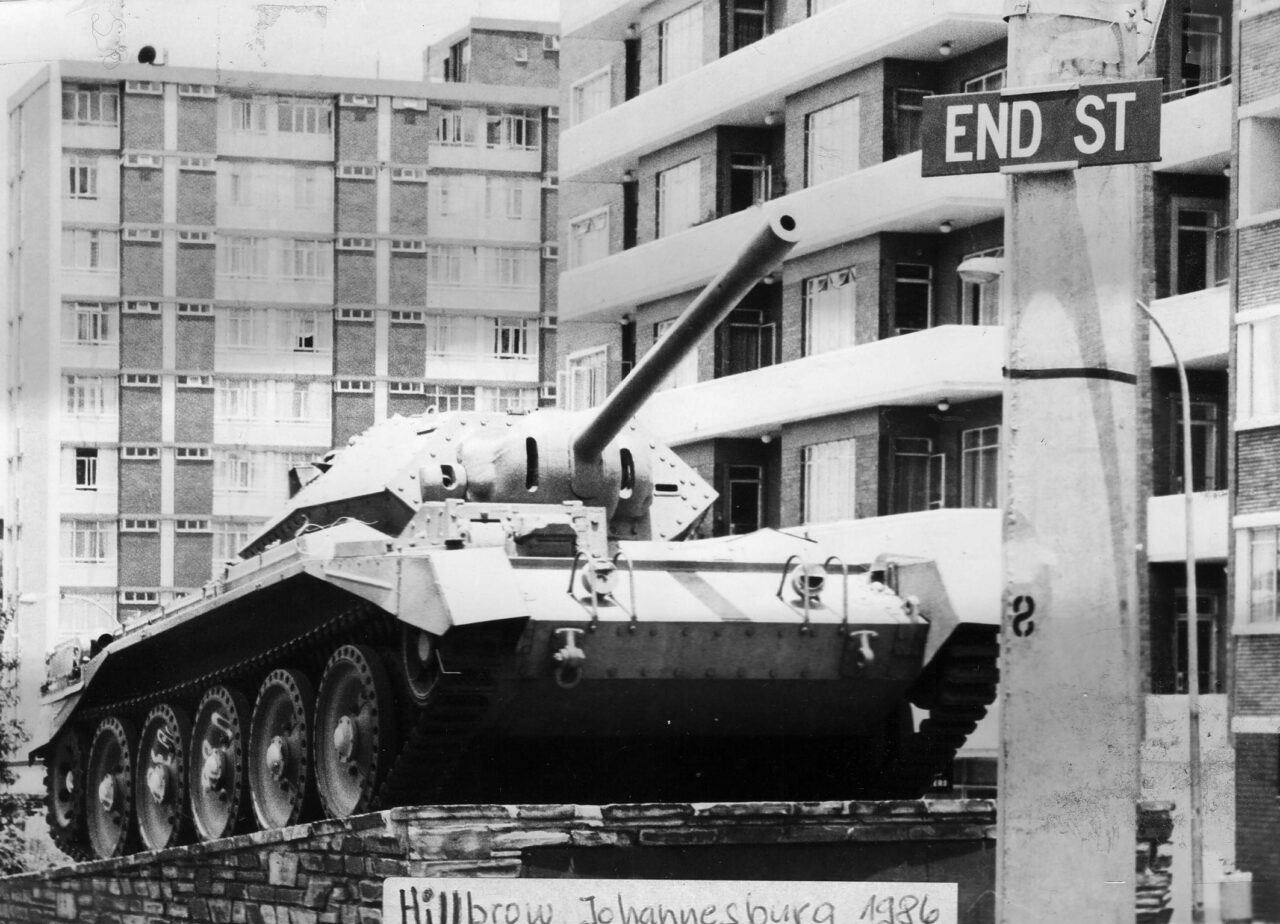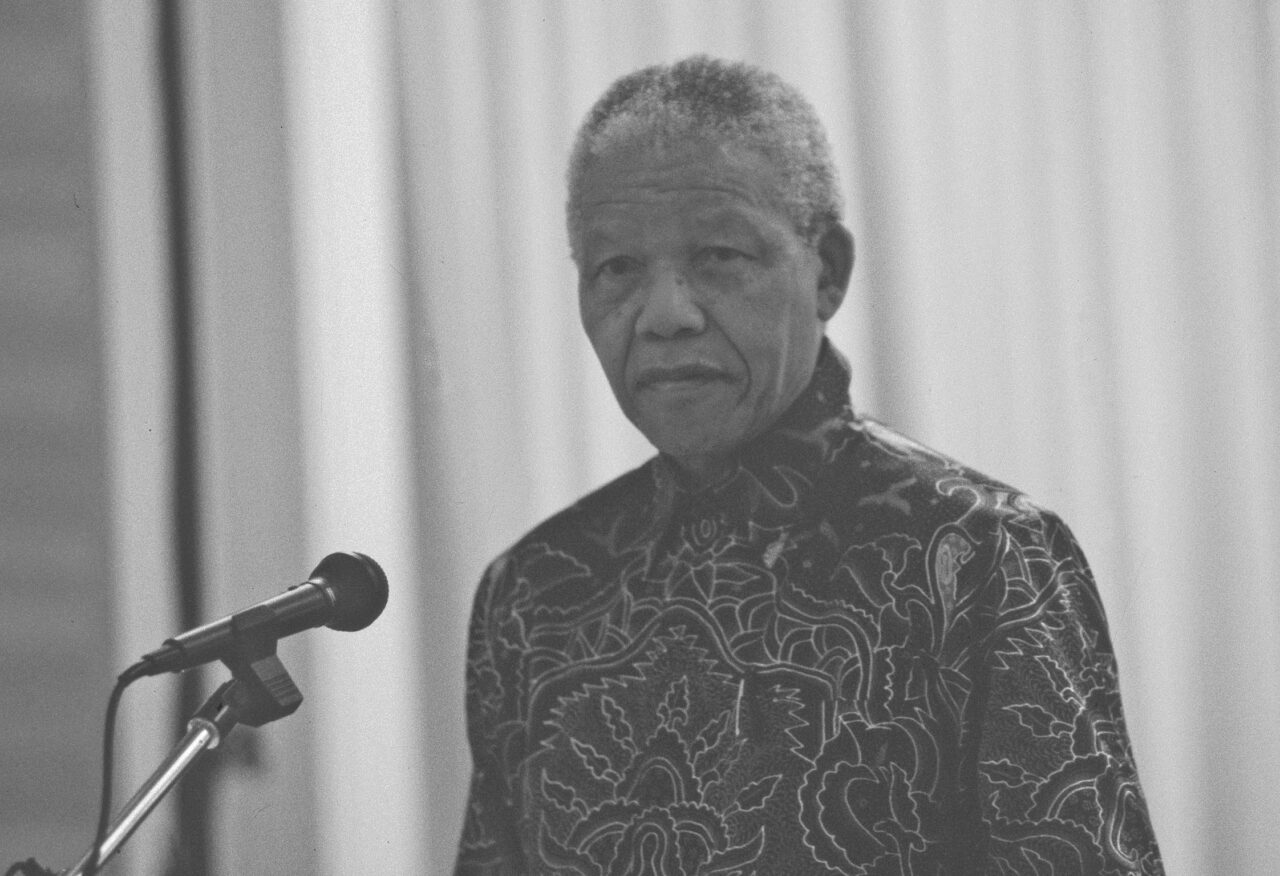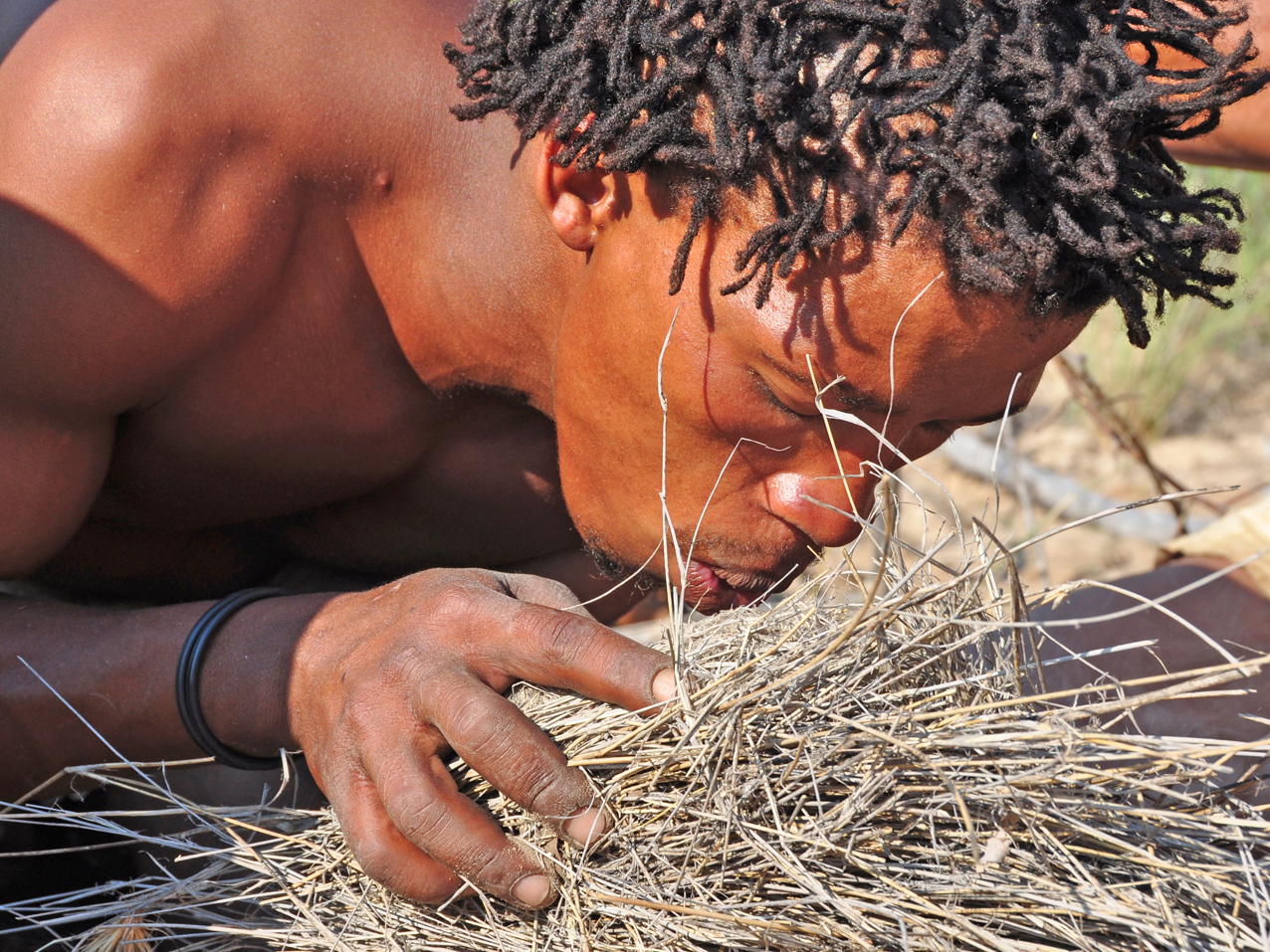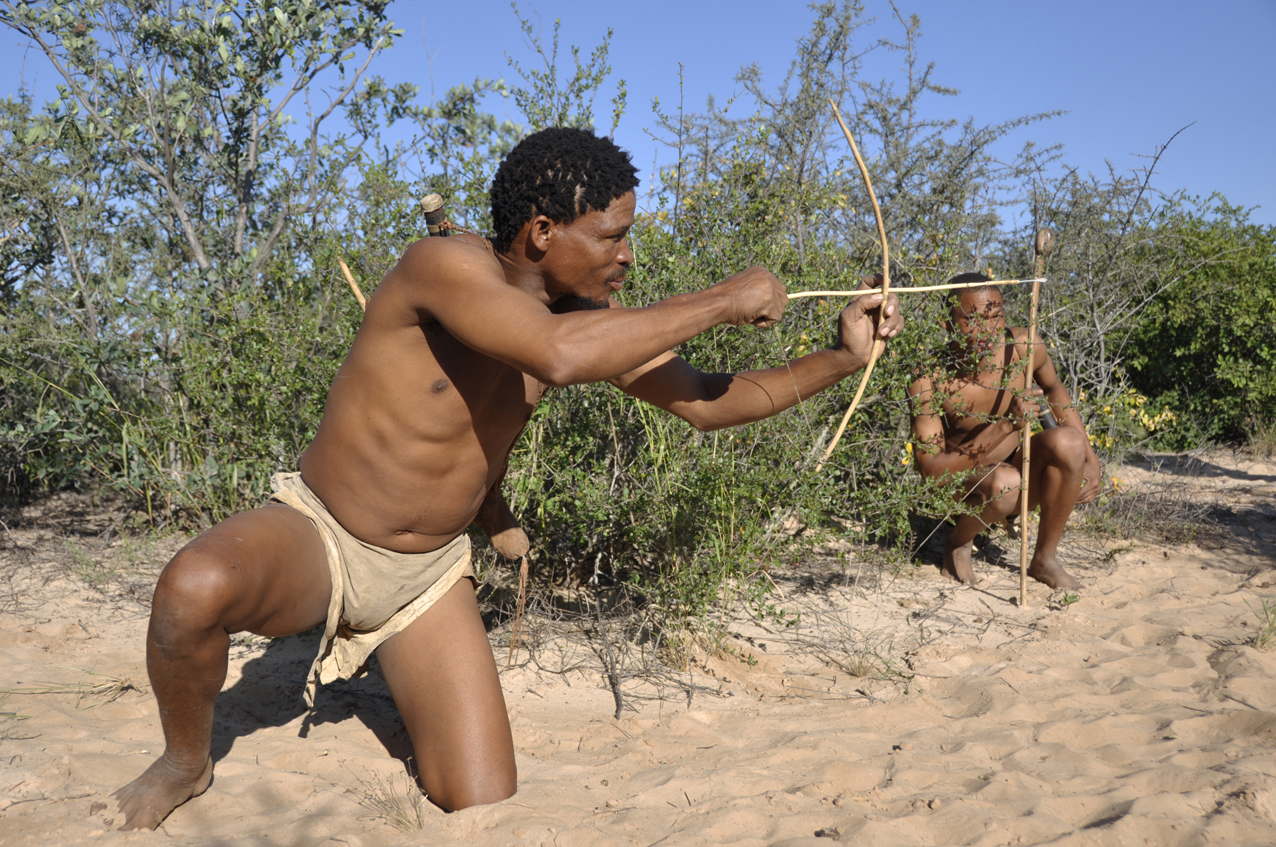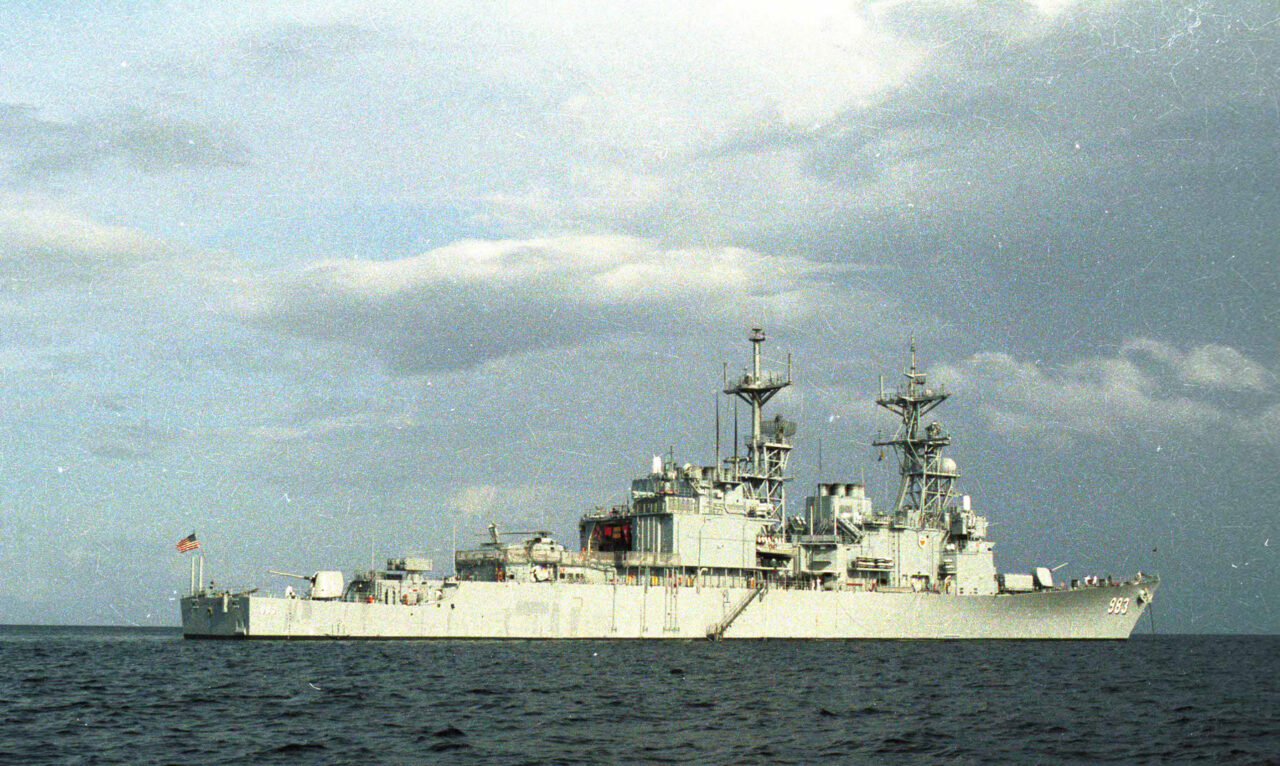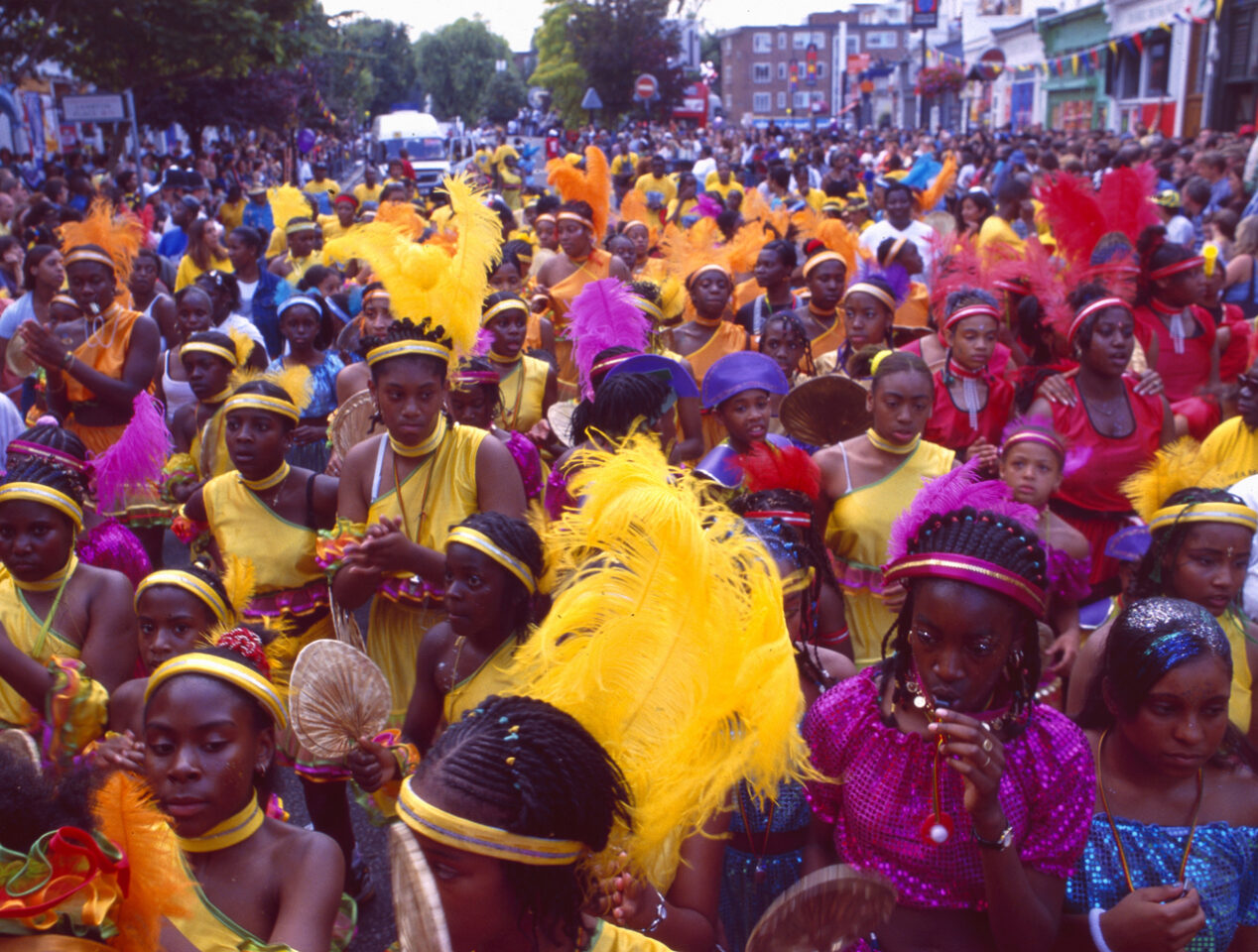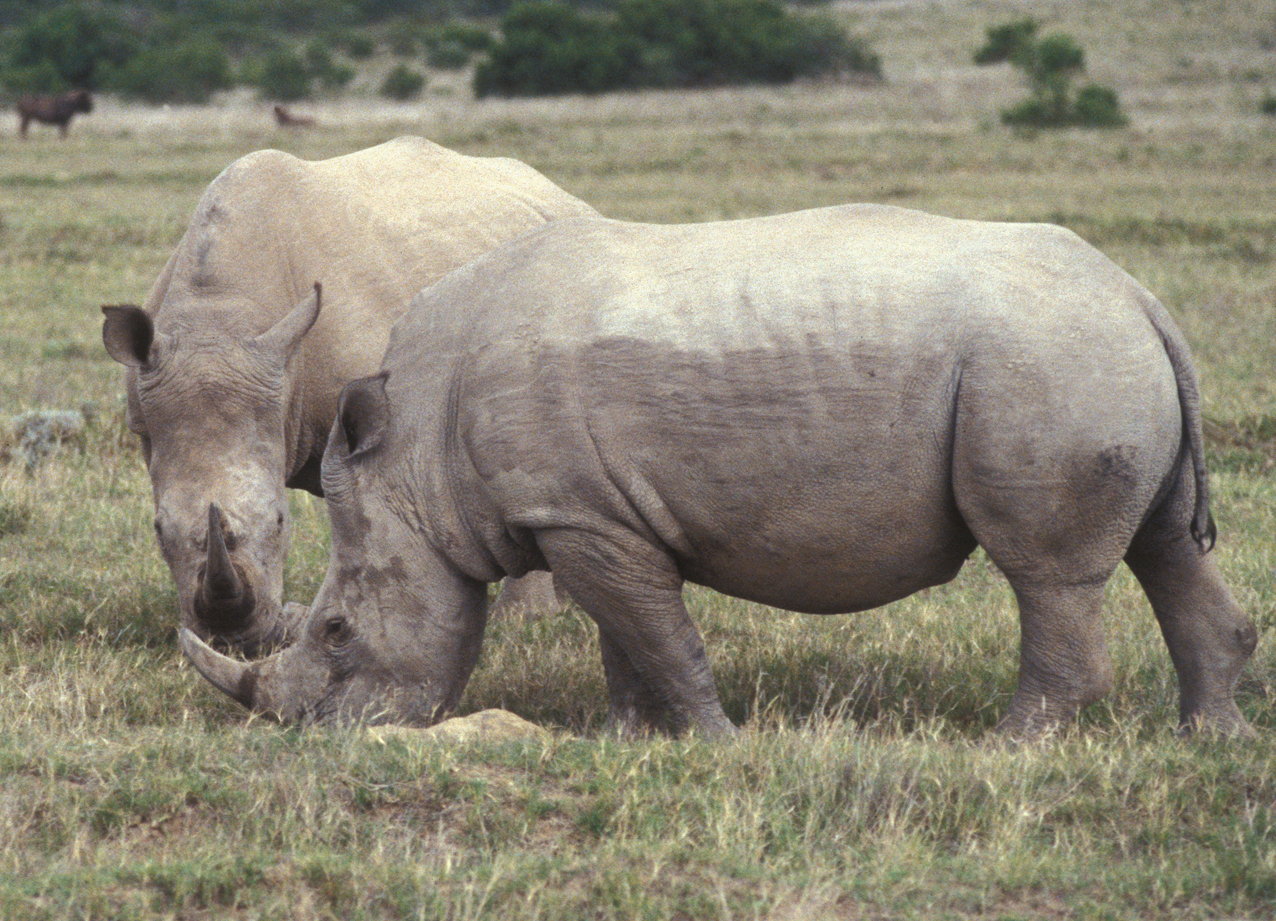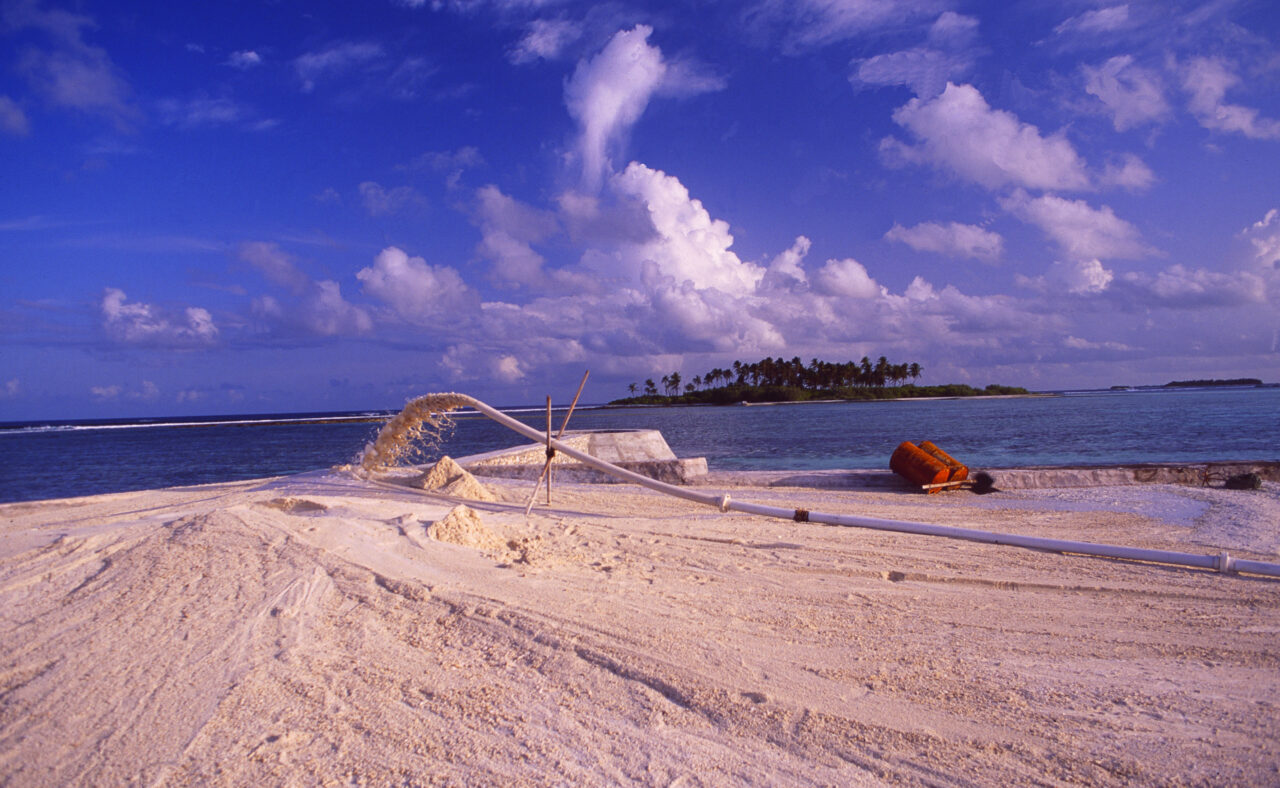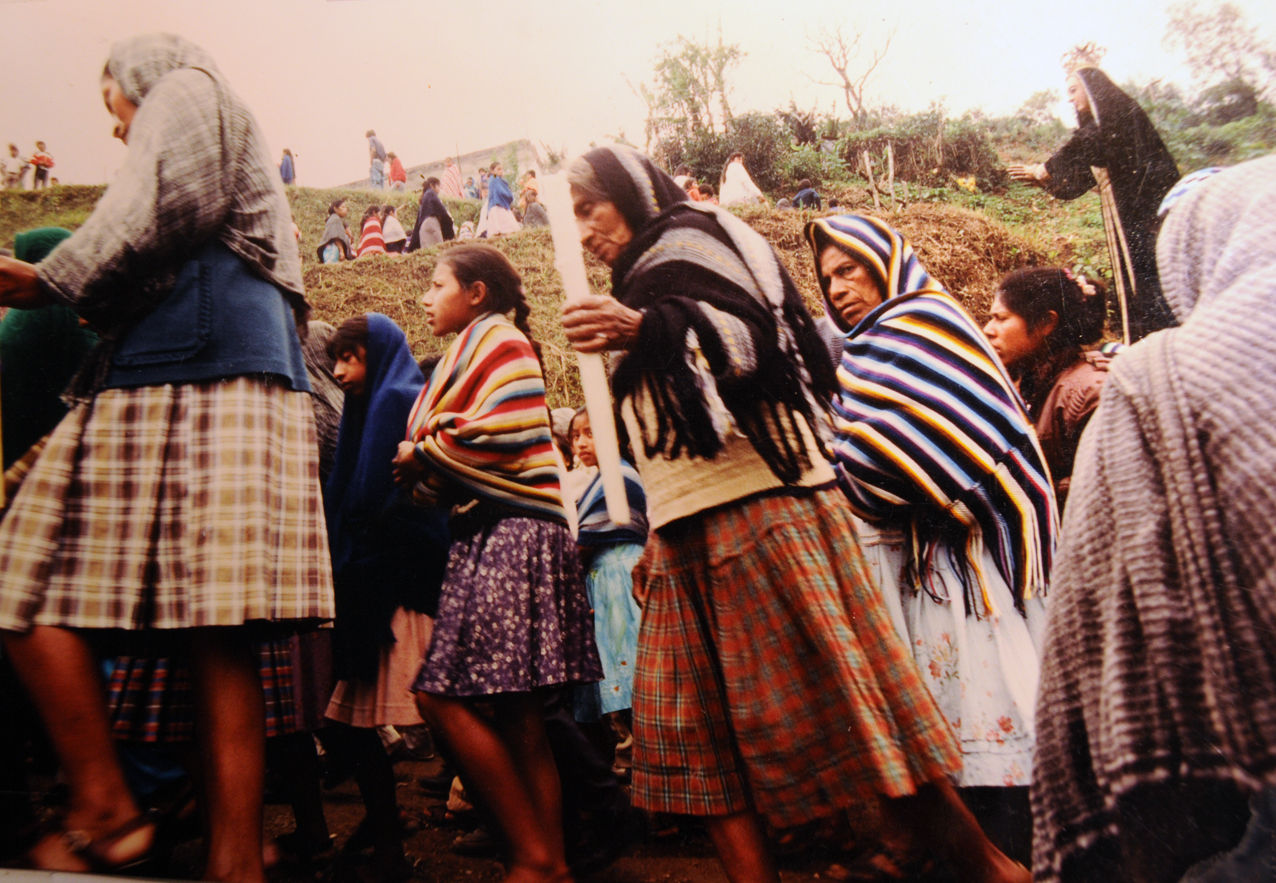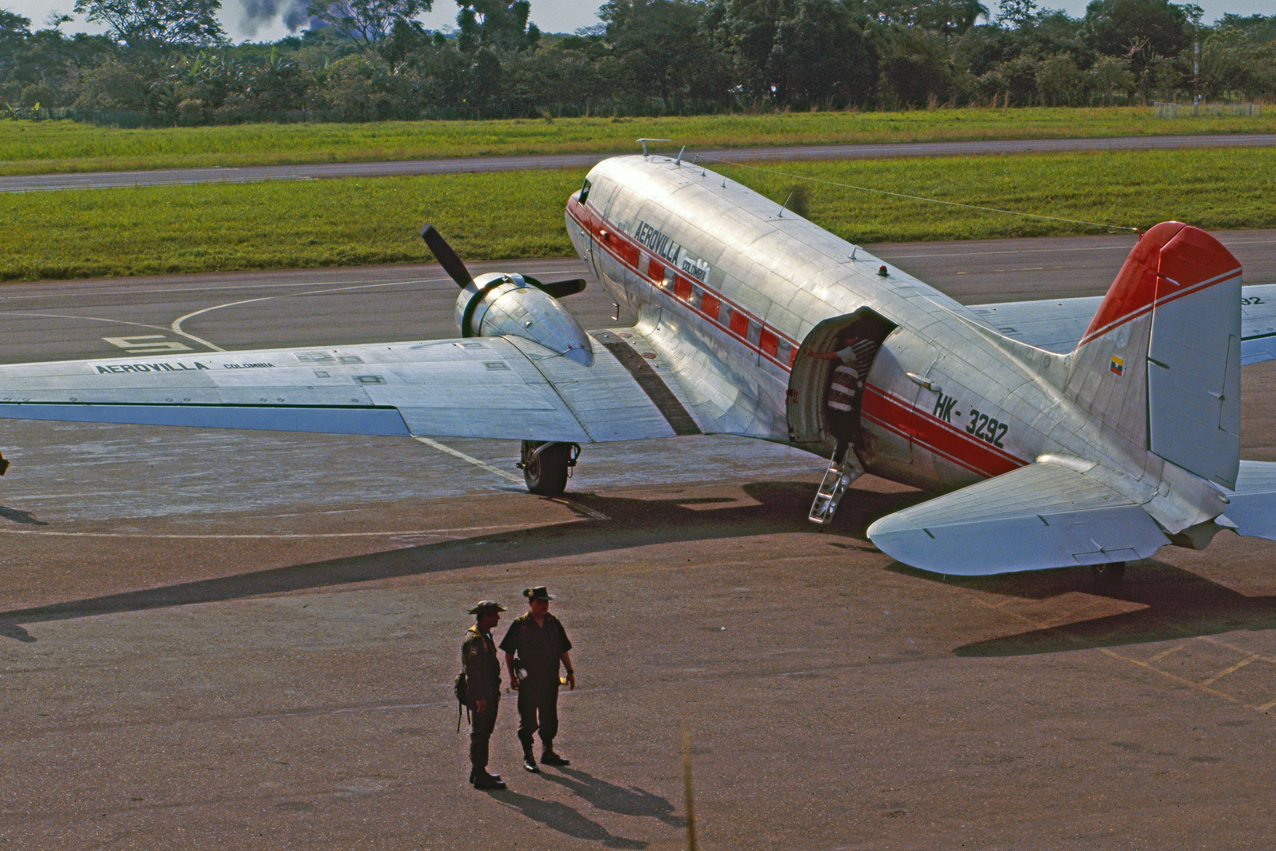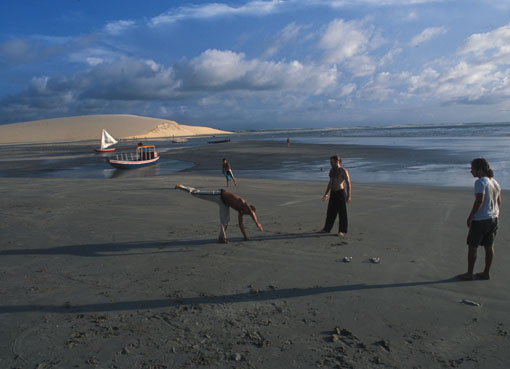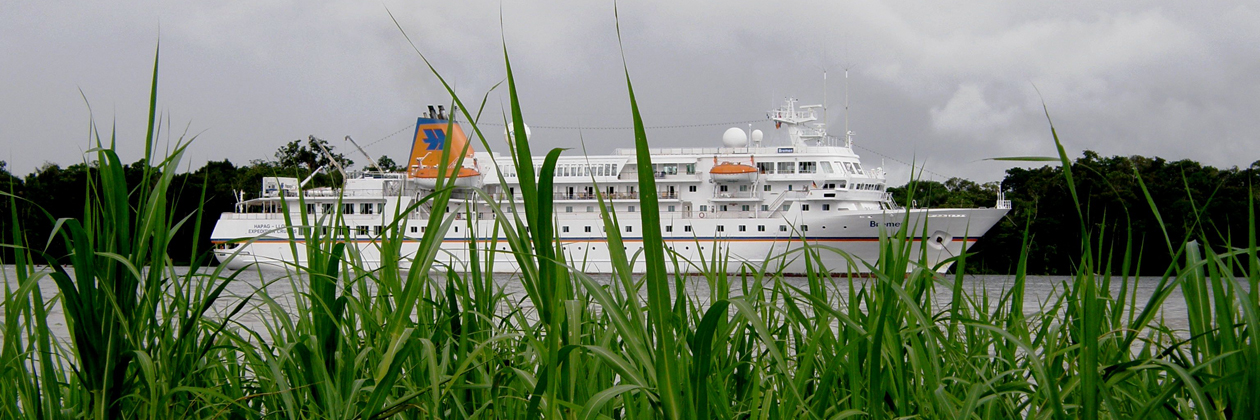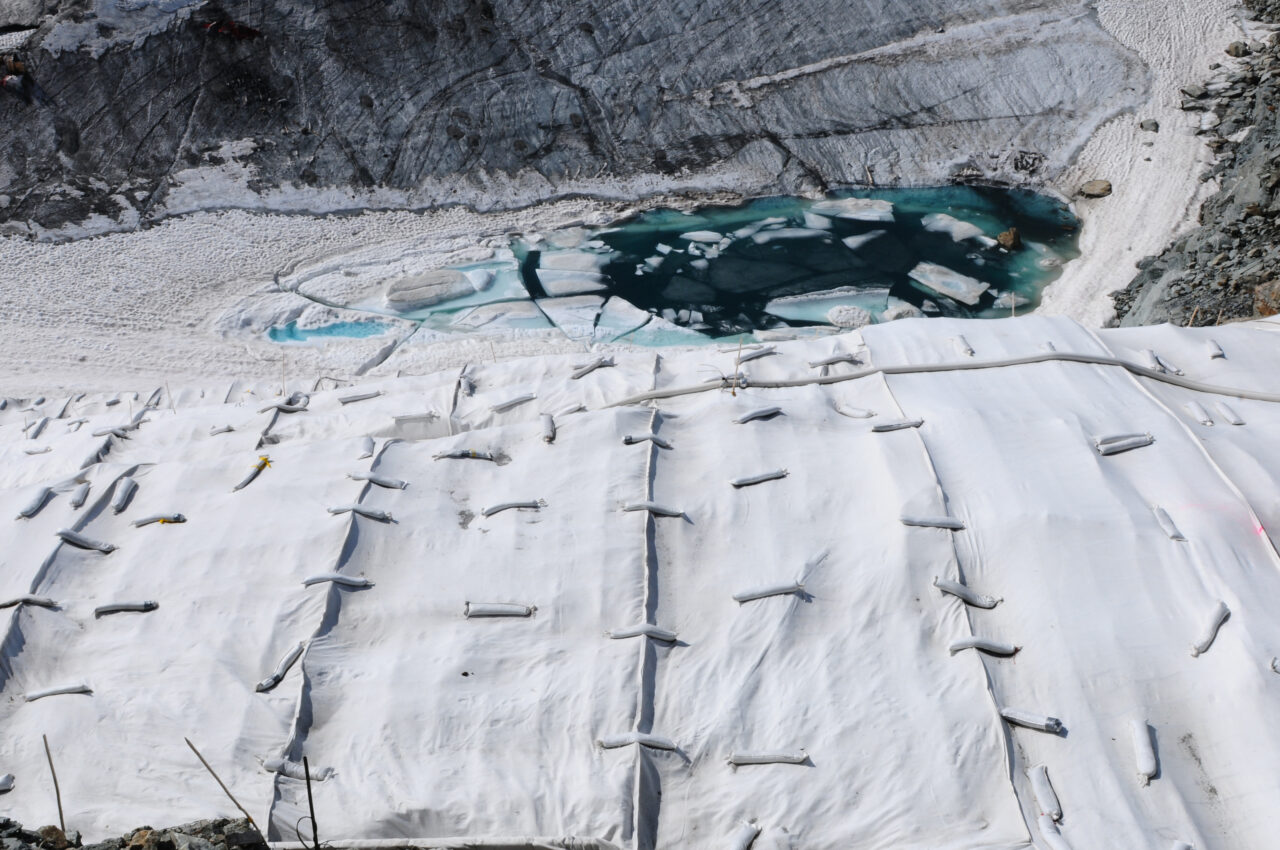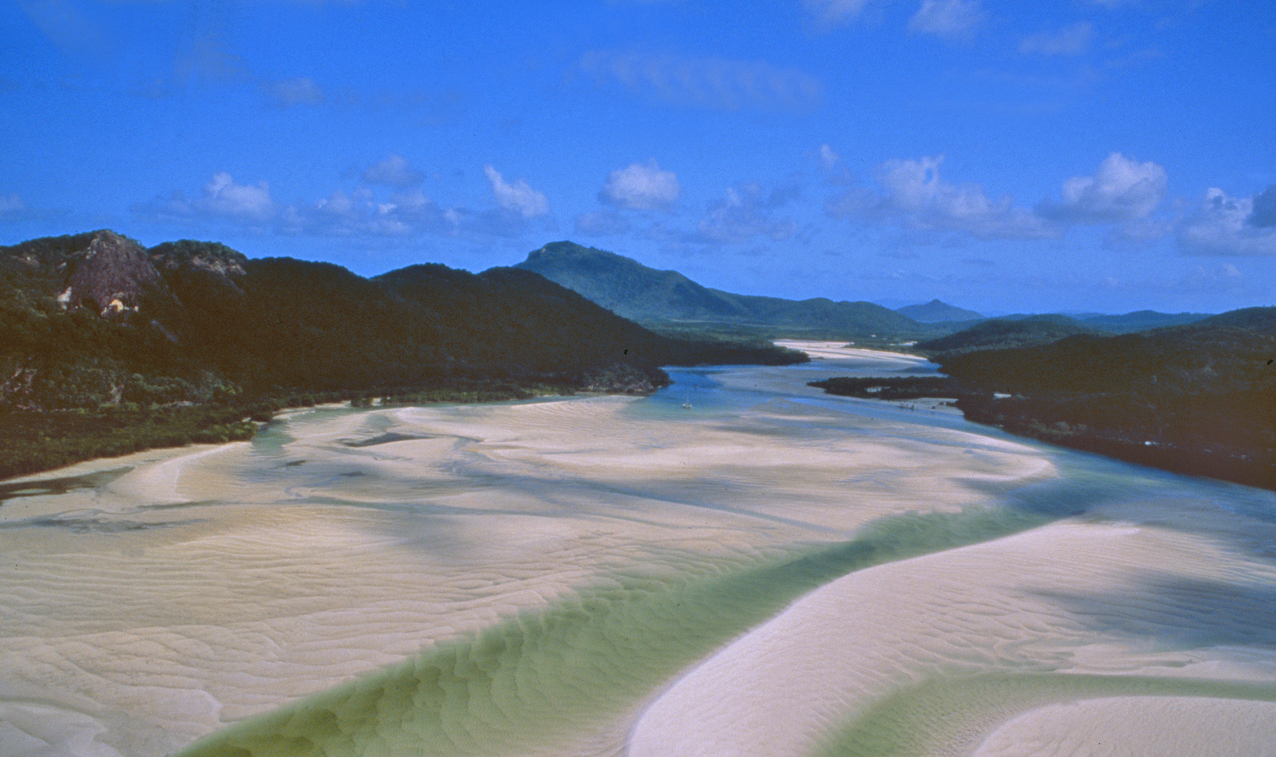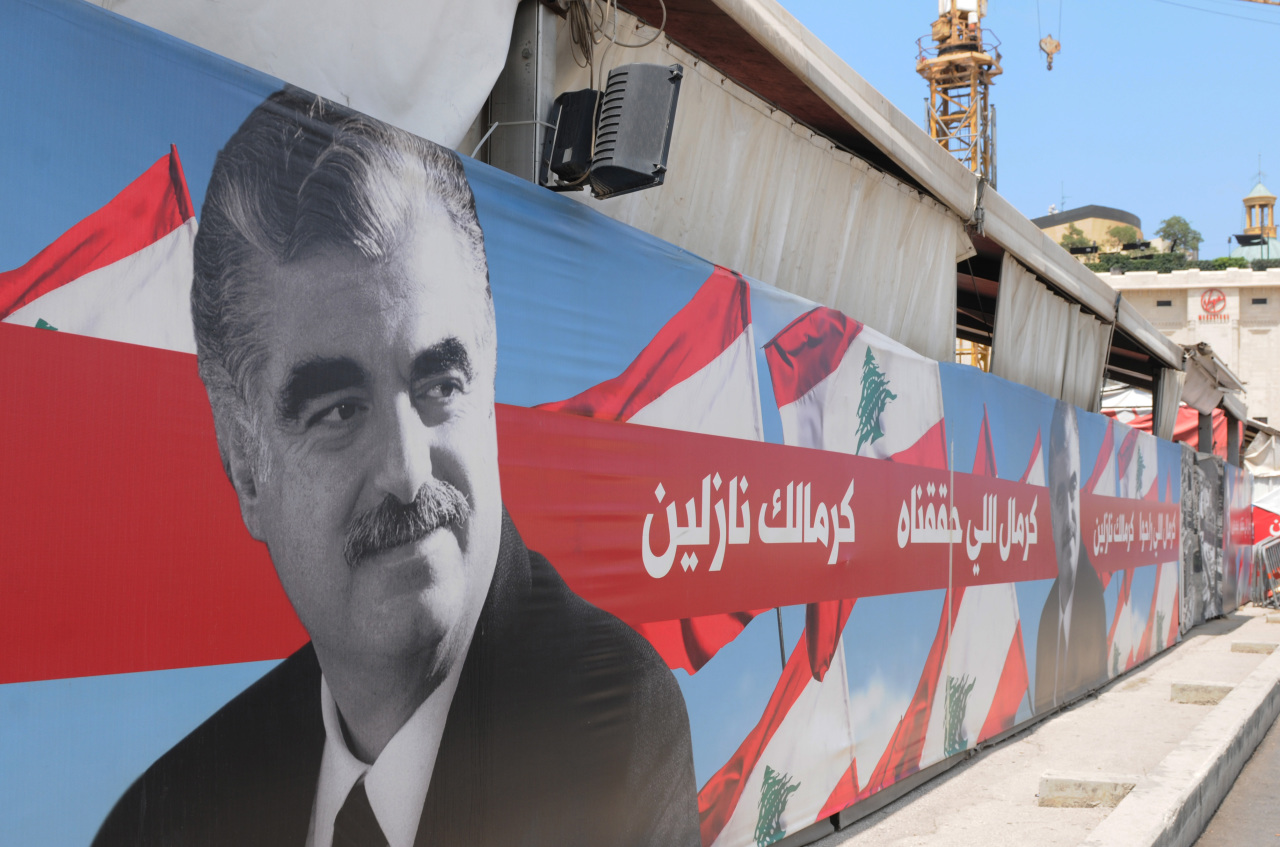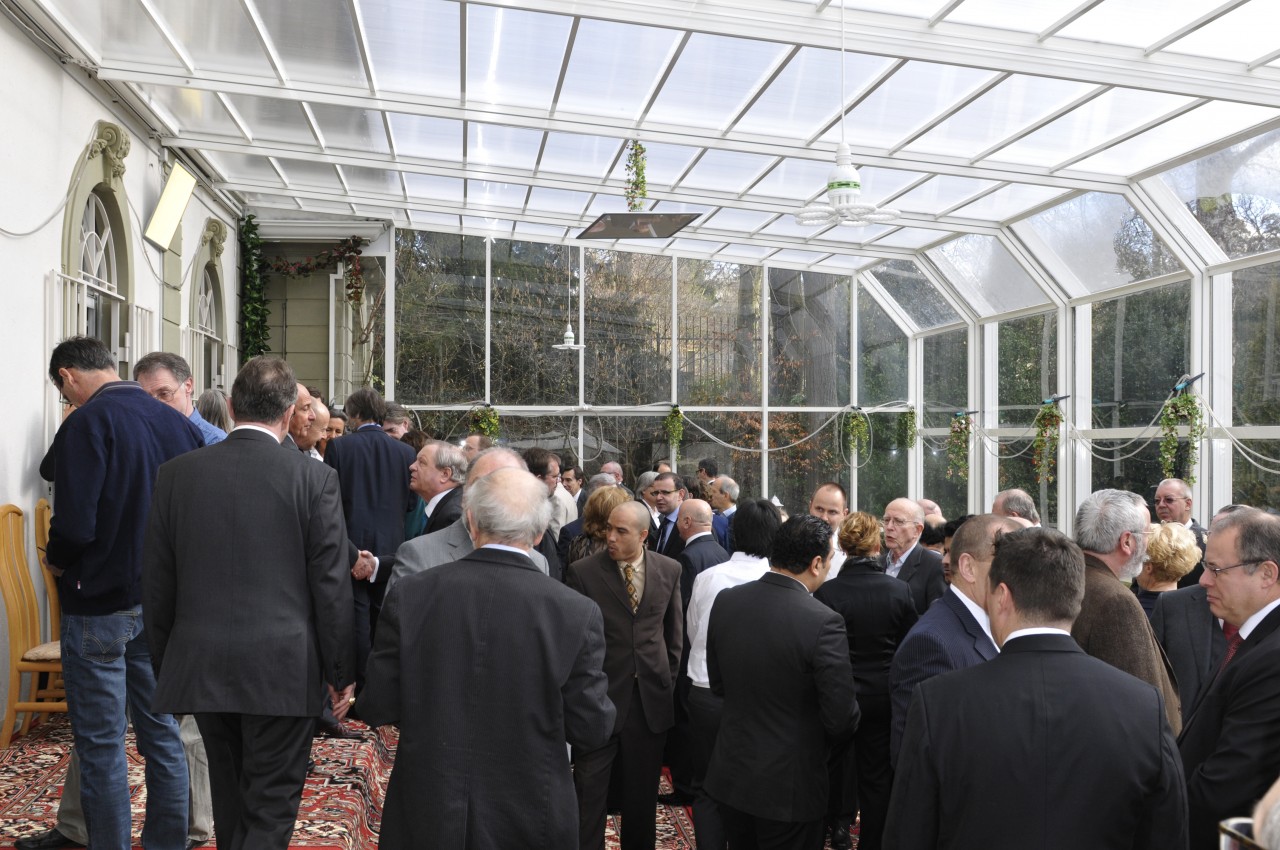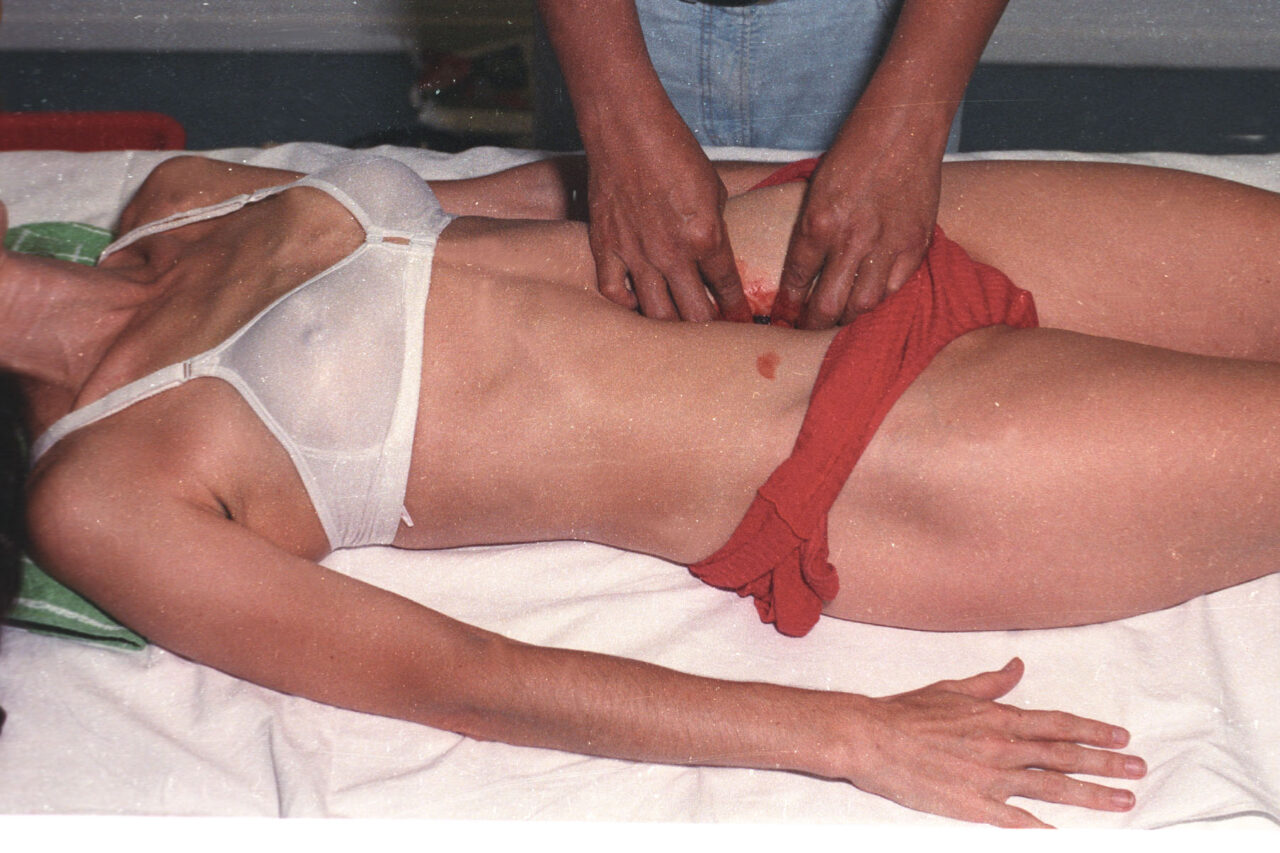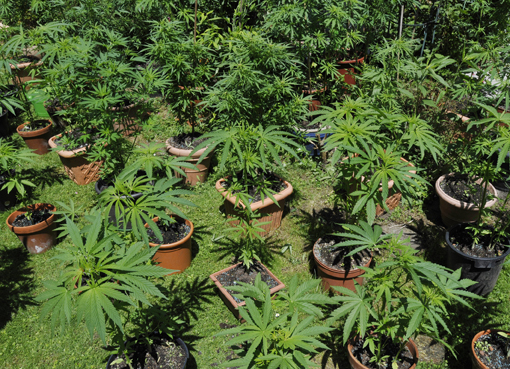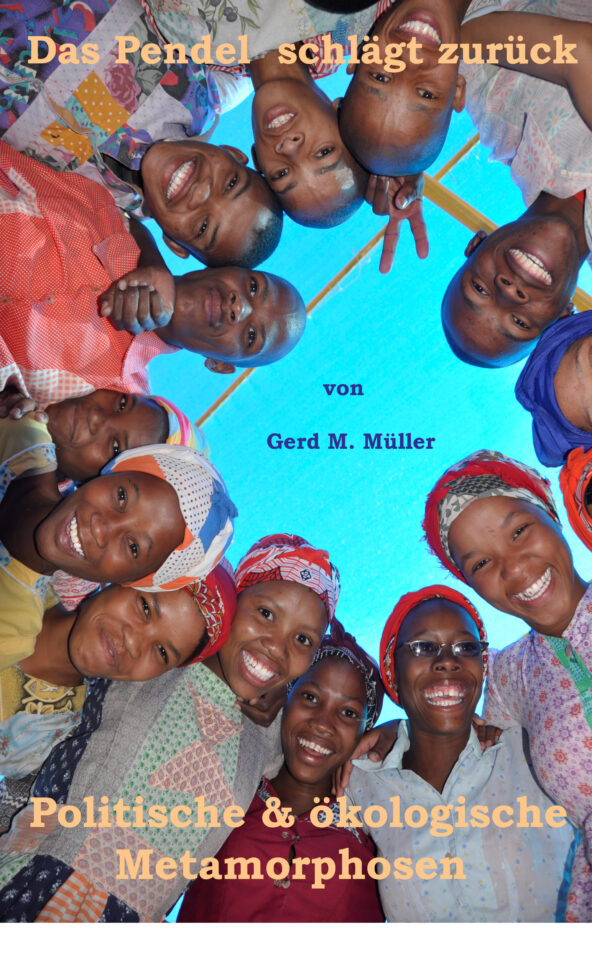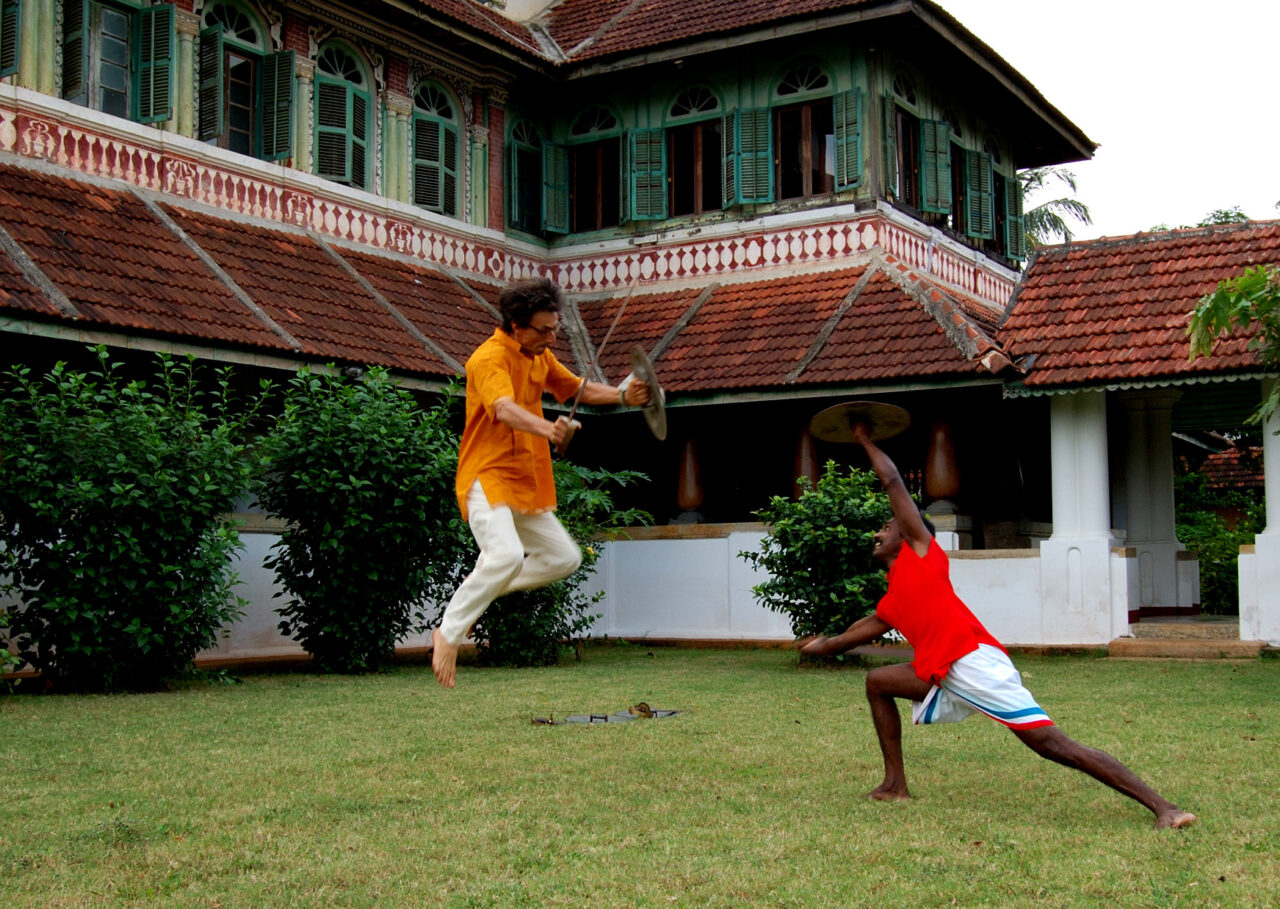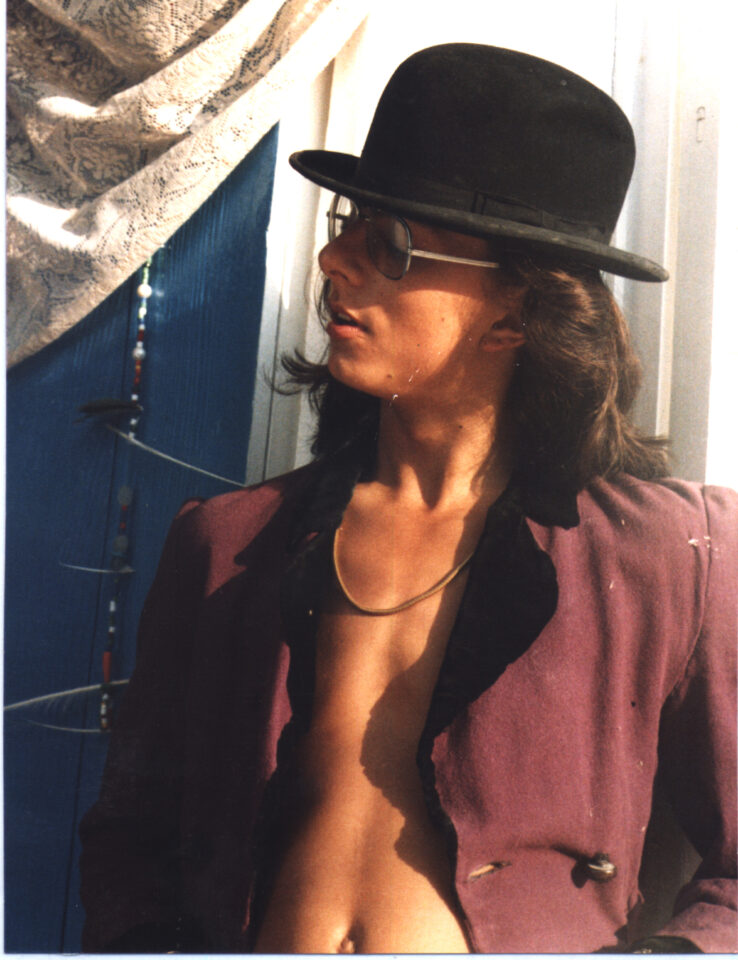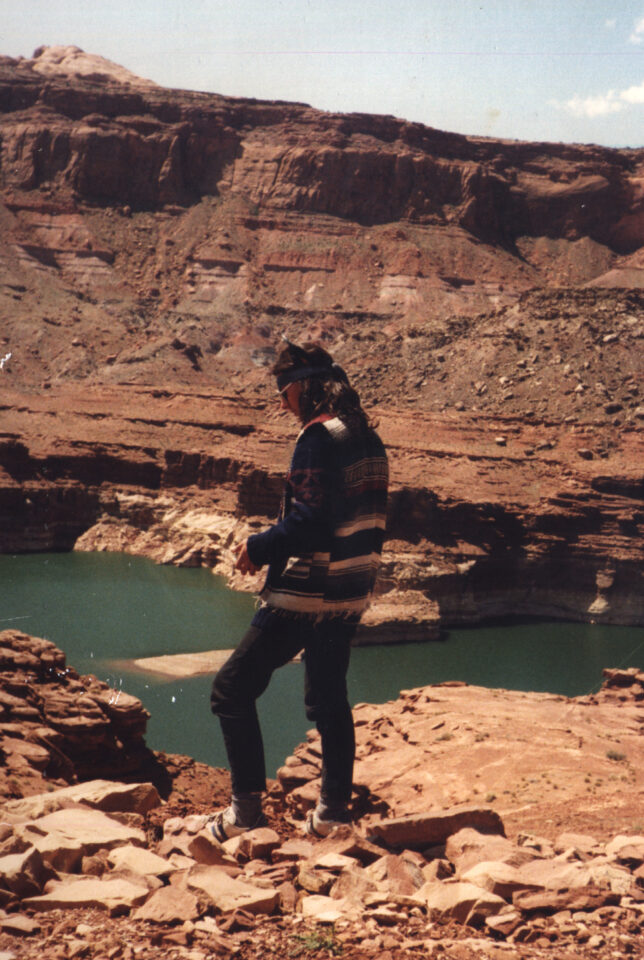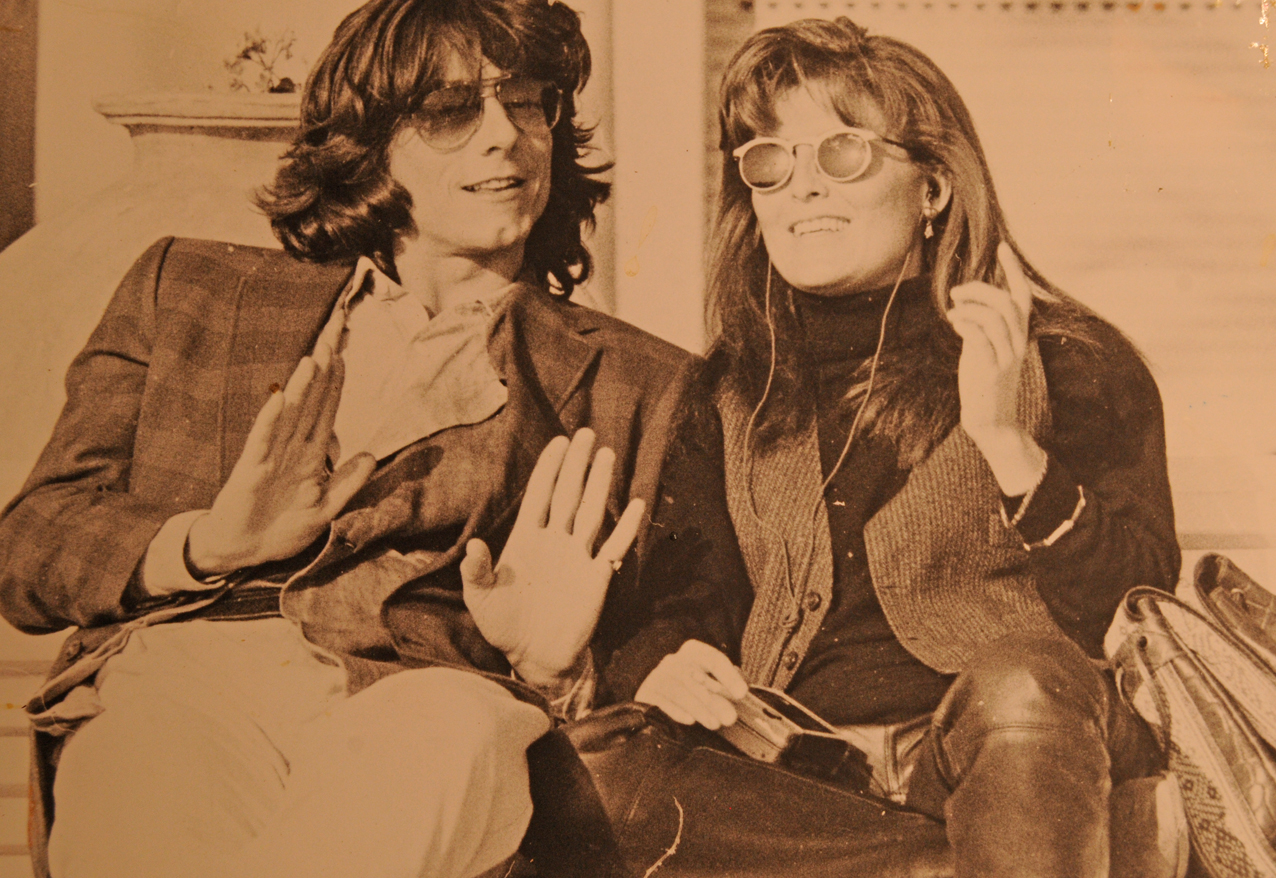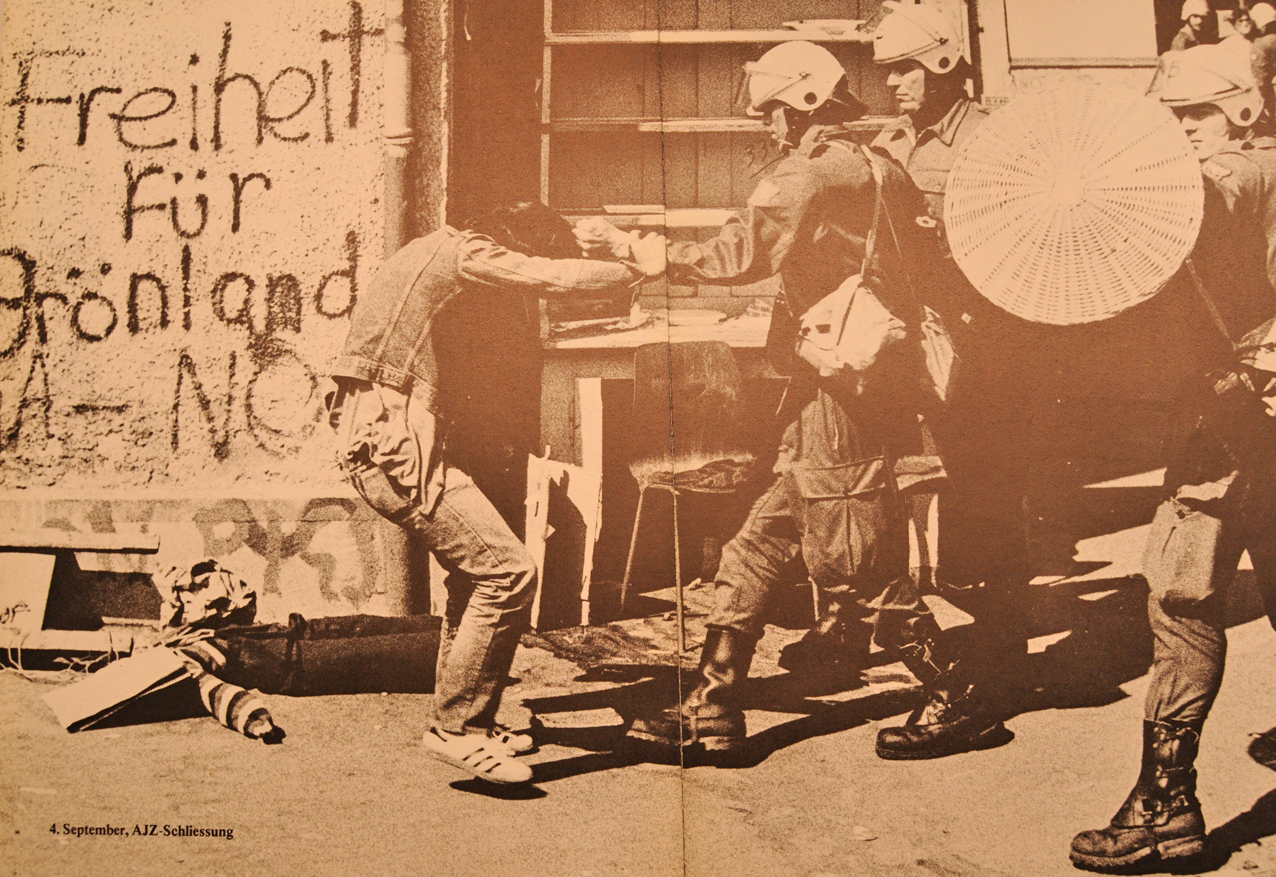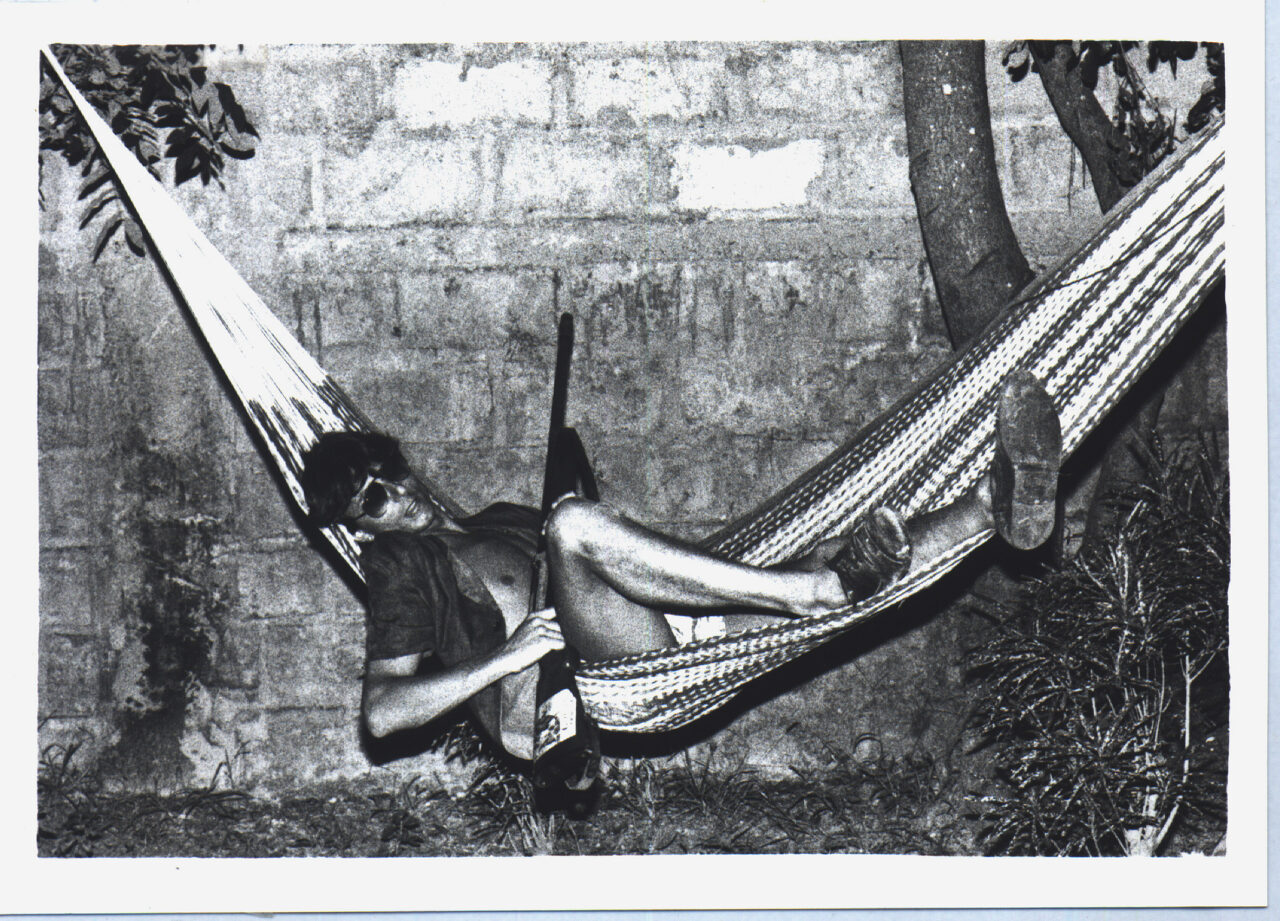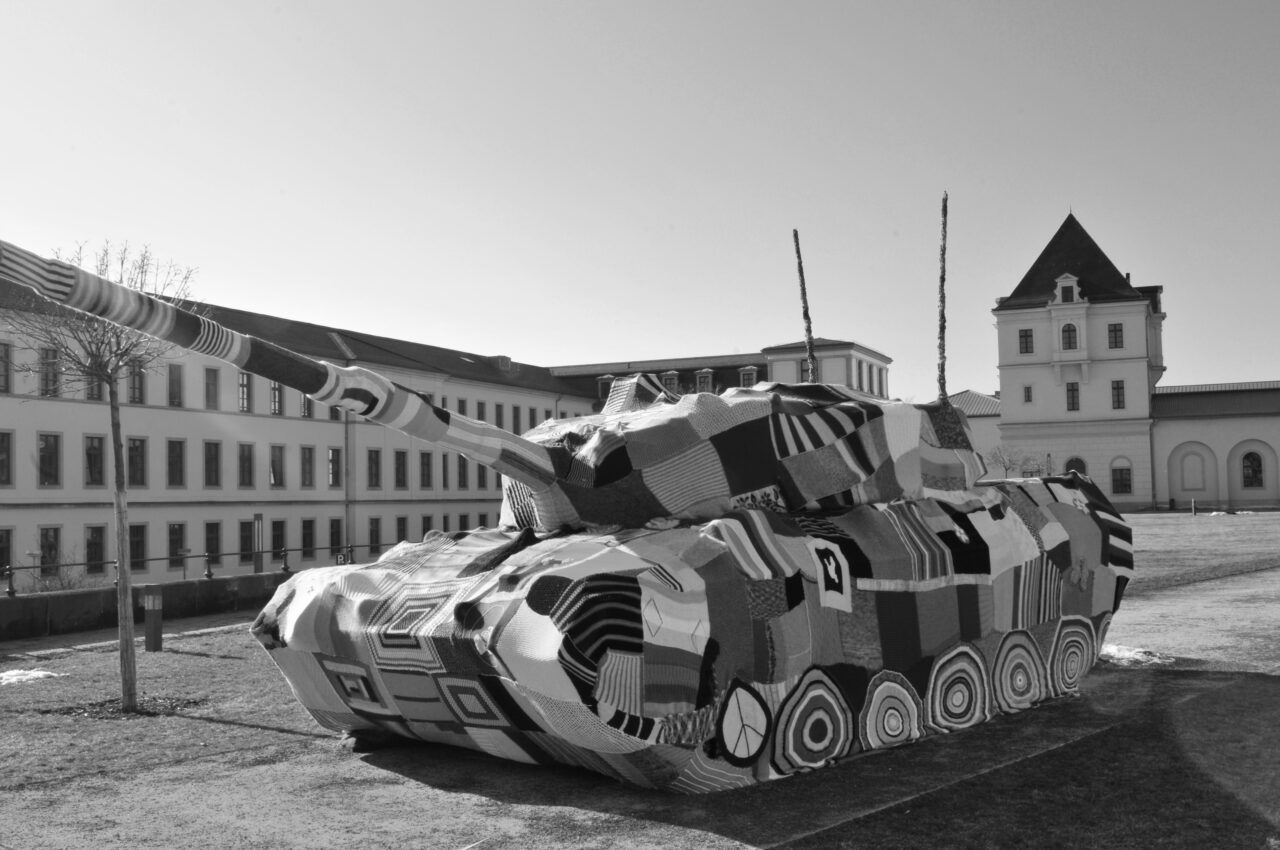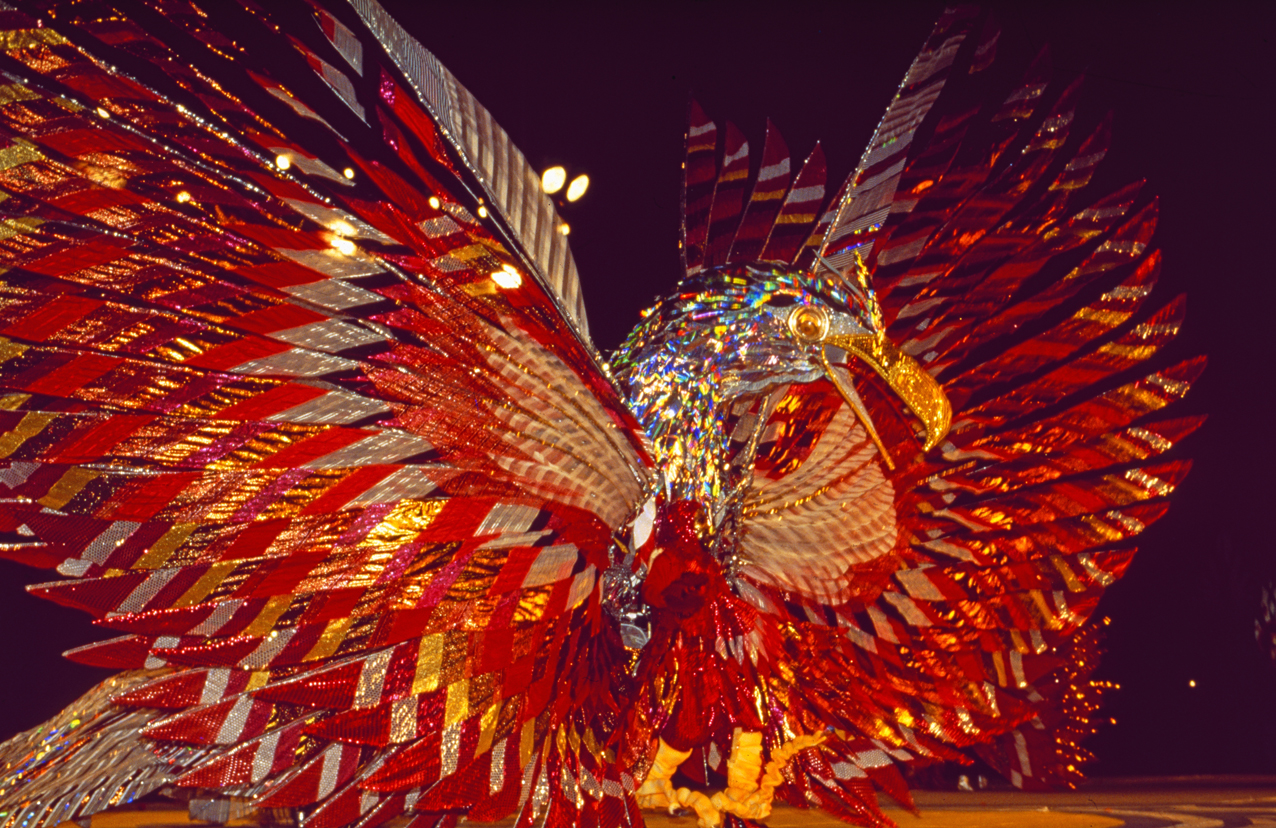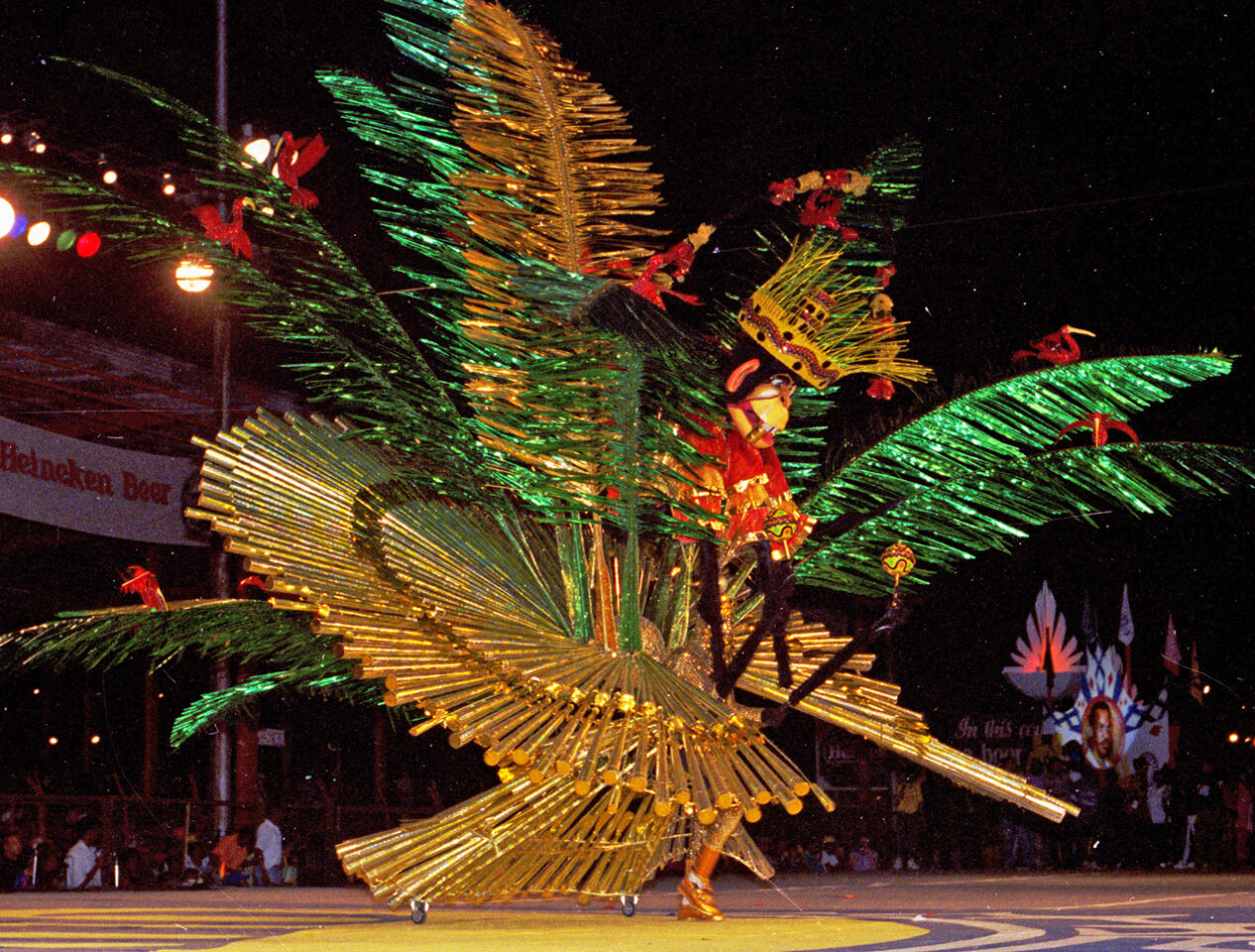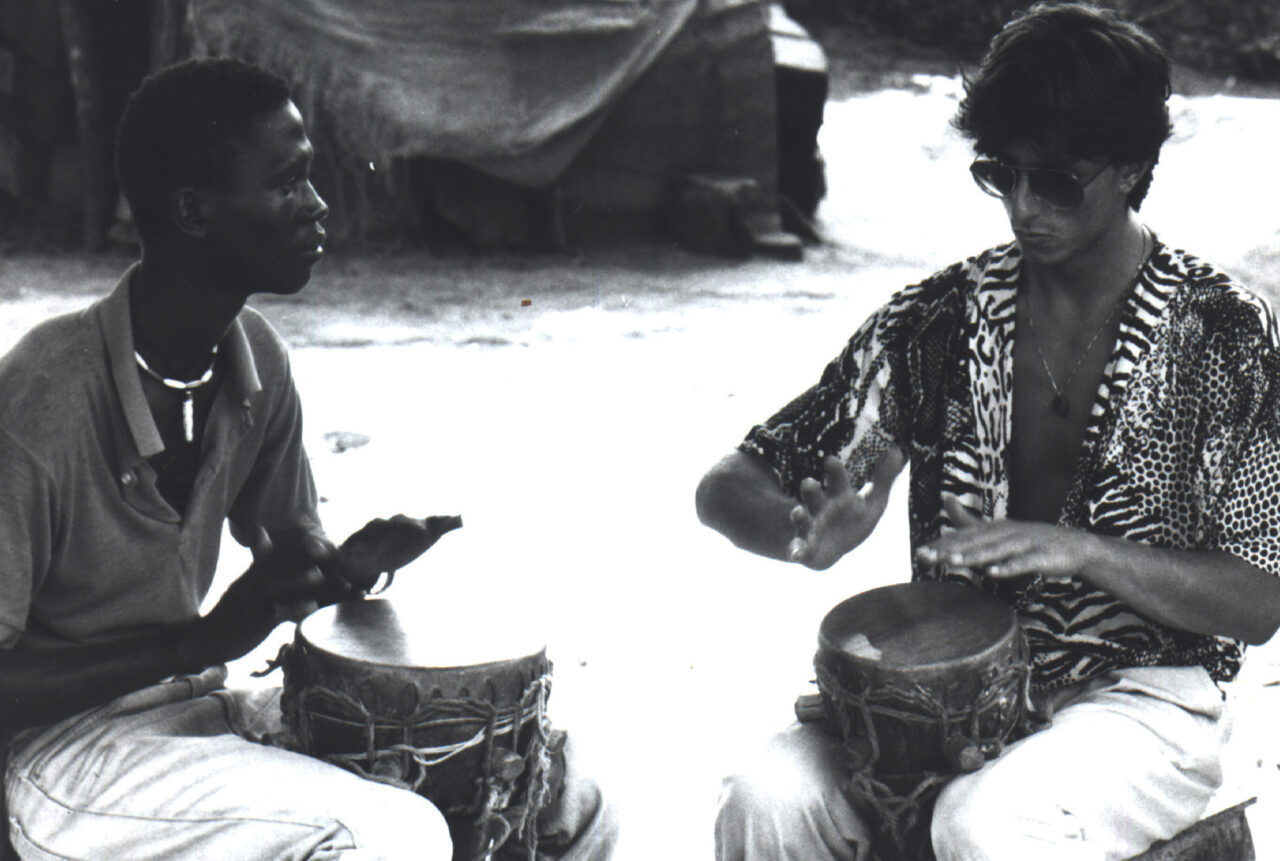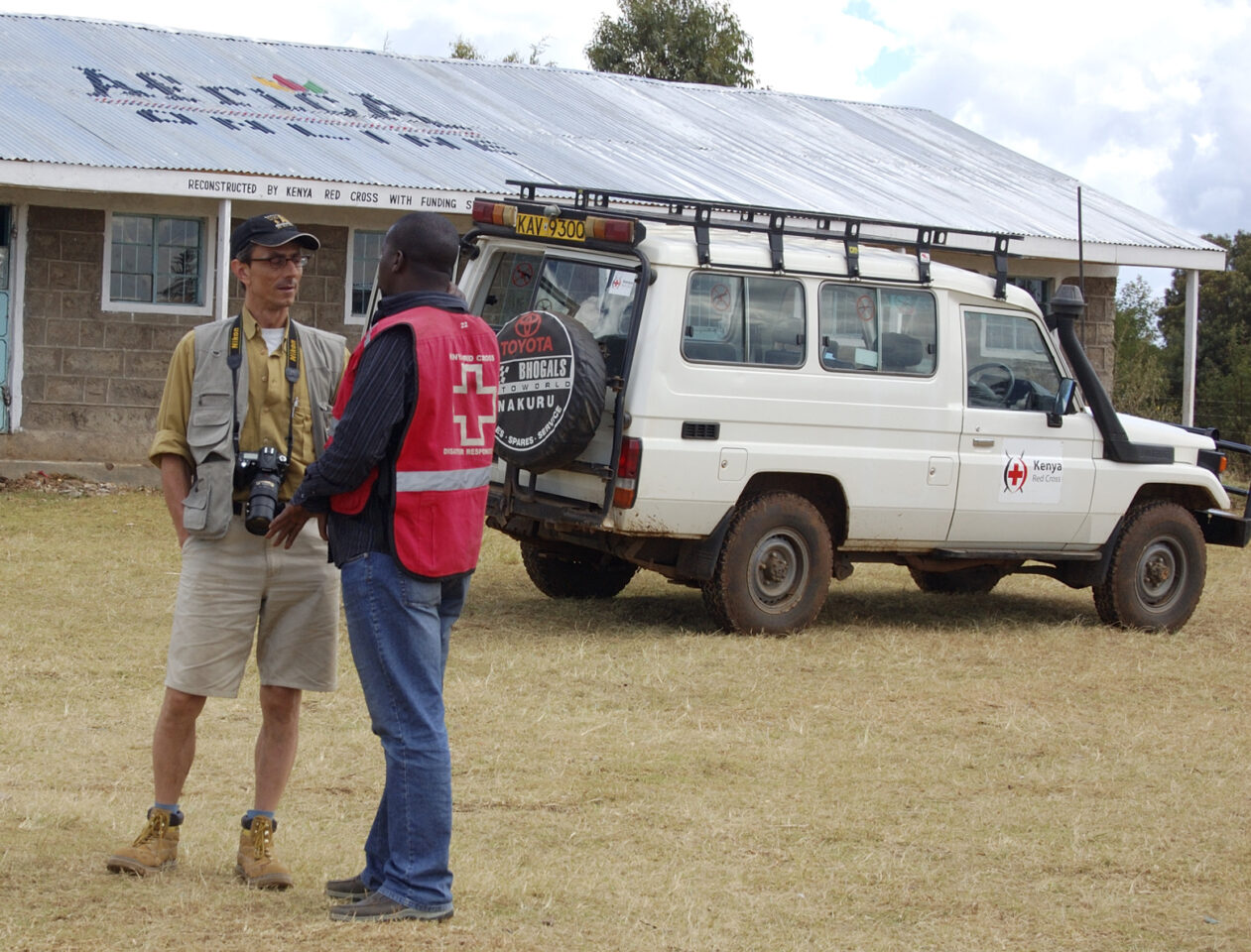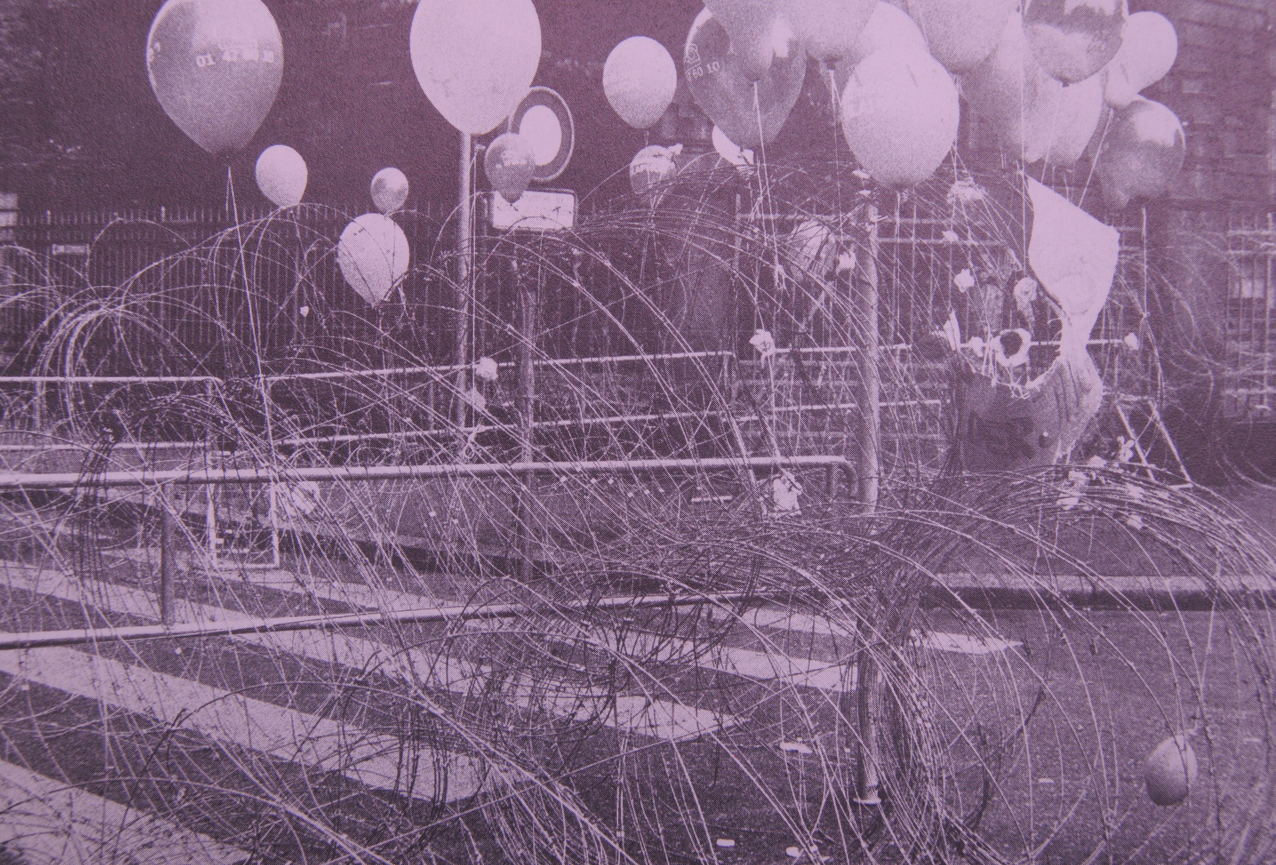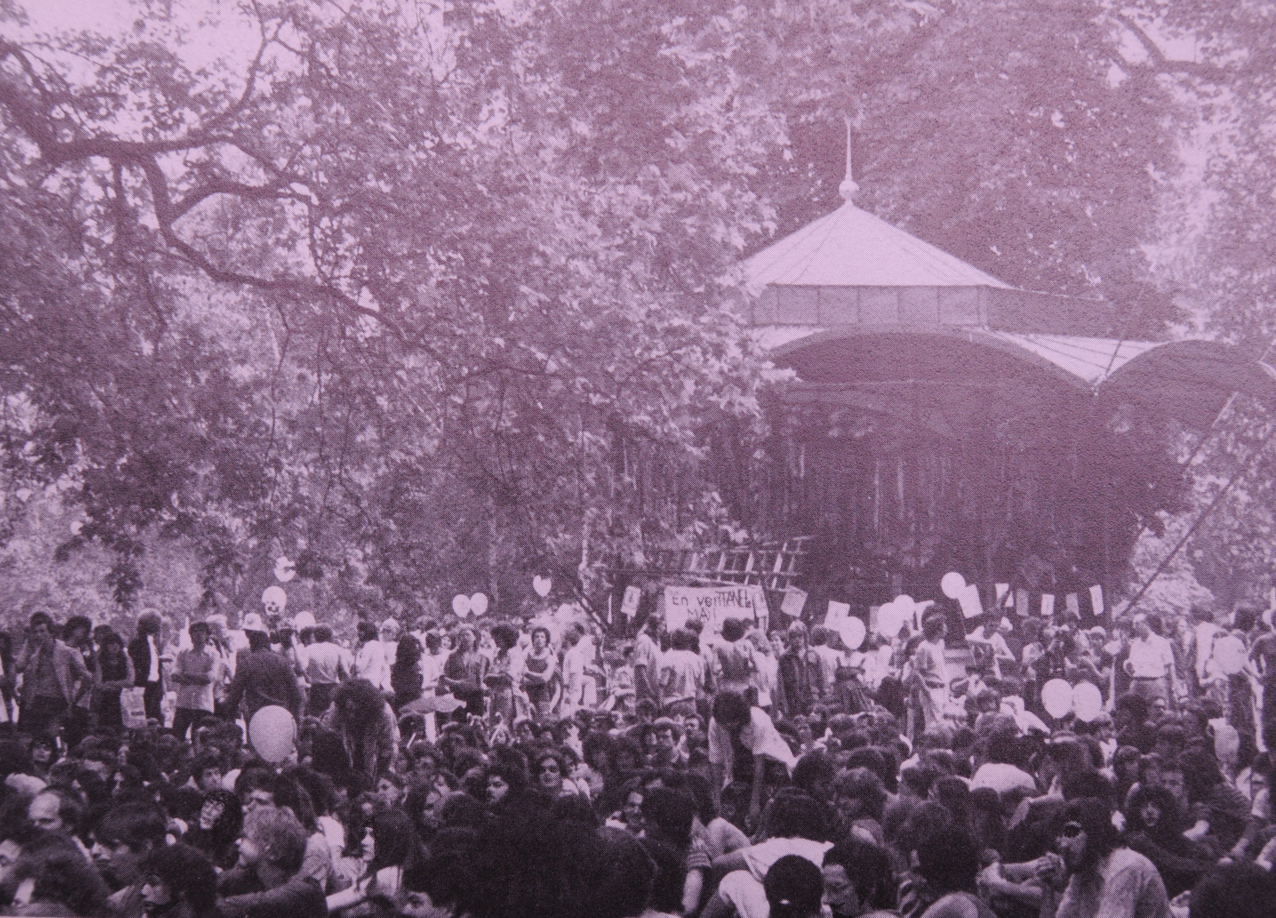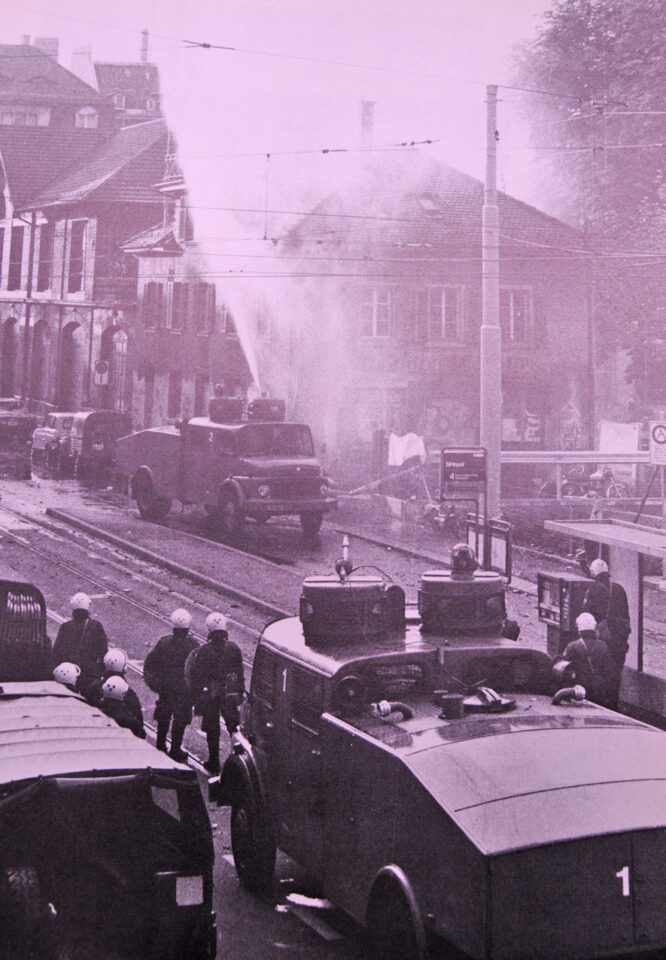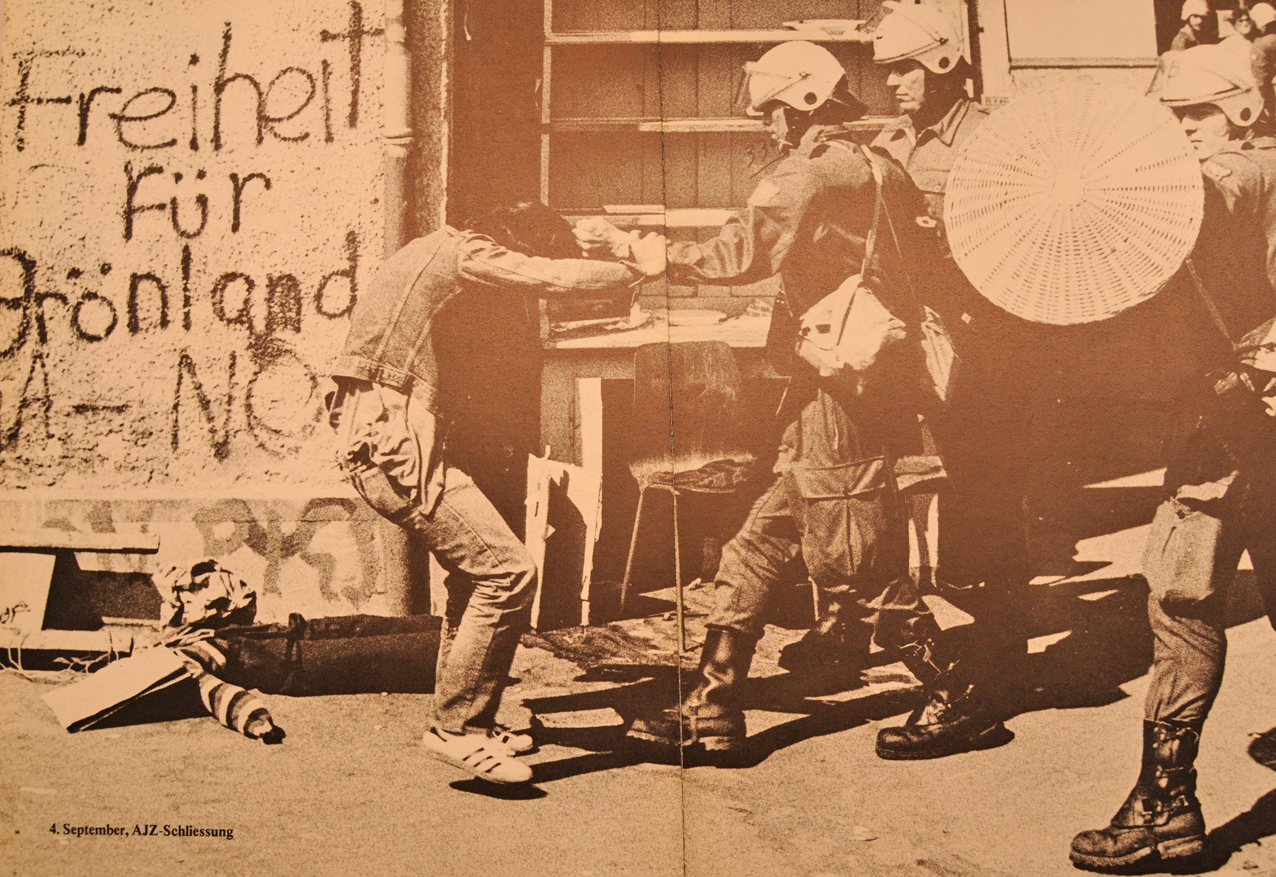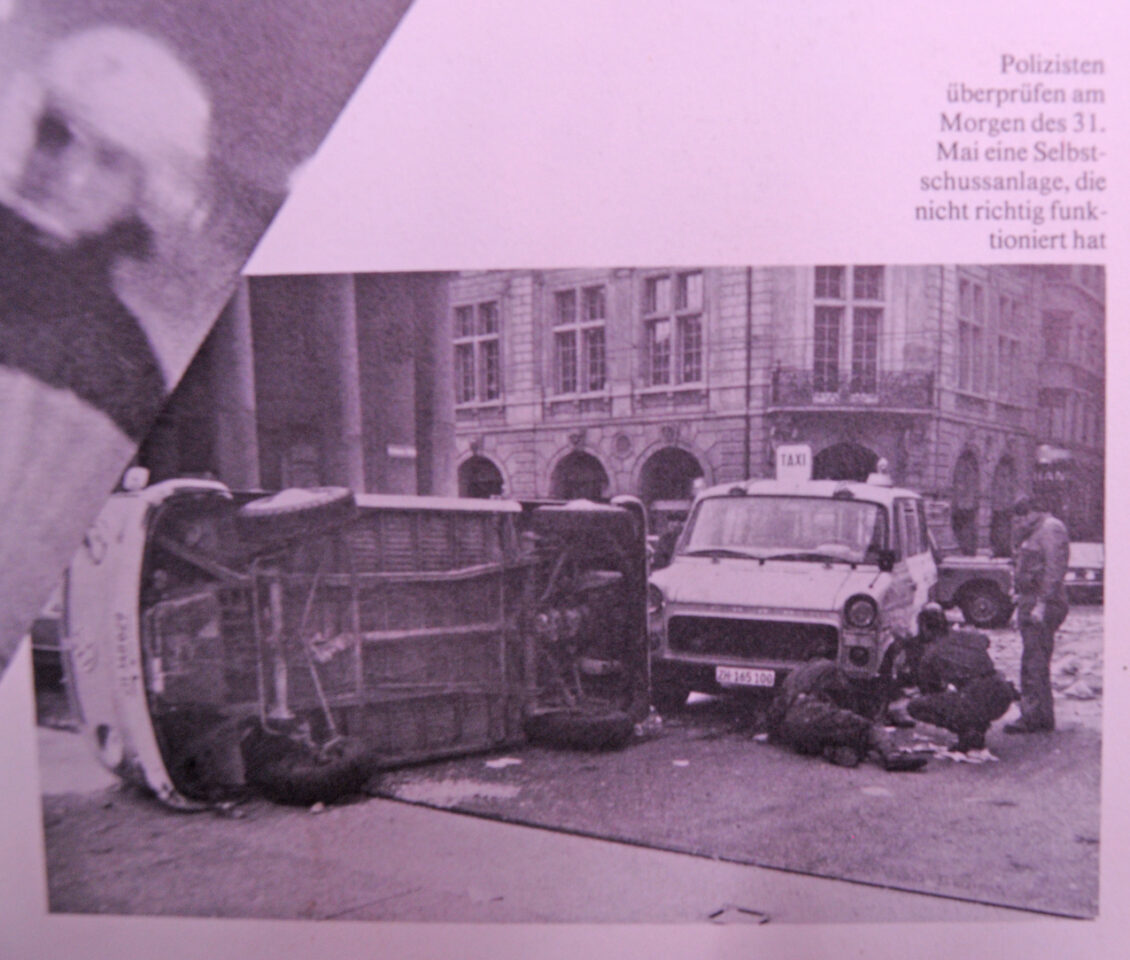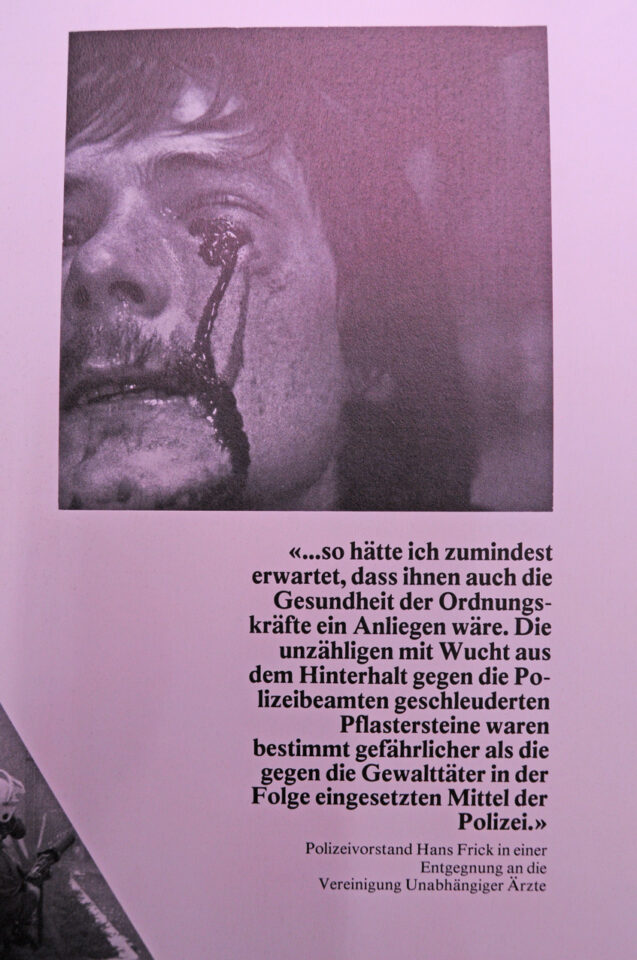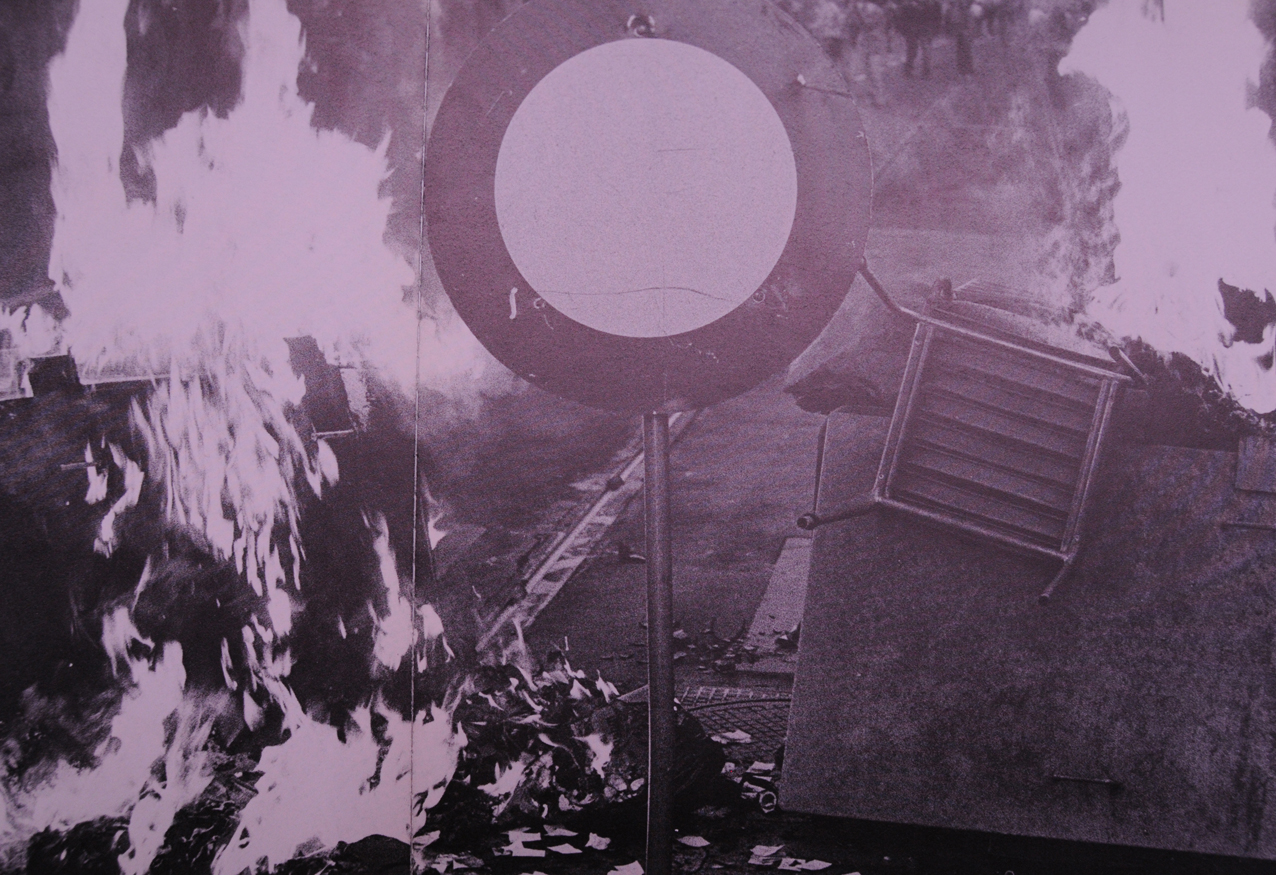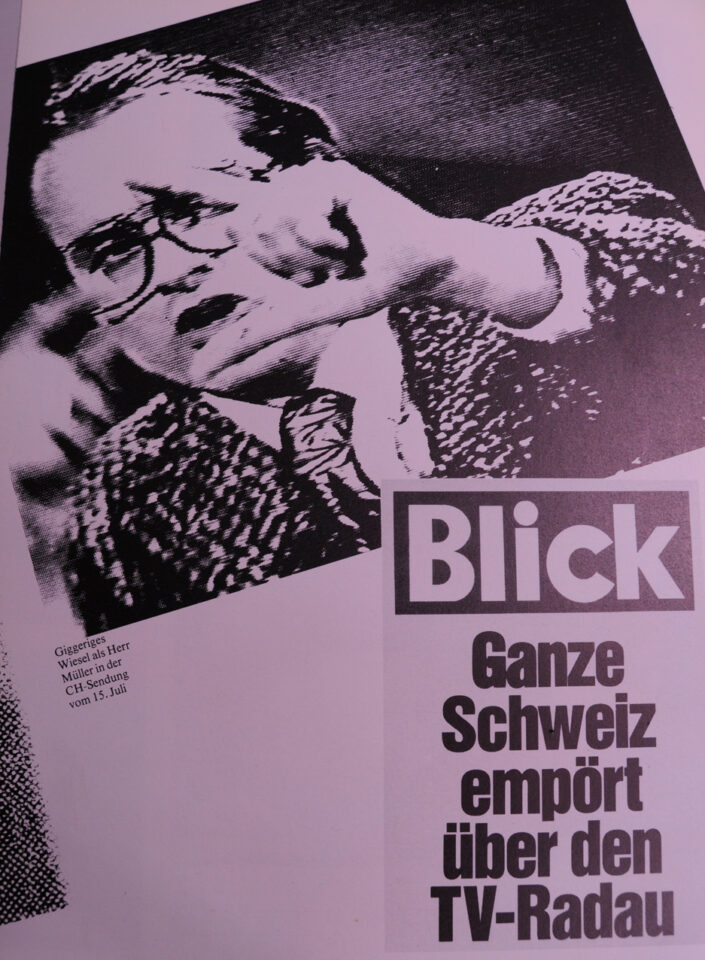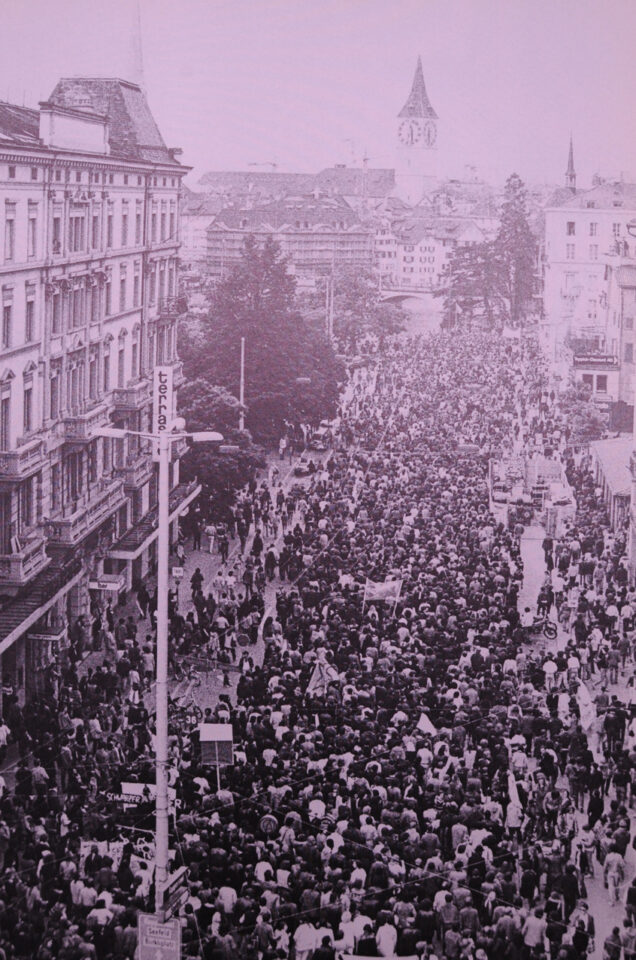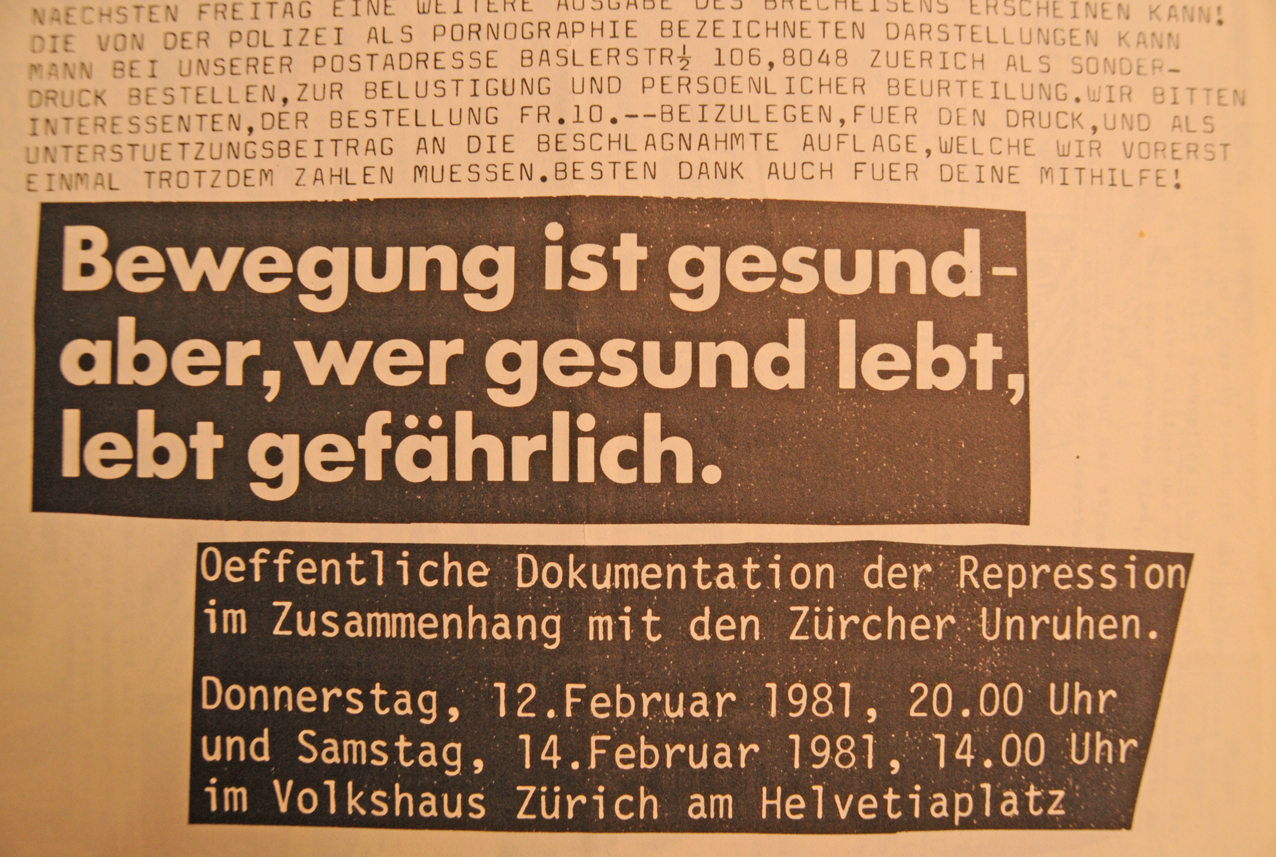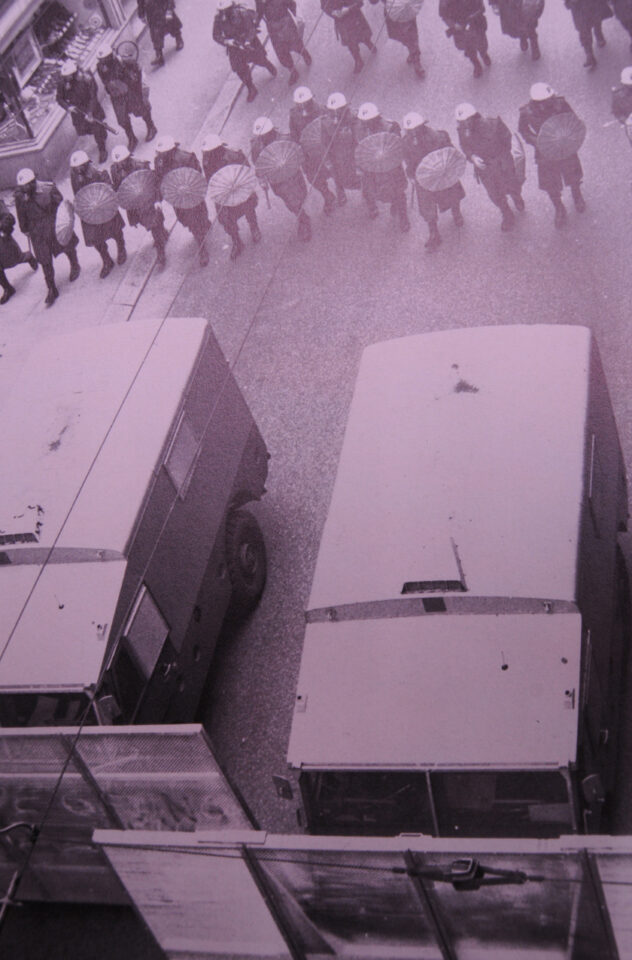Please note, that this is a (with DeepL) machine created translation. We work on a better version. Thanks for understanding.
The youth unrest and political scandals in the 80s
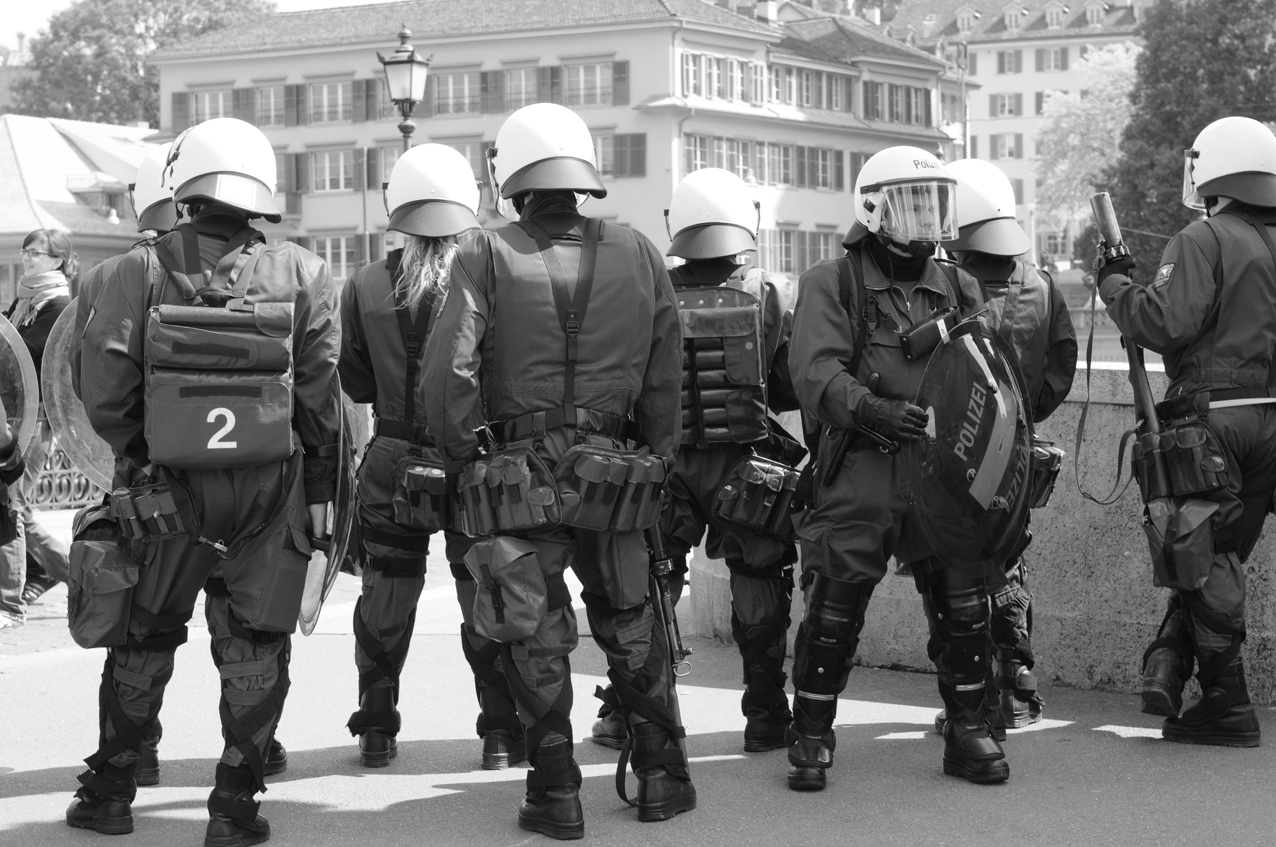
The journey around the globe to various trouble spots and cultural highlights begins in my hometown of Zurich. 1980 was the year that would shake up staid society in Switzerland and plow it over the course of the 1980s, as a tsunami rolled in on the conservative middle class and political class. In May of the same year, the „Opera House Riots“ began as a prelude to the „Zurich Youth Riots“ that followed. This was triggered by the latent dissatisfaction of the youth with the few facilities and free spaces available to them. This manifested itself most conspicuously in the upcoming vote on a city subsidy of 60 million francs for the opera house and, in return, no 10,000 francs for the „Rote Fabrik,“ at that time the only youth cultural center in the city of Zurich. It was the time of rebellion, free development, politicization, sex and drug orgies and street fights, musically accompanied by the „Rolling Stones“, „Doors“ or „Deep Purple“, who were as much our musical gods as Bob Dylan, Janis Joplin and Jil Scott Heron. Nothing was the same anymore and there was no going back! When the „punks“ emerged in the mid-1970s, first in New York, then the punk scene in London, the offshoots also spilled over into Switzerland. Soon local scenes developed, especially in Zurich. It was also the time of the anarchists and utopians. We debated and criticized fiercely, argued and showed solidarity with the oppressed peoples. In the maelstrom of this explosive attempt at liberation and boundless life, there were no end of raucous parties, but more and more hard drugs, such as heroin, cocaine and amphetamines, were added to the mix. …
Coincidentally, on Saturday afternoon, May 30, 1980, I was riding the streetcar past the Zurich Opera House, exactly at the moment when hundreds of policemen poured out of the Opera House entrance, which had been blocked by demonstrators, and beat the people lying on the ground (the so-called „cultural corpses“). They maltreated women and men alike. The naked state violence and brutal scenes took my and other passers-by’s breath away and made the rage in our bellies explode. Immediately I got off the streetcar, the first containers were burning and the skirmishes with the police began. When the police immediately started to use tear gas, rubber bullets and water cannons, the situation escalated within a few hours, as many young people were on their way home after the Bob Marley concert in the Hallenstadion and then streamed into the city center. Many spontaneously took part in the protests, which after a short time turned into veritable street fights. From then on, the police had nothing under control for three or four days and the street fights erupted with full force. The cantonal police station on Limmatquai was surrounded, two of the police vehicles were completely burned out, and the entrance to the town hall also looked a mess. The air in the Niederdorf was saturated with acrid clouds of tear gas smoke, denser than London in the November fog. The extent of the destruction was inconceivable, as was the impotence of the security forces, as the frustration of the youth and old-68s, pent up for years, turned into sheer rage, with which the demonstrators wanted to show the opera house visitors the one-sided subsidy policy. The first night of riots was followed by several more street battles in the course of that year, during which the „Bewegig“ of the autonomists formed themselves every Wednesday in the Volksversammlungen (VV’s) in the Volkshaus or occasionally also on the Platzspitz. Almost every Saturday demonstrations were announced, regularly the stores in the Niederdorf barricaded their store windows with boards at 14.00 o’clock, because the protests continued to gain momentum and formed up to large demonstrations with almost 20’000 people. The demand of the youth was simple: „We want an autonomous youth center“, an „AJZ“ must come! And that „subito!“
Legal? Illegal? „I don’t give a damn!“ was the motto of the rebellious youth
On the shores of Lake Zurich, topless bathing was widespread and women enjoyed the freedom and the pleasures of the new independence that the pill and thus the possibility of autonomous contraception gave them to live fully, which also expressed itself in uninhibited sexuality and polygamy or in the form of the first gay and trans parties. It was not a crime among us at that time and was not frowned upon for either women or men to have sex with dozens of partners and to try out different partnership models in the course of a year. „Sex, Drugs & Rock & Roll“ or rather „Amore et Anarchia“? Well, why the agony of choice? Preferably all together! Every kind of restriction was rejected, pure hedonism was the goal and the time of the birds of paradise had dawned. We wanted to experiment on all levels without restrictions and try out free love, while unmarried couples were not even legally allowed to live together at that time. That’s how prudish Zurich and the whole of Switzerland was back then. So it was all the more astonishing that the girls just melted away like ice cream or took the reins themselves, flirted fiercely and were out for a one-night stand. Anyway, back then, as a young man, every now and then you were uninhibitedly hit on by women who had only one goal, to share lust and bed and try out all kinds of things. An equally aphrodisiac and inspiring time, which is still unparalleled today! The women were shining lights for us, many of them very feminist self-confident and eager to experiment. „Emancipation, yes of course, we said to ourselves, and finally introduced women’s suffrage by political means. One (wo)man, one vote“ applied equally to men and women in the youth movement. There were a great many women activists who either made themselves heard or simply did what they wanted and how they wanted it, and no one from our circles was bothered by it. We, that is also the men, put make-up on each other and often walked through the streets to the „Rote Fabrik“, the „Drahtschmidli“ or the „AJZ“ with black painted lips, colorful painted faces and fluttering hair. …
In the maelstrom of Swiss political scandals
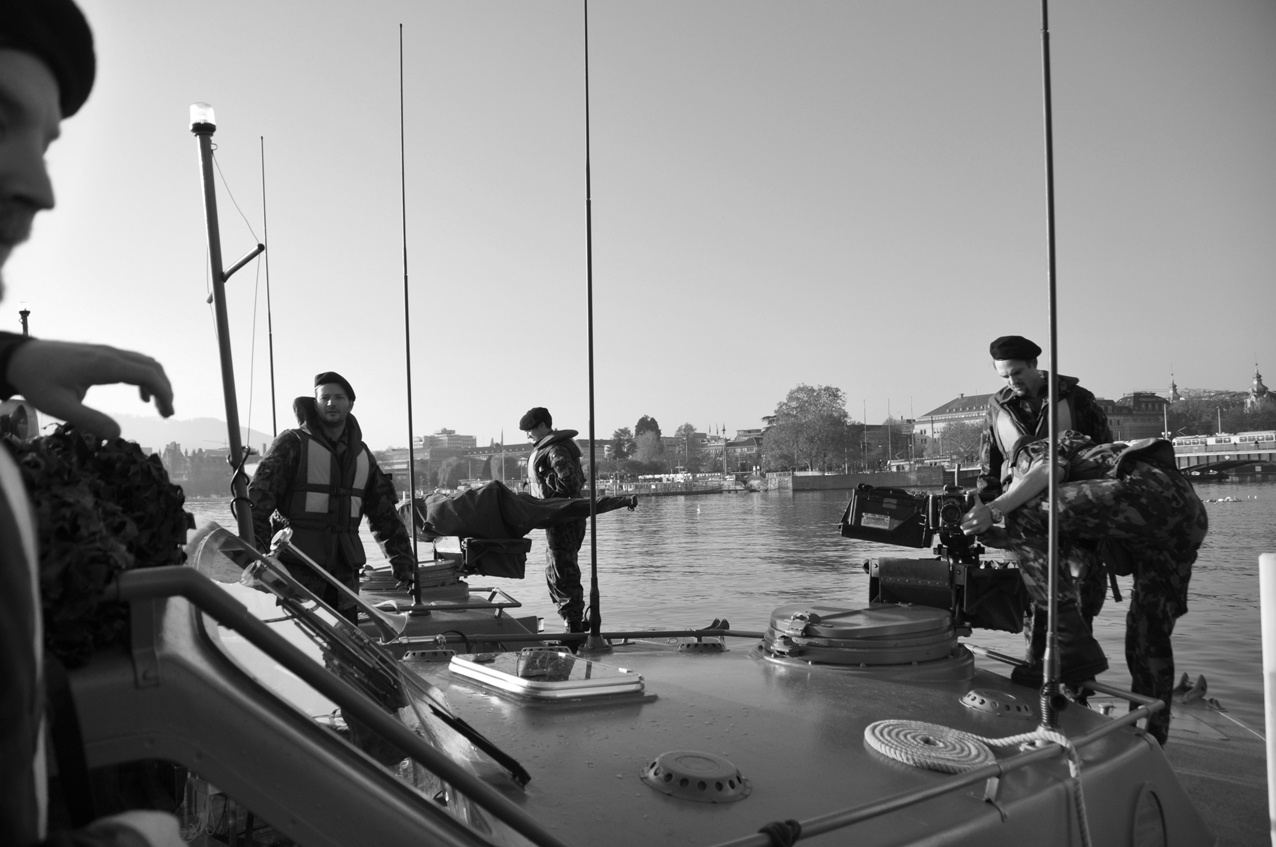
In 1990, it came to light that both the federal authorities and the cantonal police corps had created some 900,000 „fiches“ on politically suspicious persons. According to official figures, more than 700,000 individuals and organizations were recorded, meaning that over a tenth of the population was classified as subversive. The radius of observation initially targeted foreign anarchists, Swiss socialists and trade unionists, writers, unwelcome political refugees and foreigners who were often expelled. With the rise of anti-communism, left-wing politicians and trade union members in particular were monitored. The official goal of the „fiching“ was to protect the country from subversive activities directed from abroad. The fight against subversion was a widespread slogan during the Cold War. The Parliamentary Investigation Commission „PUK“ brought to light how broadly this woolly term was understood. As the documents of the „Nach-richtendienst und Abwehr“ (UNA) sub-group revealed, zealous state protectors also considered „alternative“, anti-nuclear activists, „Greens“, peace and Third World activists to be potentially dangerous, because they could be communist-immigrant, enemy- or foreign-controlled or otherwise manipulated. So I, too, ordered my „fiche“ from the police and the Ministry of Justice, which turned out to be more detailed than expected, as far as the movement profile and contacts were concerned, but otherwise was very insignificant, except for the many black spots in the 14-page protocol, which was probably more intended to cover and protect the top identities than to bring to light state secrets, anti-state activities or a „treason“ of the monitored person. It showed the blind zeal of the authorities and the sad reflection of their informers. Very few of us were Marxists, Leninists, Maoists or communists or enemies of the state even if the slogan: „Make cucumber salad out of the state“ was chanted. There was a lot of state propaganda to shoot with cannons at sparrows. But we „chaots“ never received a „ticket to Moscow“. …
Then there was another political scandal: The „P-26“ secret lodge (Project 26) was a secret cadre organization to maintain the will to resist in Switzerland in the event of an occupation. It was set up in 1979/1981 as the successor to the Special Service in the Intelligence and Counterintelligence (UNA) subgroup and was disbanded in 1990 by Federal Councillor Moritz Leuenberger after it was made public by a Parliamentary Investigation Commission (PUK). P-26 members were not supposed to be armed in peacetime, but the illustrious secret society did not care about that. It was planned that they would become active as a group on the orders of any government-in-exile that might remain abroad, in order to serve as a source of intelligence; a combat mission was not envisaged, for that was reserved for the army alone. Nevertheless, the underground organization hoarded weapons and amassed large ammunition depots. …
Switzerland as Apartheid Aid to the Boers
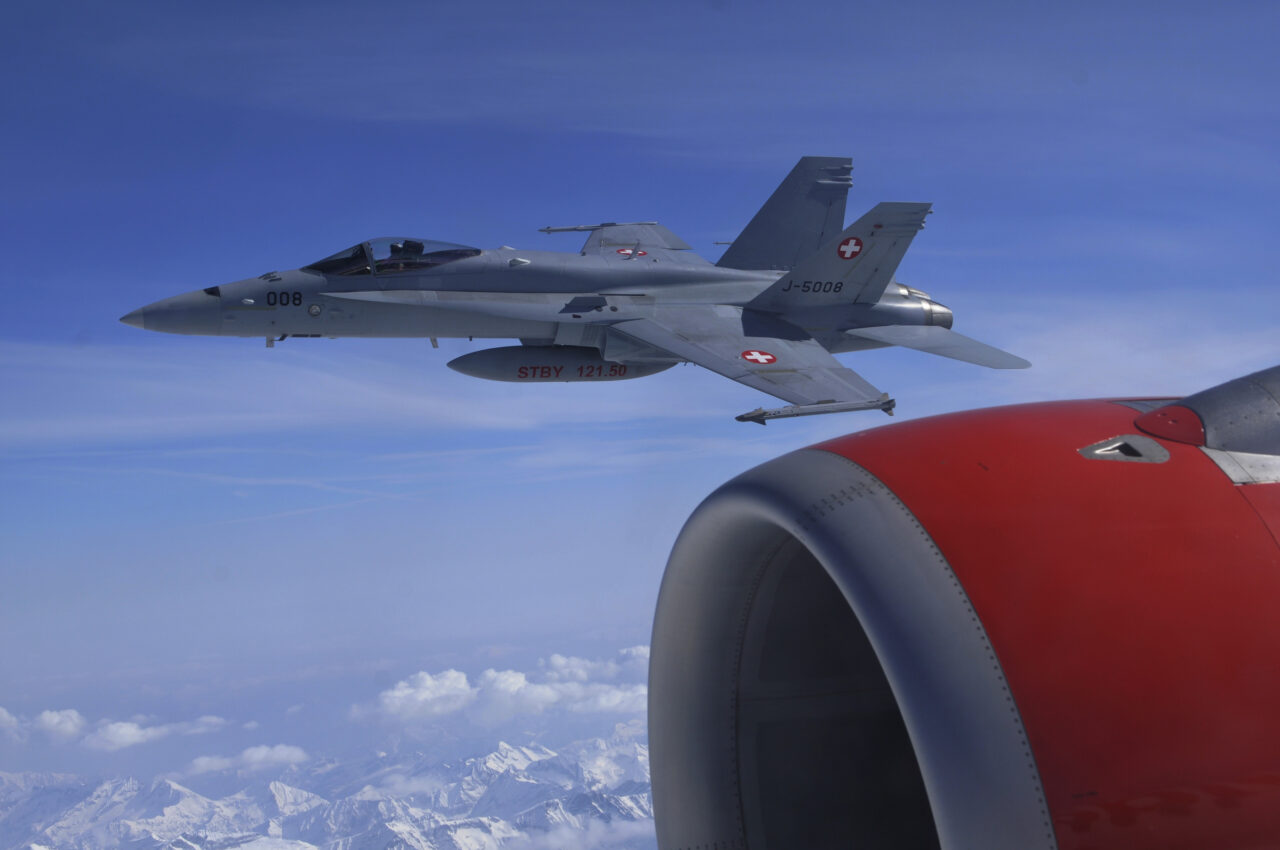
Peter Regli was such a cult figure of the „Cold Warriors“ and, as head of the Swiss intelligence service from 1991 to 1999, an illustrious, shady secret service figure. He organized secret pilot exchanges with the apartheid regime in the early 1980s. According to former South African intelligence chief Chris Thirion, the intelligence services of Switzerland and South Africa also agreed in 1986 to exchange know-how on chemical weapons. On January 25, 1988, the head of South Africa’s NBC weapons program, Wouter Basson, who later went down in history as „Doctor Death,“ and police general Lothar Neethling met with representatives of the „AC Laboratory Spiez“ in Bern. Under the „Project Coast“ the military doctor Basson wanted to nip possible uprisings of the black population in the bud with B- and C-weapons at that time. „It is a horrible idea that Switzerland could have secretly participated in this diabolical plan and could have been involved in the extermination of tens of thousands of blacks. Sources from the „NDB“ environment lead to the secret meetings of the „Club de Berne“. This informal organization was founded in Berne during the Cold War in 1971. It brings together the heads of all the secret services and the federal police from about ten countries, including Germany, the United States, Great Britain and Switzerland, and is still operational today. Switzerland was one of the founding members. The initiator of the „Bern Club“ was the Italian intelligence chief Umberto Federico d’Amato. The aim at that time was to build up a common cipher system, which also served well for intercepting foreign nations and in 2020 led to the „Crypto-Affair“… In the mid-1970s, the „Club“ was given an active role in taking action against left-wing terrorist organizations such as the „RAF,“ the Red Army Faction in Germany, and the „Red Brigades“ in Italy. After the terrorist attacks of September 11, the „Club“ gained increased importance as a body for political consultation between intelligence and state security services.
In 2001, the „Club“ initiated the Counter Terrorism Group (CTG). This group has reportedly been running a European intelligence center in The Hague since 2016. Since 2016, exploratory talks have been underway with „Europol,“ as the „CTG wanted to network with the police structures of the EU or individual member states. In 2017, German MP Andrej Hun-ko described the „Berner Club“ and its informal association „CTG“ as „hardly controllable. He also criticized the increasing secretiveness of police work. In Germany, riots broke out in Chemnitz in 2018 on the occasion of the controversy surrounding statements made by Hans-Georg Maassen, president of the Office for the Protection of the Constitution. His speech to the „Berner Club“ on October 18, 2018, resulted in his transfer to temporary retirement. By participating in the „Club de Berne“, Regli received information from the „CIA“ and the „Mossad“. But Regli went too far in doing so, „by taking too high a risk of endangering the security of the country and the international obligations and neutrality of political Switzerland. The fact that Regli was able to exchange information with „CIA and „Mossad also had to do with other persons who had his back and opened doors for him, such as the head of the internal intelligence service „DAP“. Urs von Daeniken and his superior, Peter Huber, both members of the „Club de Berne“. They fell out of favor after the „Fichenaffäre“ in 1989 and were cold-cocked due to public pressure. …
The 1980s were thus marked by great political upheavals, which the youth movement had triggered and thus politicized an entire generation, because the domestic political upheavals also had a lot to do with the international situation. With the schemas of the Cold War, the Vietnam War, the Six Days War and invasion of Israel in the Palestinian territories, the liberation movements in Latin America such as the Sandinistas in Nicaragua, the Tupamors or the „Sender Luminoso“ in Peru, as well as the struggle of the „Red Army Faction“ (RAF) in Germany and the „Red Brigades“ in Italy. Fueled by this, young activists were also inclined to abolish the army and shut down nuclear power plants (sometimes a reaction because of the Chernobyl nuclear accident). So we looked far beyond the horizon and showed solidarity or got involved with the Sandinistas in Nicaragua, who wanted to say goodbye to dictator Somoza, and with the Palestinians. The imperialist skirmishes of the USA in Cuba, Grenada and Panama also infuriated us and so it is no wonder that we went out into the world to discover new things and to abolish old ones. …
Attacked by a Guardia Civil special unit
Let me briefly recount at this point the Lanzarote adventure involving an operation by the Guardi Civil anti-terrorist special unit on our boat. We, a handful of people, were living in Playa Blanca on the Canary Island of Lanzarote at the end of the 70’s on board a sailing boat owned by a Swiss who lived in the USA and had arrived here only a few days before. A French skipper, a Moroccan boat boy, a Briton and the American friend of the Swiss boat owner had brought the boat here from France. Then there was a dispute between the boat owner and the skipper the night before about the fee for bringing the yacht from the south of France to here and the longer wait in Playa Blanca. The dispute escalated, first the Frenchman wanted to sink the boat, which the crew could fortunately prevent, then the Frenchman hissed in a rage and we already thought „that’s it“. But the „nasty guy“ took revenge on us by giving the Guardia Civil an anonymous call from Arecife airport before he left, telling them we had weapons and drugs on board. Then, the morning after the skipper left at 5:30 a.m., we were jolted out of a deep sleep because suddenly a herd of elephants stampeded on the boat, then military orders were heard and when I was the first to stick my head out of the hatch, I looked in at four submachine guns not half a meter from the tip of my nose. There any movement and excitement froze immediately. I froze and was then allowed to get out, then all my boat friends too. Half a dozen heavily armed elite soldiers of the Guardia Civil stood around us. After six hours, the search of the sailboat was completed without result and our torment was over. The task force departed again. We were relieved, but the day was not over yet and still had a surprise in store for us. …
Senegal 86: Zwischen den Fronten und in der Welt der Hexen und Heiler
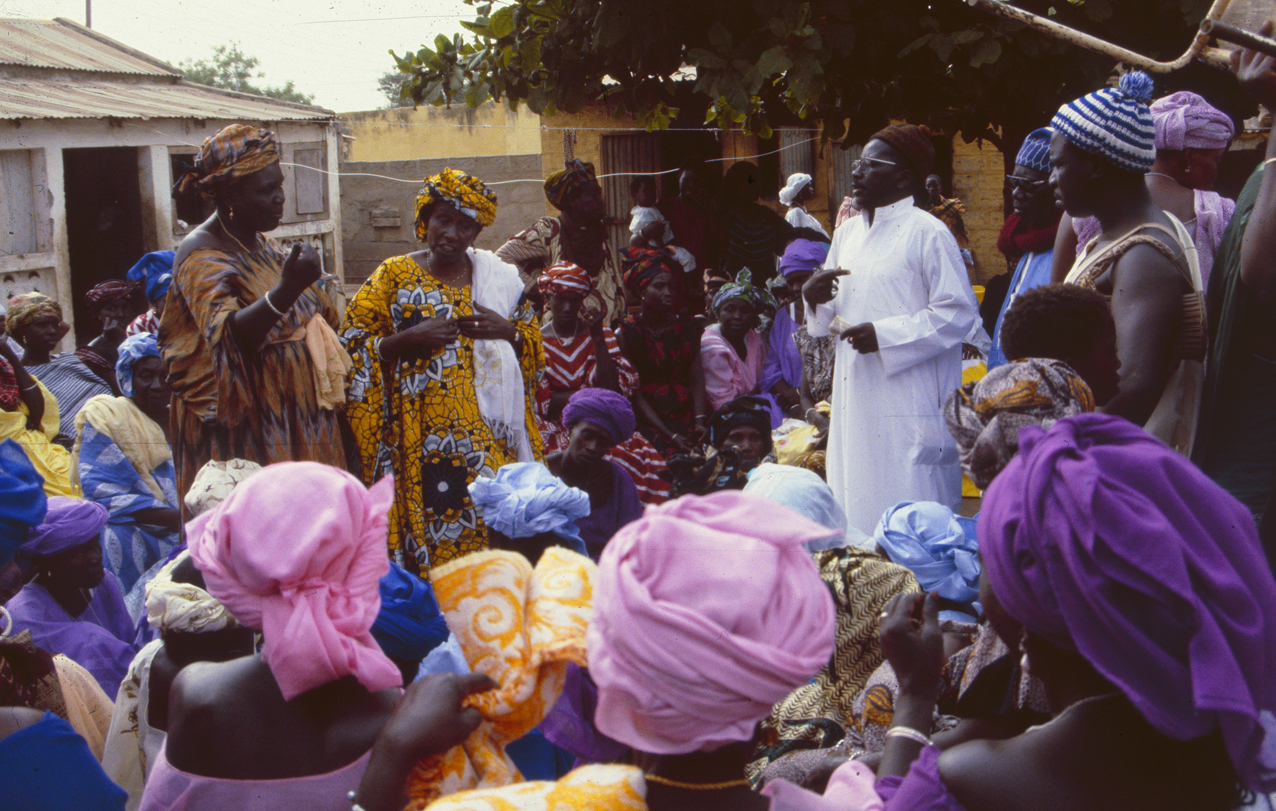
Senegal is a world of spirits, witches, healers and fortune tellers. Everything is very mystical. Curses are cast and people are bewitched, and somehow everyone is afraid of them. That’s why everyone wears a boubou, a lucky charm that is supposed to protect them. The dress cult is also legendary. The most beautiful, very colorful dresses and costumes are hawked in Dakar. The colorfully painted pirogues, the dugout canoes, line up on the beach in the hustle and bustle of fishermen and traders. As a means of transportation, there are minibuses that travel in all directions and stop wherever a passenger wants to get on or off. Dakar is an extremely vibrant metropolis. Day and night, because only from the evening hours the temperature is pleasant, while over noon it rises up to 40 degrees. In 1986, I was assigned as a station and tour manager first for three months in Senegal, then in Warsaw in Poland (i.e. in the then Eastern Bloc) and finally in London for another three months. On the first resident manager assignment in Senegal, there was a lull (as well as in Covid times), because at that time „AIDS“ had just appeared on the radar and medical science was still puzzling over where the virus came from and how it was transmitted. Therefore, there was not much going on at „Club Aldiana“ near M’Bour, here on the coast about a four-hour drive south of Dakar. Due to the „AIDS“ crisis, which drastically reduced African tourism, I had time for a short trip to the south of Senegal to the Casamance and also passed through Gambia. In a small town I rented a bungalow and walked around with my camera in the wilderness near the border and was suddenly stopped in the bushes by a troop of soldiers of the military of Guinea-Bissau and interrogated for hours. Since the commander spoke only Portuguese, it took me a while to learn that there was a conflict over the oil reserves in the border area between the two countries and I remembered a TV report a few days ago that the parties to the dispute were meeting in Geneva for negotiations at exactly this time. This was my lifeline and trump card, as a Swiss in this precarious situation. So I tried to make it clear to the commander that it would not be advisable if they captured me and thus endangered the negotiations in Geneva. He understood and, thanks to a relatively generous donation of money, let me leave unharmed. Relieved, I ran back to Casamance, that is, to Senegal. Once there, I had no more cash to pay the rent for the lodge. To do so, I first had to travel a day’s journey away to Zuiginchor to change the traveler’s check. So I told the hotelier about the frontier experience and my donation, which included the rent, and then walked exhausted to the bungalow to go to sleep first. But it did not last long, then two military jeeps drove up before my hut and eight weapon staring, Senegalese soldiers, got out. They had orders to escort me to the military governor,“ they said to me. „What’s going on now?“, I thought, trying to slow down the adrenaline rush. Half an hour later I was sitting in front of the military commander, who questioned me about the border incident. He had been told about it by the landlord and wanted to know more. „Shit“, I thought to myself, but today is a busy day, is war diplomacy starting all over again now? Now it’s a matter of playing everything down as much as possible and saying as little as possible, I thought to myself. I practiced this for a good four hours with the Senegalese commander, after which I was exhausted. Two military interrogations with hostile states in one day was a special test of endurance. …
Warsaw 86: In pole position behind the Iron Curtain
From the mission in Senegal, after only one day’s stay in Zurich, I went straight to Poland. On my arrival in Warsaw, where a „LOT“ airliner had crashed 14 days earlier, killing about 140 people, I was able to speak to an elderly man who understood English and helped me with the customs and immigration formalities for the 70 passengers from the West. When I thanked him for his help and asked his name, he replied, „My name is Henry Zwirko. This was the name on the piece of paper that the last guest in Senegal had given me. This could not be a coincidence, I thought intuitively, but was busy with the passports and entry papers, which could drag on for hours, since I was a newcomer here behind the „Iron Curtain“ in Warsaw. But the procedure was considerably shortened by the man who had introduced himself as this very Henry Zwirko, with a few gentle but firm words to the border official, and we were all able to quickly pass through border control unhindered. „OK,“ I thought to myself, the man is indeed promising. No wonder his influence reaches far, after all he is a Polish cabinet minister and his father a WW2 war hero. That much I already knew about him. But that I would meet this special man as soon as I arrived in Warsaw was quite eerie. Later, my suspicions were confirmed that the Chairman of the Board had facilitated the meeting and thus opened the door to an extraordinarily closed world for me, a world that many intelligence officers at that time, including our counterintelligence, would surely have envied. Less than two weeks after my arrival in Warsaw and an initial tour of Poland to Krakow and Zakopane, the body specialists and forensic experts from abroad arrived to investigate the plane crash three weeks earlier. As a result, our entire tour group (always around 50 to 70 people) was kicked out of the only middle-class hotel, the „Forum“ in Warsaw, from one hour to the next. From then on, we had to make do with lousy, run-down hotels for the next 14 days, sometimes sharing a hotel room in threes or a double bed in twos. Then I had enough of the disaster and had the local guests kicked out of the hotels with the bundle of dollars available, putting double or triple the room rate on the table and rented the luxury suite in the five-star hotel. As a result, things took off. …
„London 87: The first contacts with „ANC“ exiles“.
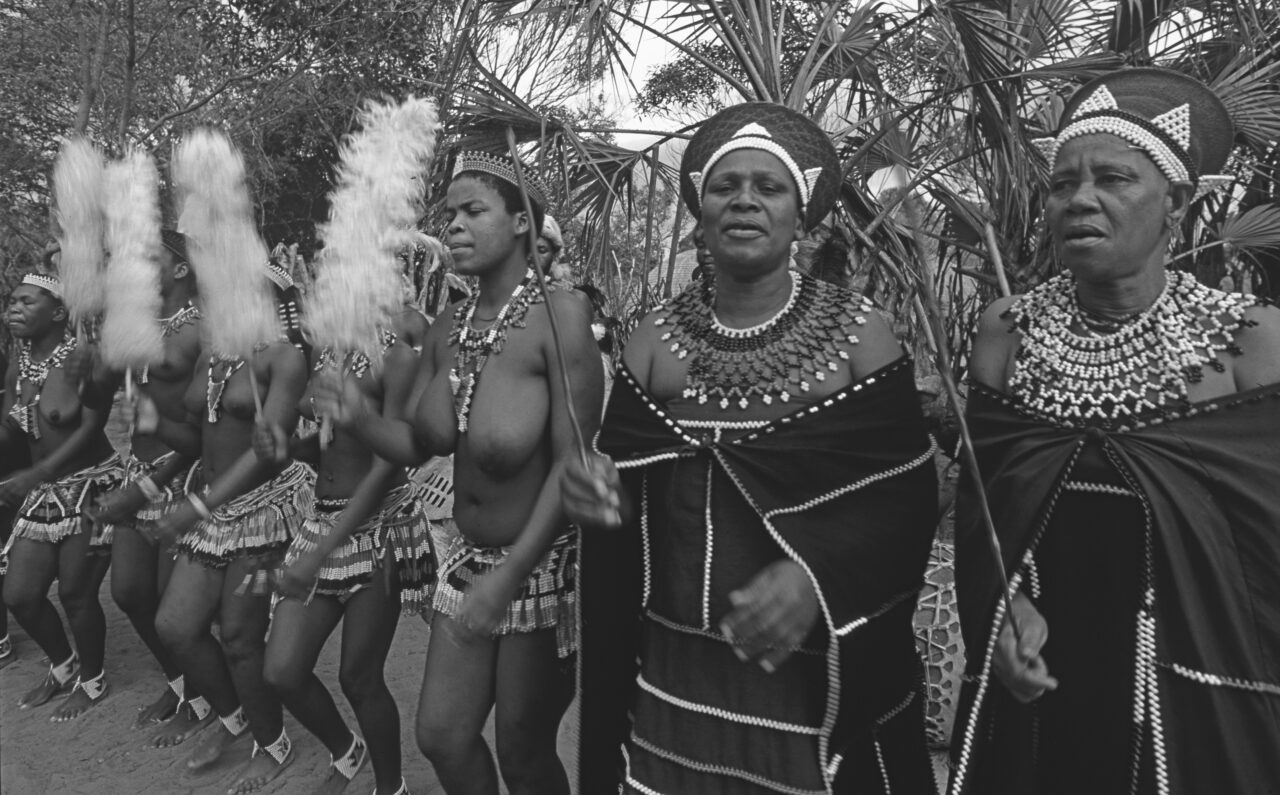
In 1979, a massacre took place in Soweto when 15,000 students protested on June 16 against being taught in Africaans from then on. 575 people died in the uprising, which lasted for months. Swiss banks doubled their lending volume. In 1980, the „World Alliance of Reformed Churches“ declared apartheid a heresy. This left Switzerland and the Swiss secret service cold. Unimpressed by the sanctions, Peter Reggli initiated the exchange of pilots with South African fighter pilots, but the Federal Council was not informed until 1986. The amount of credit granted by Swiss banks to the apartheid regime quadrupled. Year after year by 100 percent. As a result of the international condemnation of the Apartheid regime, Switzerland profited from the contemptuous, racist policy of the whites at the Cape. The „ILO“ demanded the world corporations to withdraw from South Africa and criticized the „SBG“ in particular as a sanction breaker. Nevertheless, in 1985 the South African regime receives another 75 million Swiss francs in loans from Swiss banks at its free disposal. In 1986, a state of emergency was imposed on the heavily indebted country and over 10,000 people were arrested, 1800 of whom died. „Peace became a threat to public security,“ says Archbishop Desmond Tutu, as the church paper, the New Nation, was shut down.
In 1987, when the United States wanted to punish companies that did not comply with the sanctions, South Africa’s President Peter Botha and his Foreign Minister came to Zurich to meet with „SBG“ Deputy Director Georg Meyer and the board of the „Association Switzerland-South Africa“, where they were presented on the spot with an „Order of Good Hope“ and another 70 million. And in 1989, thanks to Robert Jeker, South Africa’s regime also got a breather in the repayment of the outstanding loans of eight billion Swiss francs. This was the situation at the time that prompted me to go underground in South Africa for an inspection and further research. Switzerland’s relations with South Africa were at their most intense politically, militarily and in terms of the arms industry in the 1980s, when the enforcement of South Africa’s policy of racial segregation (apartheid) was at its strongest and was accompanied by serious human rights violations and of- fensive violence. Swiss industry has been a major player in undermining the arms embargo imposed on South Africa by the UN. The exchange of intelligence information directly contributed to the initiation of arms deals, the fight against apartheid opponents and political propaganda in favor of the South African government. Swiss industry was one of the pillars of the secret South African nuclear weapons program. The „Gebrüder Sulzer AG“ and the „VAT Haag“ supplied important components for the South African uranium enrichment, which provided the necessary fissile material for the six atomic bombs produced by South Africa. Thus, Switzerland was undoubtedly a supporter of the apartheid government in more ways than one. How did this come about? …
Underground in the fight against apartheid
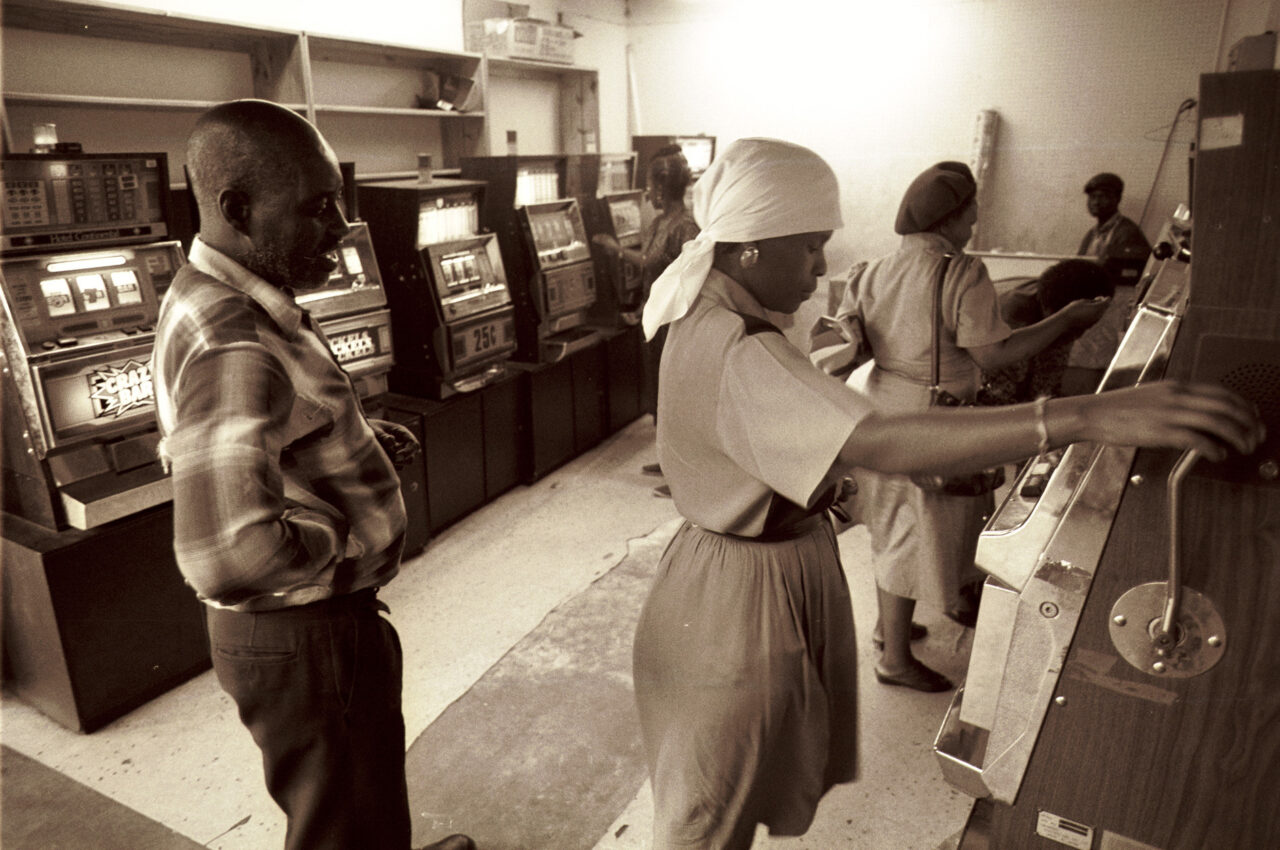
Politically sensitized by the youth unrest of the early 80s, as an opponent of nuclear power plants, a pacifist, and a conscientious objector on the political left, as well as focused on South Africa from a humanitarian point of view through my professional activities during my apprenticeship at the „Oerlikon Bührle“, I decided to fly to Johannesburg at the end of 1986 with the aim of getting to know the tense situation and the inhumane conditions on the spot, thanks to the contacts I had made with ANC exiles in London and the connections I had obtained through the „Anti Apartheid Movement“ (AAB) in Switzerland. I arrived in South Africa just at the time when the „New Nation“, one of the last liberal, critical papers of the Catholic Bishops‘ Conference under Desmond Tutu, was banned and closed down. I conducted a last interview with the just dismissed editor-in-chief Gabu Tugwana, which appeared at that time in the „WOZ“ (weekly newspaper), and was thus the first foreign journalist to see and photograph the decree of the hated Minister of the Interior. The apartheid regime censored or banned many newspapers until all possible critical voices were silenced. Spending on internal security, that is, on maintaining the racist apartheid system, swallowed up more than 20 percent of the gross domestic product. Then I dared to take the suburban train from Down town Johannesburg to Soweto, that is, to the black townships, at that time an extremely dangerous thing to do. Once you arrived in Soweto, you were quite alone and conspicuous as a white person at that time. Fortunately I had long hair and looked neither like a Boer nor like an Englishman, which probably kept many from killing me in the townships. Curiosity grew as to what I was doing here, and thanks to the „ANC“ contacts I had made in London and Zurich, I was able to reassure them, so that they trusted me and introduced me to the Town Ships. For a few weeks I lived with a family of eight in a small shack surrounded by tens of thousands of other shacks without light, electricity or water. The goal was to feel the living conditions of the blacks and their everyday life within the framework of the racist laws on my own body and to probe with my own eyes. Soon it was possible for me to move freely and safely with my black friends in Soweto. And so I myself was scared as hell when I suddenly stood in front of an armored vehicle of the „SADF“ (South African Defence Force) again and firearms were pointed at me and one of the armed men shouted down from above; „What are you doing here? At the first meeting I could think of nothing better than to ask him the same question, only an undertone sharper. „What the hell are you doing here?“ and gently pulled out my Swiss passport, which helped defuse the tense situation and they then let me go each time unharmed. …
Mandela’s release and his visit to Switzerland in 1993
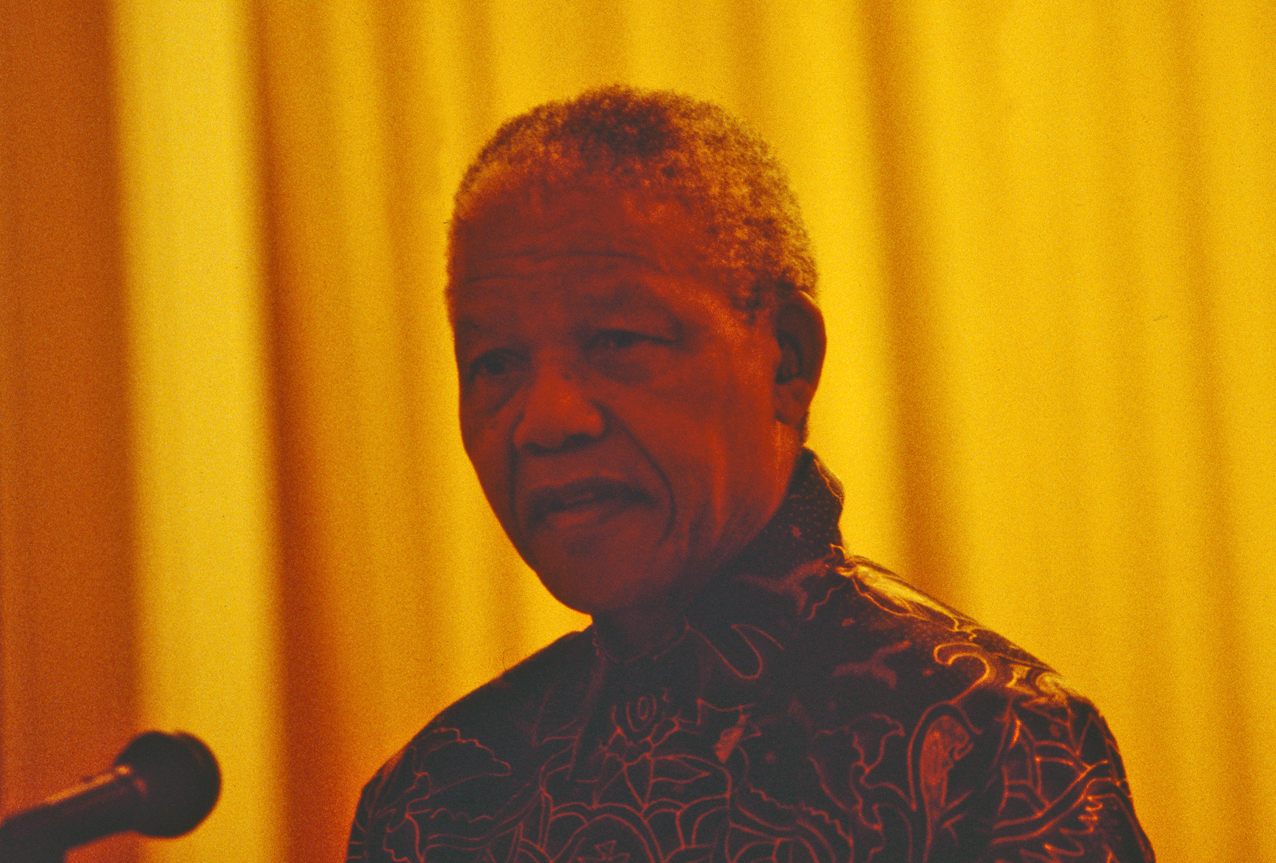
From that first trip, I developed a deep connection with the country that I visited over 20 times, meeting Nelson Mandela twice. The first time shortly after his release here in Soweto, the second time, as President of South Africa and newly elected Nobel Laureate in Zurich’s „Dolder Hotel“ in front of the „class politique“ and economic elite (National Bank President and bank representatives), when Mandela spoke about his vision of a new South Africa as a „rainbow nation“. I was also invited to this historic meeting and took a few pictures of Mandela. When he mingled with the crowd at the aperitif after his speech, I stayed discreetly in the background. But obviously Mandela had a good memory and very attentive eyes, maybe he even remembered where and when in Soweto I was the only white person standing in the crowd of blacks shortly after his release. In any case, this prompted him to approach me and ask if we had ever met. I was astonished! When I replied, „yes in Soweto,“ he extended both hands to me. That was very touching! Thereupon all present bankers and politicians in the room stared at me and wondered who the long-haired freak was here. Fortunately, this remained a secret of me, Mandela and the South African ambassador in Bern, Dr. Konji Sebati, with whom I was once a guest in the embassy in Bern at a high-ranking event. …
IKRK-Einsätze im «ANC-IFP» Bürgerkrieg
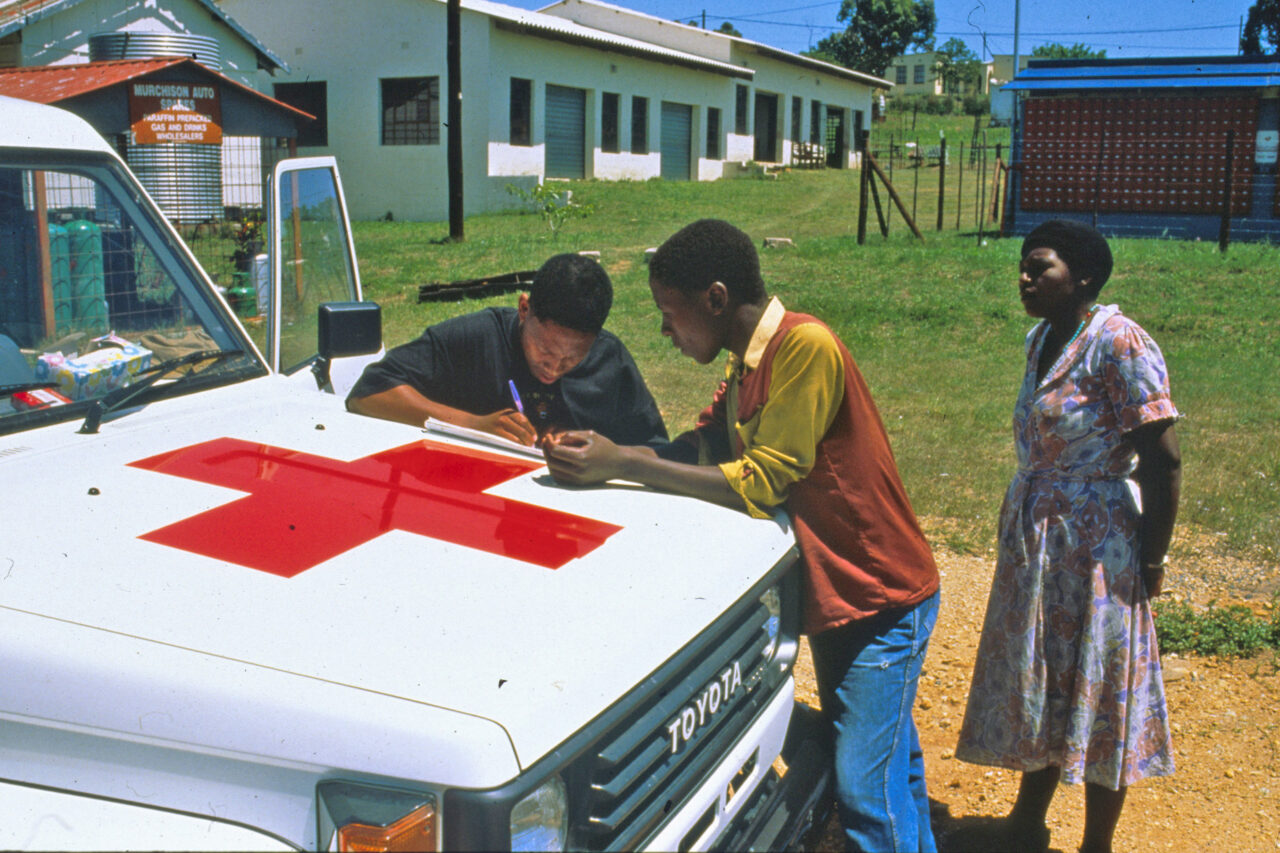
In late 1993, I accompanied a friend of mine, who was stationed in Johannesburg as an ICRC/Red Cross South Africa delegate, on his trip to the refugee camps to assess the situation there, to help the victims, and to support peace efforts to stabilize the country with a view to a democratic constitution and government for the „Rainbow Nation.“ We went to the then hotspots „Margate“ and „Ladysmith“ and „Empendle“ pro-logged the burned houses and the dead, talked to bereaved families and tried to mediate between the conflicting parties. A difficult, if not almost hopeless task. In 1994, another interesting meeting took place, with Miss South Africa Basetsana Kumalo and at her side Kwezi Hani, the young daughter of Chris Hani, who had just been murdered. Chris Hani was secretary general of the South African Communist Party (SACP), a high-ranking member of the ANC and chief of staff of its armed arm, Umkhonto we Sizwe (MK). The meeting with Hani and Basetsane took place in a casino and was observed. It was a very hot time and the spying on political actors and their families and surroundings was a well-known fact. And so I also became a target of observation. First a black man and later two white gentlemen tried to question me discreetly but emphatically and later another illustrious person tried to involve me in Gabarone, i.e. in Botswana, in South Africa’s internal power struggles. …
Thanks to the Zulu healer and book author Credo Vusama Mutwa, I was also able to visit Pollsmoor Prison in Cape Town (where Nelson Mandela spent the last years of his imprisonment) in 1997 with a team of Canadian UN health inspectors. The prison, designed for 3,000 inmates, held about 7,000 prisoners. Nearly 30% of the inmates were HIV-positive at the time, and many prisoners were held without charge for years, with many dying. The conditions we encountered were shocking. One spoonful of food in the prison kitchen was enough to give me staphylococcus and streptococcus. …
2011: Gadaffis Milliarden in Zumas und Ramaphos Händen untergetaucht
Aziz Pahad was appointed by Mandela as deputy foreign minister in 1994 and worked for the government from 1999 to 2008. Before that, he collected donations for Mandela’s election campaign and also received about 15 million from Gadaffi. The Libyan dictator also supported Tabo Mbeki. But Mbeki did not want to comply with Gadaffi’s wish to become „King of Africa“ and refused to support him, which led to Gadaffi buying Jacob Zuma as his next choice and helping him to be elected South African president. Through the decades of relations with the „ANC“ Gadaffi planned to have in the worst case a retreat and base abroad from where he could start the counterrevolution and for this he had a part of his unimaginable fortune of about 150 billion dollars (Forbes) flown to Johannesburg on 26 December 2010. The plane landed on the orphaned military base Water-kloof on the 2nd day of Christmas. Reportedly, there were a total of 179 such flights from Tripoli, all of which were performed by military pilots. The flight data was after each operation. Deleted. The value of the cargo, which was in ICRC crescent labeled containers with Libyan dialect from Syrte amounted to approximately 12.5 billion. US dollars. Besides mountains of cash also tons of gold and diamonds. Serbian George Darmanovitch, a Secret Service agent known as Zuma’s henchman, photographed the shipment upon arrival in Johannesburg and confirmed to investigators that the money was picked up by trucks from the ANC. He was obviously a little too vocal about the contents and size of the cargo. In any case, Dar-manovitch was shot dead in the street shortly afterwards in Belgrade, where he was meeting his family, and his two killers were also found dead. This was too big for Darmanovitch and his killers. From then on, Gaddafi’s billions disappeared somewhere in South Africa and only a few know where they are. In 2012, the first rumors surfaced that considerable assets of the dead dictator were in South Africa. In response, the transitional Libyan government contacted Eric Goaied, a Tunisian who was a close friend of Gaddafi. He was to search for the missing assets in South Africa. One of the reasons was that the new government had to build up an army and procure more than 200 combat helicopters and G5s as well as other war material for a good five billion, but had no money. When the Libyan government, namely Taha Buishi, confirmed the high finder’s fee (of 10 percent, i.e. $1.25 billion) for the return of the Gaddafi assets, this attracted a few treasure hunters who did not want to miss out on this deal. …
Gupta Leaks: South Africa as prey to Indian klepocrats“
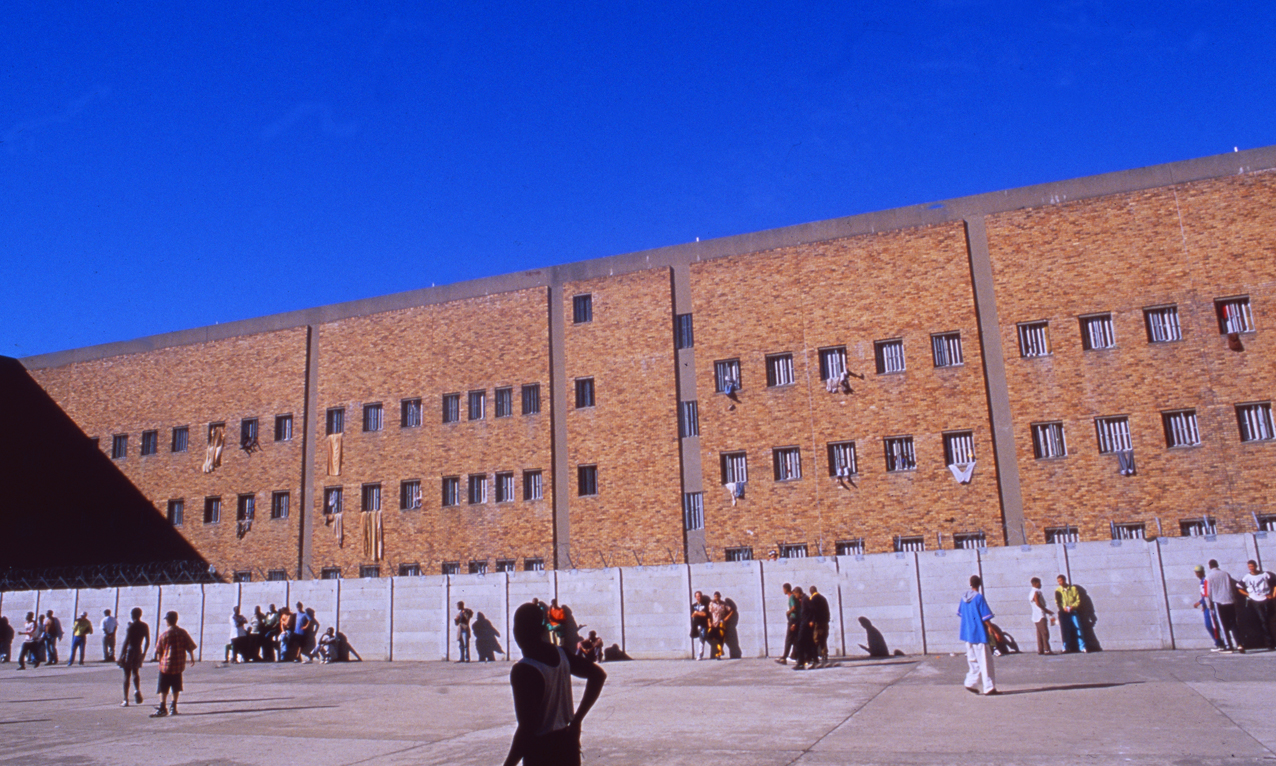
The mischief began with Malusi Gigaba when he came into government and successively filled all the important posts in state enterprises with Gupta confidants. Where is most of the public money spent and how do we get it? That was the business model of the three Indian brothers who came to South Africa with their mouse-poor father in 1993. First came „Transnet.“ „Transnet“ manages all airports, train stations and transport companies. Malusi Gigaba appointed Brian Molefi as CEO and Arnosch Sinn as CFO (2 orders for locomotives worth 5 billion went to two Chinese companies) „Mc Kinsey“ received more than a billion for consulting contracts from Salim Essa, business partner of the Guptas. 450 million commission jumped out for the Guptas on the locomotive deal. Money that flowed through offshore companies to Hong Kong and the Arab Emirates. Then Duduzane Zuma, Zuma’s son, came into the picture. He was closely associated with the Guptas and worked with them to perfect corruption and foster kleptocracy. Also, Cyril Ramaphosas, once a union leader who became a billionaire through mining company licenses at the end of apartheid, becomes Zuma’s vice president and shortly thereafter travels to Russia for a nuclear deal and the construction of eight nuclear power plants in South Africa that would cost more than $100 billion. US dollars, whereupon the „Shiva“ uranium mine was bought by the Guptas and Zuma’s son was given a leading position. This was how they positioned themselves for the nuclear deal, which was supposed to increase the windfall. And Russia wanted to achieve that South Africa is dependent on the donor country and the Zuma clan intended to commit itself with the help of the Guptas to an even greater plundering of the state. …
1986-2006: Mit den Khoi-San durch die Kalahari gestreift
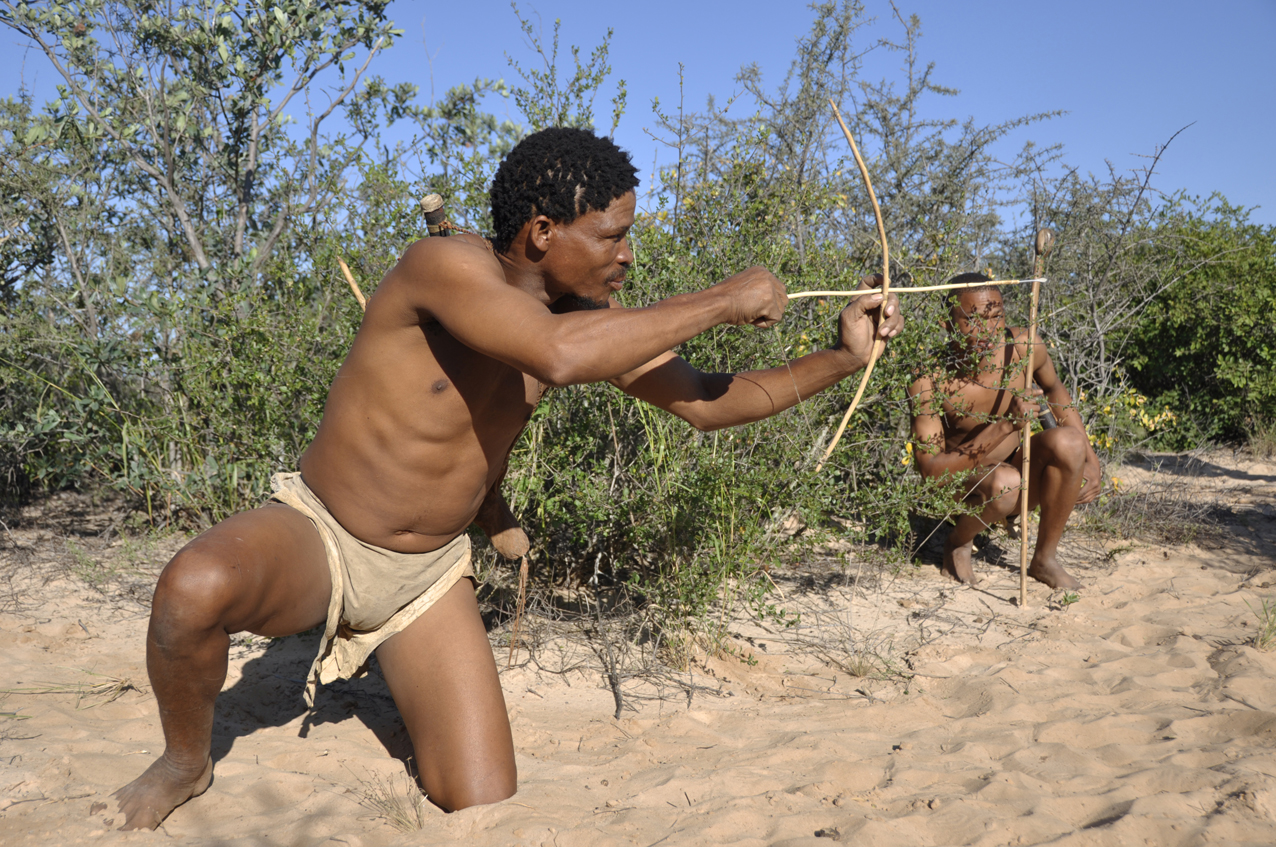
Botswana can claim to possess all the facets of a sparkling diamond with its magnificent wealth of fauna and flora in the Okavango Delta, which is constantly changing its face. An eye-opener as a fence-sitter in Africa’s Garden of Eden, where a vital network of water veins supplies the largely parched southern Africa from the Atlantic to the Indian Ocean with the vital elixir. The Okavango, third largest river below the Tropic of Capricorn, originates in the rain-fed highlands of Angola. Although it would only be a few hundred kilometers to the sea, after 1600 kilometers the river heads for the 800,000 square kilometer Kalahari – and fans out into the world’s largest inland delta. In bands, the river branches advance into the barren and thirsty desert and form a unique biotope in the middle of the Kalahari. The world’s largest inland delta is about the size of Schleswig-Holstein. Ninety-five percent of Botswana’s water reserves come from the Okavango Delta, through which more than 18.5 billion gallons of water flow each year, most of it seeping into the sands of the Kalahari. If you look down on the pristine landscape of the Okavango swamps, which is crisscrossed by a labyrinth of river arms, swamps, islands, steppes and lagoons, the Kalahari shimmers to the horizon, sometimes golden yellow, sometimes deep green with blue spots. …
In the Central Kalahari live at that time about 16’000 bushmen and in the whole southern Africa their number is estimated at about 100’000. They are masterly trackers, notorious hunters, gifted archers – and true ecologists. They live according to the Eros principle, which connects everything with everything else: „Everything belongs to Mother Nature and Mother Earth. No one owns anything. Everything is shared,“ the young Khoi-San Suruka explains to me the worldview of the Kung-San at the foot of the Tsodillo Hills, the four sacred, whispering hills with the ancient petroglyphs, the oldest of which are said to be over 30,000 years old, which would probably bring us to the cradle of human civilization. And then there is the cave of the stone python snake, which according to scientists was carved about 70,000 years ago. To illustrate their closeness to nature, the smallish, tough people with the short, pitch-black curls and peachy skin tones tell us. They coat the shaft of their arrows with a poison they extract from caterpillars. The dose of the poison is chosen precisely depending on the animal that is being killed. Nothing is wasted – not even a drop of the poison. It is the same with everything else, the Bushmen and their wives take only what they need at the moment to survive. If they dig a fruit or a vegetable out of the ground, they cut it off at the bottom and leave the rest with the roots in the ground so that new shoots can grow again. The San have learned to survive even in the most inhospitable and arid regions of the Kalahari. This adaptability was born out of necessity, as Suruka continues to tell us, „When the Boers and other white masters threatened, drove and killed us, we had to flee to areas without water. So we filled ostrich eggs with water and buried them in the desert sand. So we could survive there as well. Our rhythm of life is based on the migration of animals and the tides, and we live according to the principle that nature belongs to all people and everyone should take only what he needs. Yet for centuries our people have been hunted, driven out and killed like fair game. Perpetrators were other African tribes as well as the European colonial masters among them the Germans. …
Kenya: IKRK-Mission im Rift Valley nach den ethnischen Unruhen
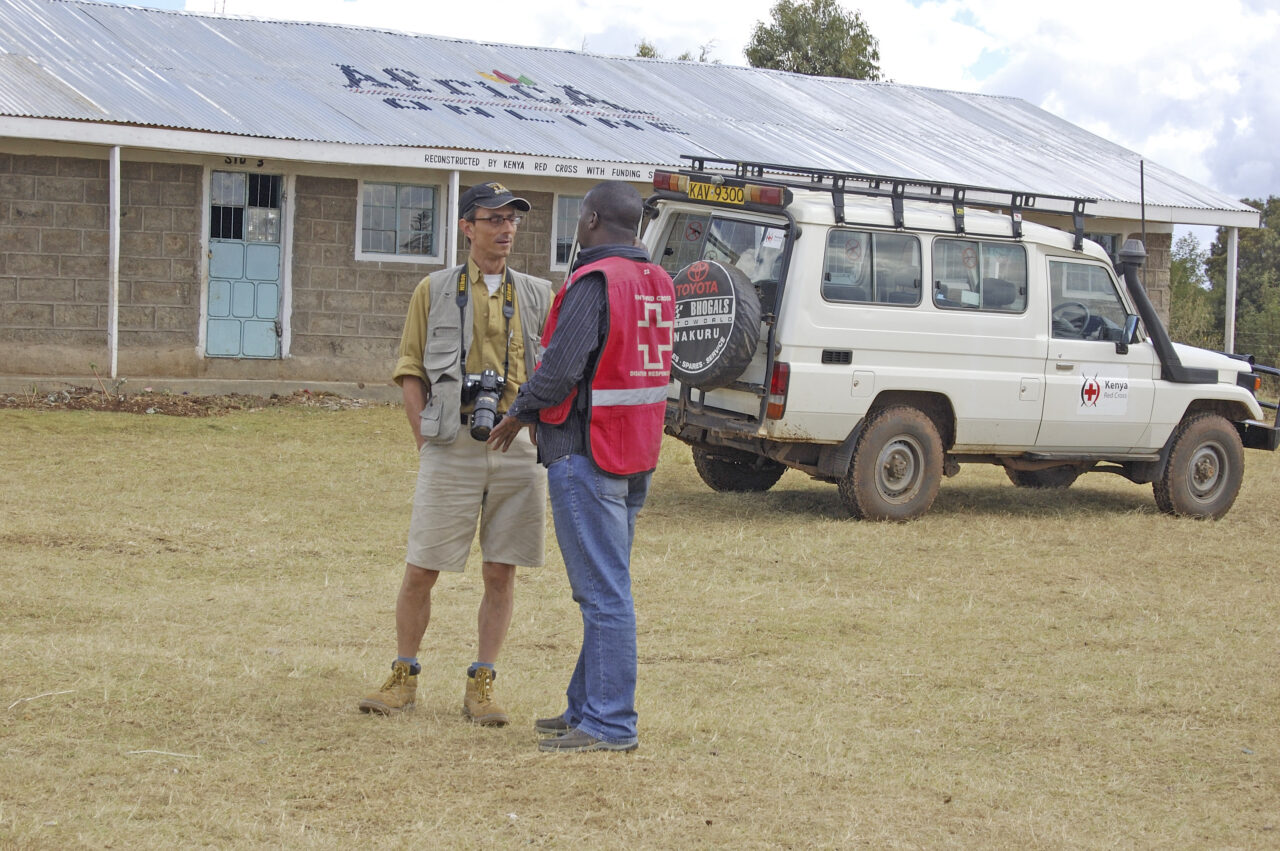
When I came to Kenya in 2008, I first visited the region near Samburu National Park and was stationed at „Joys Camp“. The Samburu National Reserve is a 165 sq km nature reserve in the center of Kenya. The Shaba National Reserve to the east of it belongs to the same ecological area. Characteristic of the area are the very dry habitats for oryx antelope, grant gazelles, two dikdik and grevy zebras. Also typical of the region are the reticulated giraffes, which are distinguished from other giraffe subspecies by their particularly contrasting coloration. Other ungulate species of the reserve are eland and waterbuck. Among the predators, lions, leopards, cheetahs and striped hyenas are present here. In addition, the park was once characterized by large herds of elephants and numerous other game species such as waterbuck and Nile crocodiles. Sadly, elephant populations are declining here as well. …
In the election forecasts and preliminary results, opposition leader Odinga was still in the lead by a narrow margin. After incumbent President Mwai Kibaki was declared the winner of the election, the opposition party ODM protested. Its presidential candidate Raila Odinga declared that the election results were fraudulent. In the ensuing unrest, it is estimated that over 1,500 people were killed and 623,692 people, mostly Kikuyu, were forced to flee the violence. Finally, I flew to Eldoret and went to the local „ICRC Red Cross Committee“. I spent three days with the local staff driving around the refugee camps and seeing the reconstruction projects. It seemed to me that there was still a long way to go back to normality and the misery in the refugee camps with a total of over 100,000 people was very depressing. I had never seen such a scale, not even in South Africa at the time of the ANC-IFP conflict. Over 10 million Kenyans were starving and hundreds were dying daily from water shortages and lack of food. 3.2 million people were affected by acute water shortages at the time. Many of them had to walk up to 30 kilometers a day for a bucket of water and then carry it back. These are some of the staggering figures that the Assistant Secretary General of „ICRC“ and „Red Cross Kenya“ presented to me in his office in Nairobi. And more than 100,000 people were staying in refugee camps. …
Namibia: Schweizer Entwicklungshilfe im Reich der Geparde

Due to the many travels and conflict experiences in numerous countries, I wanted to get into development cooperation and fly to Namibia via „Interteam“ (a Swiss aid organization) to work there for three years in the field of tourism and development cooperation. Specifically, it was a project with the local parastatal organization „NACOBTA“, which wanted to integrate the indigenous people ecologically and more sustainably in the tourism industry, in order to let the indigenous tribes there participate in the economic and sustainable tourism development. Unfortunately, shortly before the assignment, some foreign aid organizations cut their budget for „NACOBTA“ and so the „EZA“ assignment in Namibia was cancelled. Nevertheless, the „Inter-team NACOBTA“ assessment made me curious about the South West African country with a German colonial past and I decided to travel there. A key challenge in Namibia’s rural areas is building capacity to address human-wildlife conflict. The Cheetah Foundation (CFF) in Ojjowaringo has identified several landscapes in Namibia that need an urgent focus on science-based solutions to mitigate human-wildlife conflict (HWC). Key focus regions include the Greater Waterberg Landscape, the Gobabis Landscape, and large parts of the Kalahari ecosystem.The „Cheetah Foundation“ is one of the impressive wildlife projects in Namibia. It was the first time I watched these noble, elegant predatory cats in the wild and hunting for some poor rabbits, which were thrown to the cheetahs as breakfast food. CCF’s Namibian cheetah population study has been ongoing since 1990, with over 750 tissue samples and 1000 fecal samples collected to date. These samples allow for the study of Namibian cheetah populations over a 30-year period. Population monitoring within the 50,000 hectare game reserve is made possible by combining this with genetic analysis using microsatellite markers. This allows CCF researchers and wildlife managers to identify individual cheetahs based on both visual and genetic characteristics. …
Das dunkle Kapitel Deutschlands: Völkermord, Sklaverei, Landraub, Vergewaltigung
A brief review of Namibia’s history: In 1884, Africa was divided among the European powers and colonial rulers at the „Congo Conference“ in Berlin. Germany rises to colonial power, whereupon German Southwest Africa, today’s Namibia, was established and developed into a colony. By 1914, some 15,000 white settlers had arrived in German Southwest Africa, including more than 12,000 Germans. The German colonial administration ruled the area by means of racial segregation and oppression. The natives were treated as second-class people by the European settlers and were practically disenfranchised. Native tribes were forced to vacate their land. The pastureland that was vital for the nomadic tribes and their ancestral homeland thus increasingly passed into the hands of the settlers. This threatened above all the livelihood of the Herero and Na’ama pastoralist tribes living there. Slavery, land theft, public execution, forced labor, rape and humiliation became the doctrine and the agonizing daily order for the maltreated population. The uprising against the white occupiers began in 1904 with Samuel Maharero. The Na’ama chief, Captain Hendrik Witboo, was the icon of the anti-colonial resistance. He accused the Ovambo leader of cooperating with the so-called „protecting power“ of the Germans, thus opening the floodgates for conquest. Only after 20 years of oppression by the „Herrenmenschen“, the peoples of Namibia for the first time united against their oppressors. On January 12, 1904, the first shots were fired against the occupiers. The rebels besieged military stations, blocked railroad lines and raided trading posts. …
Mexico: Von Göttern inspiriertes, von Gott beseeltes Reich
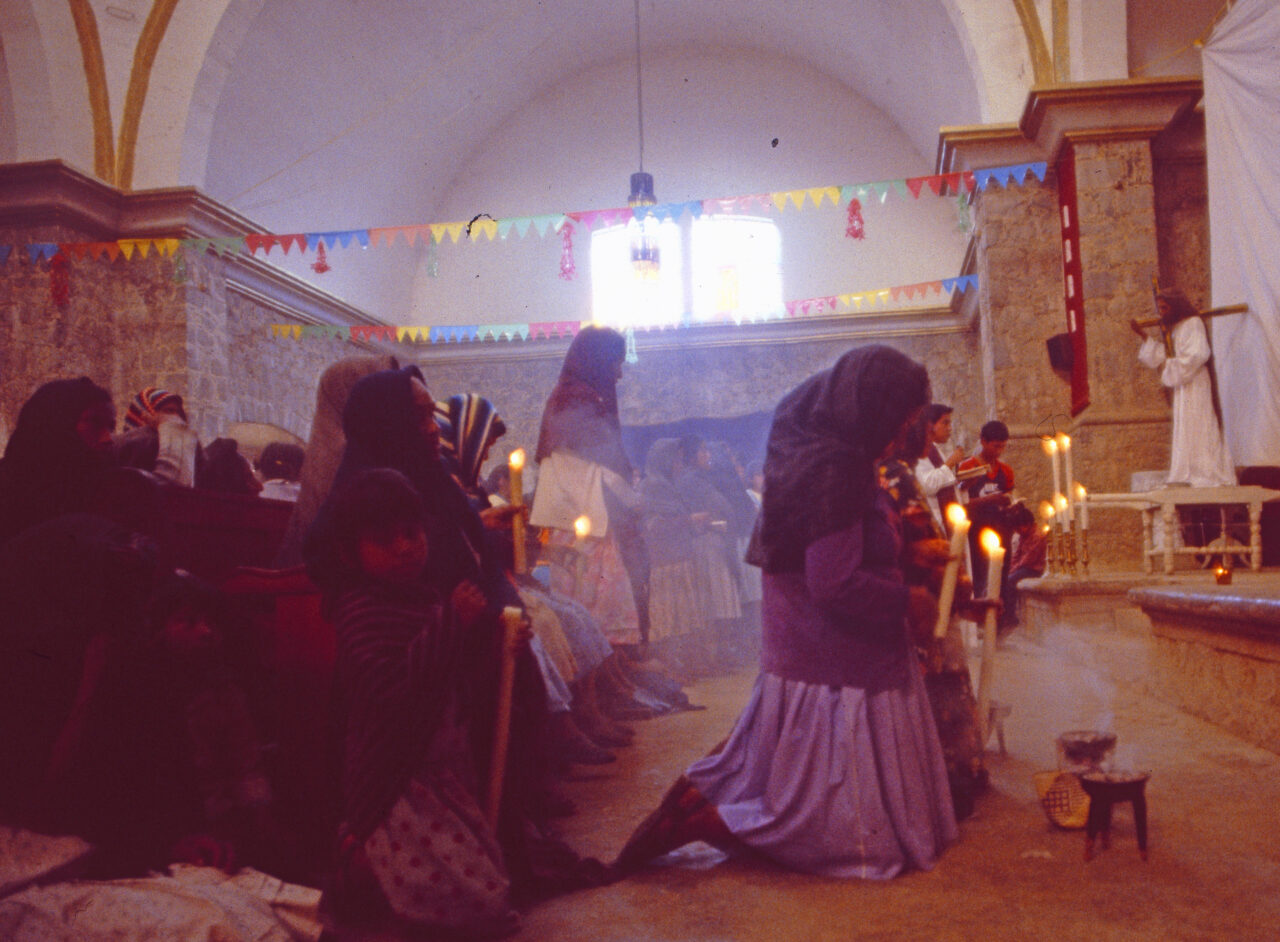
Mexico’s face, the cradle of archaic Indian civilizations, shines brilliantly. Both the ancient temple complexes and the contrasting, magnificent colonial cities of Oaxaca and San Cristobal de las Casas stand out like dazzling jewels from the Sierra Madre. In the homeland of the Tzotziles, Tzetales, Chamulas and Lacandones, the indigenous people are about as primitive as the people of Valais or Grisons. In the highlands of Mexico, one of the oldest peoples in Central America, the Mixtecs, celebrate their impressive Stations of the Cross processions every year. The ceremony represents a strange symbiosis of Christianity and the world of the Mixtec gods. In the deepest religiosity, the Indians worship both Jesus Christ and Mary Virgin, the Virgen de Guadaloupe, and their charismatic hero Rey Condoy, who saved them from annihilation and oppression. The sparse candlelight, the clouds of copal incense and the sea spreading out on the floor, smelling strongly of spruce needles, as well as the magnificently decked out dignitaries with their silver-studded canes as insignia of their dignity, transformed the nave into a very spiritual and mystical world. I myself felt like an alien in this indigenous community. Flickering candles illuminated all the serious faces marked by hardships. Then the Indio women shouldered the Virgen de Guadaloupe and the men a statue of Jesus Christ on their shoulders, after which the whole Indio troop climbed up the steep mountain. They split into two groups and I decided to join the women’s torch and candlelight procession. At the seventh Stations of the Cross, the two processions united at a small clearing in a square around the banner bearers and the women kneeling before their thuribles. Now the Padre gave another speech and just at that moment the sky fully opened for the first time and the sun shone like a divine spell directed at the small Indio community, as if they were being specially blessed by this gathering. Their chants put me in a trance and it was extraordinary to live this spiritual experience as the only „gringo“ and foreigner among the Mixtec Indians. Devout and overwhelmed by this authentic spectacle of deepest indigenous and poignant emotions, we too became part of this world and merged, so to speak, with them and their ancestors. The Indians must have felt this as well and gave me their trust and pulled me into their innermost circle. When one of the banner bearers came out of the circle of dignitaries and approached us, I was at first very frightened, because I had secretly taken pictures of the reunion of Jesus Christ and the Virgin Mary. I was afraid that they had caught me taking pictures and that I would be offered as an expiatory sacrifice and impaled on one of the lances. The fear was not unfounded, as tourists have been killed in Chiapas for photographing the local Indians. Instead, as a gesture of their hospitality, I was brought in to the center of the procession and allowed to be one of the three banner bearers. What a gesture and honor for me, which touched me very much. …
1994: Zeuge Zapatistischer Indio-Aufstände in Chiapas
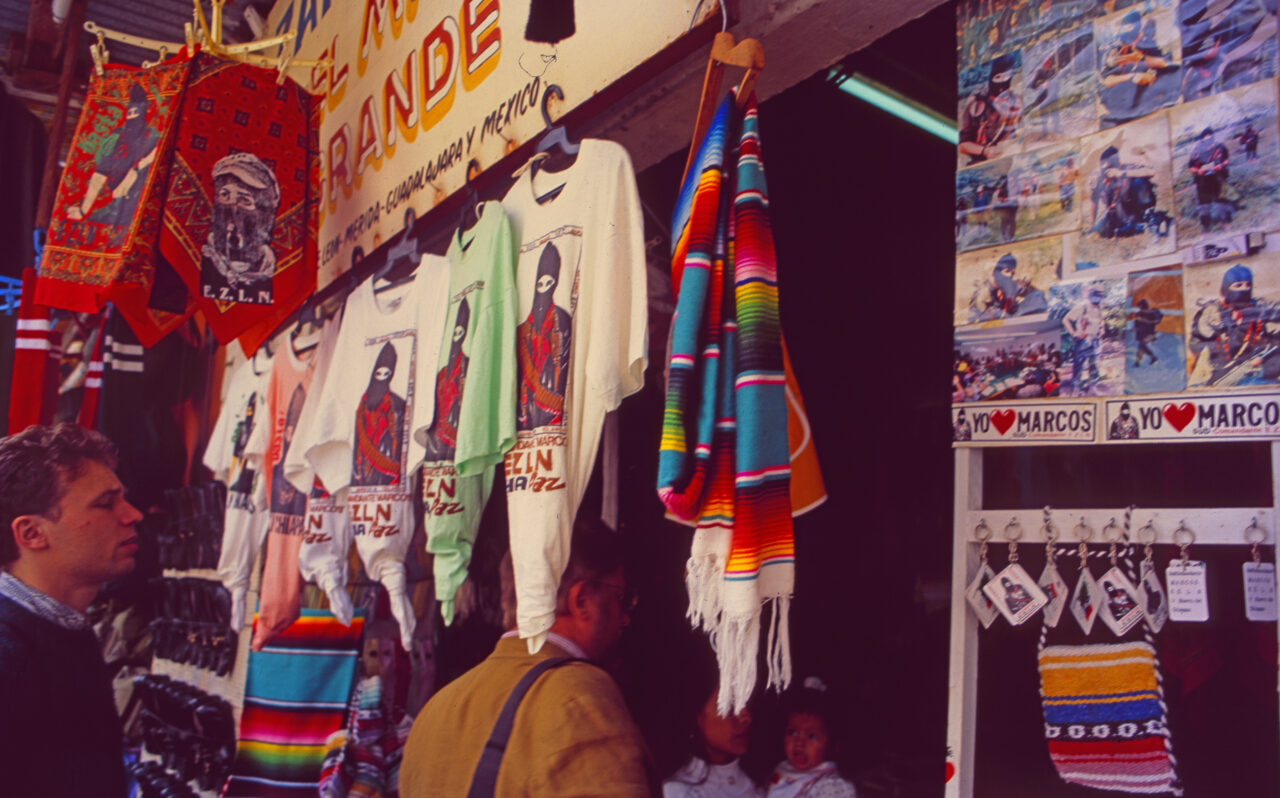
The Chiapas Uprising was sparked by the „Ejercito Zapatista de Liberacion Nacional“ (EZLN), a so-called radical leftist movement that rebelled against new state impositions in the state of Chiapas and closely resembled a new edition of the Mexican Revolution. The Mayan Indians were suffering from the free trade agreement of globalization and racist policies in the Mexican administration, and they wanted to resist this because they were being oppressed and excluded from participating in the political process. The conflict began when, in January 1994, an „EZLN“ offensive occupied four towns around San Cristobal de las Casas, whereupon the Mexican military used violence and repression to end the situation on the ground, including the use of torture methods. In 2001, under the leadership of MARCOS, the Zapatistas made a march from Chiapas to Mexico City, and on January 1, 2003, they took San Cristobal de las Casas. Only after that did more and more NGOs advocate for peace negotiations and put pressure on the government. In the end, however, the fate of the indigenous communities did not change much for the better. After escaping this incendiary place, I experienced another severe earthquake in Chiapas and a turbulent hurricane in Yucatan. So Mexico has really not spared with impressions, it has always been a hellishly hot country, not to mention all the drug cartels that were fighting each other bestially at that time. Impressive was the river trip through the Sumidero Canyon, on whose slippery rock walls up to 1000 meters high, experienced climbers could pull themselves up over the heads of ravenous crocodiles and dozens of vultures were already waiting for possible victims. The misty valleys and enchanting lake and river landscapes of Lago Monte Bellos on the Guatemalan border and the wildly gushing cascades of Agua Azul were also among the highlights of this trip. I avoided the tourist strongholds, preferred small dreamy places and visited many Mesoamerican temples – from Teotihuatlan to Monte Alban, Palenque, Chinchen Itza and Uxmal and was deeply impressed by the sophisticated architectural masterpieces of the local indigenous high cultures with their apocalyptic drug use. …
Cuba 93: With the socialists who feed on hope
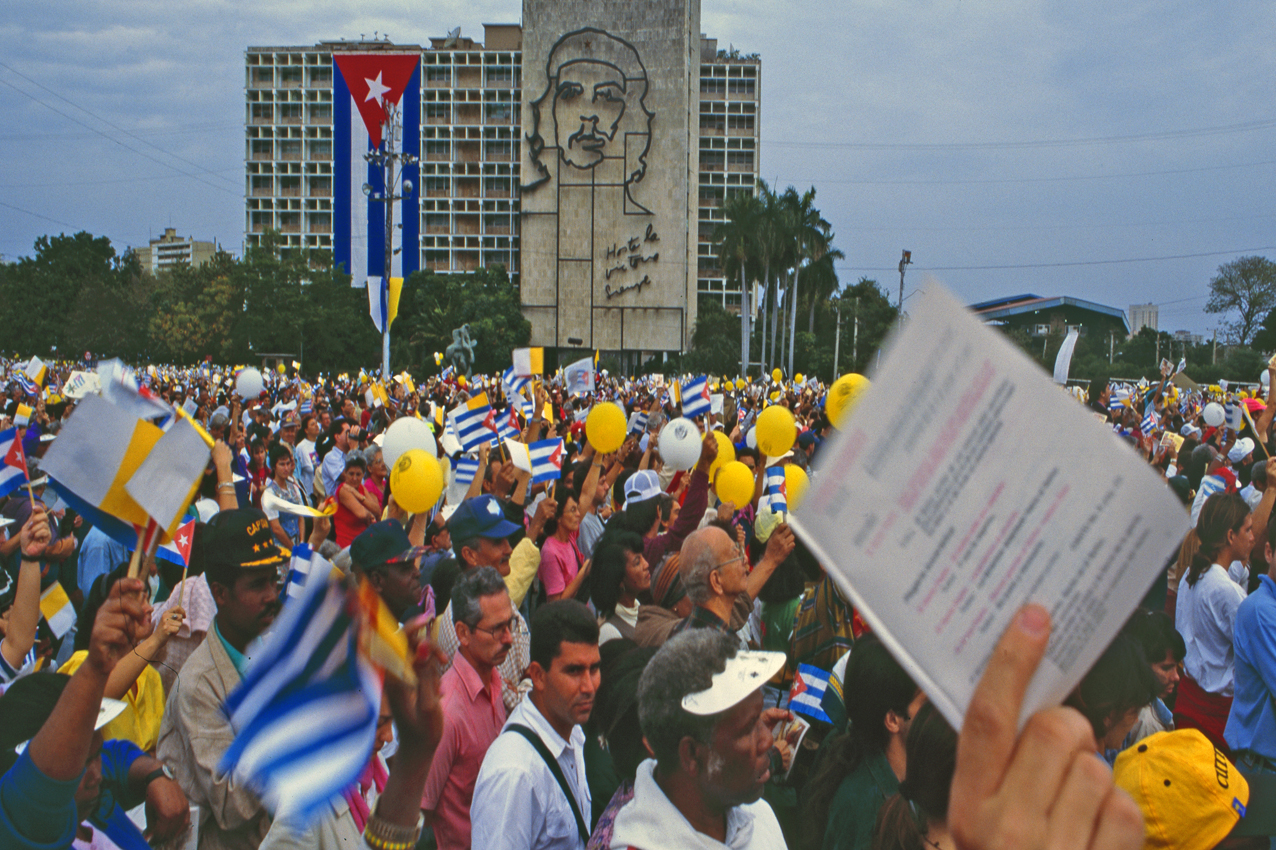
In 1993, I flew to socialist Cuba for the first time. It was for a Swiss film project about Fidel Castro and Geraldine Chaplin was the door opener to the socialist rulers. It was the „Periodo especial en tiempo de paz“ (the time of emergency in peacetime) when Cuba, after the collapse of the Soviet Union and the fall of the Berlin Wall, was plunged into an extreme economic crisis and had to undergo a soft system change. Through the „dollar liberalization“ in the socialist Caribbean paradise, in order to switch from the sugar economy to tourism, a revolution from the „socialist heart to the capitalist mind“ took place. The classless society was now split into two camps: Those with the green U.S. bills („fulanos“) and those with the worthless pesos, the „esperancejos“, the hopeful ones. Thus, the hunt for the „fula“ (bad money) has taken on Kafkaesque forms. The change was marked by an unswerving determination not to give up the socialist achievements at any price. And yet, since the liberalization of the dollar, a dramatic, inexorable change in values has taken place. …
La Habana – the Latin American splendor of the 19th century presented a picture of monumental desolation. Entire neighborhoods were in danger of collapse, the Malecon was a mile-long, dilapidated colonial-style ensemble, and the decay of the old city was far advanced despite financial help from Unesco, which wanted to preserve, renovate or rebuild parts of the urban ensemble. The two-million metropolis was a conspicuous symbol of the fact that the country lay in ruins after the fall of the Wall and the withdrawal of the Soviets. The dilapidated ruins of the five-story colonial-style buildings were removed by hand, pillar by pillar, under life-threatening conditions until the building sections collapsed. Since economic aid and subsidized fuel supplies from the Soviet Union stopped, the mercado negro, where 85 percent of all goods are traded, has become Cuba’s main artery. Almost everything had to be imported at high cost, even the staple food rice. Export revenues fell from over eight billion in 1989 to barely two billion U.S. dollars within three years. Crude oil was only available in half that amount, the transportation system collapsed, the electricity supply functioned only on an hourly basis because the supply situation was precarious, the peso was worthless and the age of dollar apartheid had begun. „Our money is worthless and prices have increased tenfold in a short time,“ complains Ernesto Solano, a pensioner who had to get by on 80 pesos a month. Despite the miserable situation, he has not lost his sense of humor and sums up the predicament of the „Periodo especial en tiempo de paz“, which has now lasted two years, with a joke alluding to the slogans „luchan y resistan“ (fight and persevere) and „Long live the revolution – persevere compãgneros: A Cuban comes home hungry and shouts to his wife to fry the fish he brought with him. „We have no oil,“ is her reply, „and no gas for cooking, nor water, nor a lemon.“ So the only thing left for the man to do is to resignedly throw the fish back into the sea, whereupon it happily cries out, „Long live the revolution.“ …
Grenada 92: On the aircraft carrier „US John Rodgers“ for a press breakfast
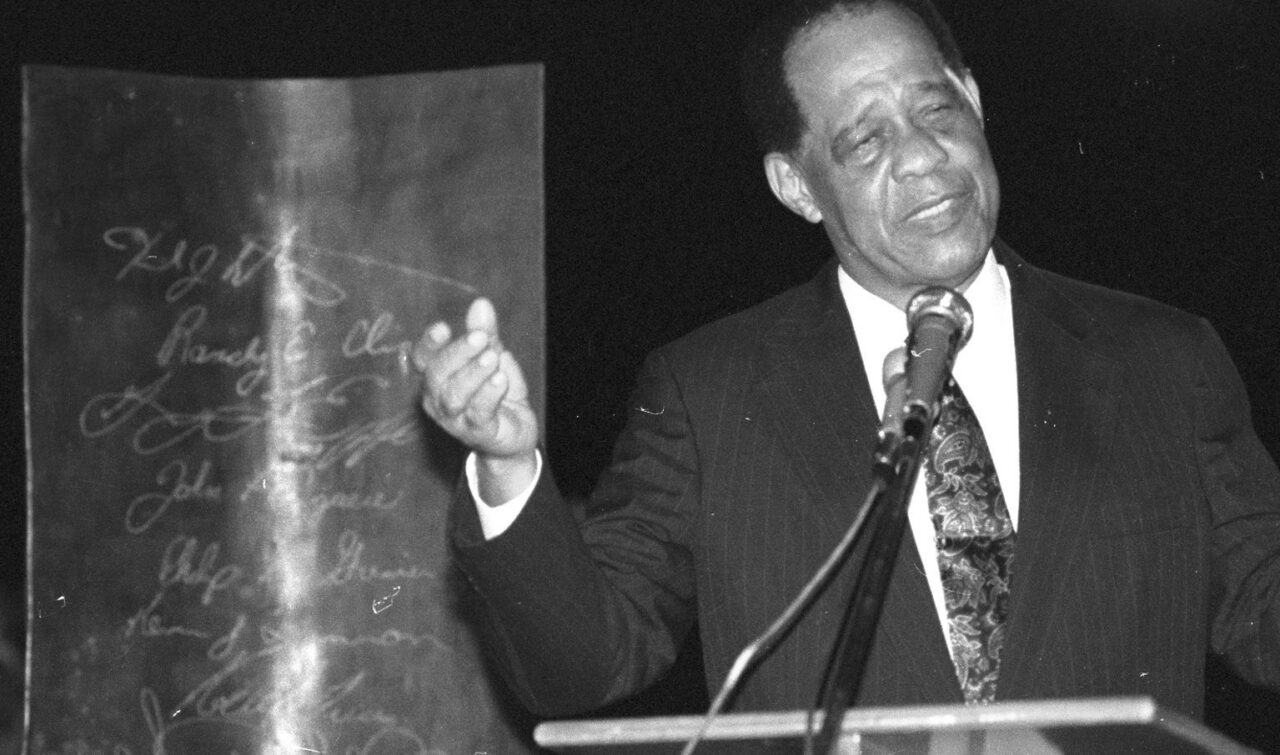
In 1992, I traveled to the Caribbean twice. First I took part in a sailing trip from Grenada to Trinidad for Carnival, then I arrived in Grenada via Barbados exactly at the time when the ninth anniversary of the „liberation“ or „occupation“ of Grenada (depending on your point of view) by US forces was celebrated. In St. George, the capital of Grenada, I was able to attend the official ceremony with the Prime Minister of Grenada, Nicolas Brathwaiter and the U.S. Ambassador in the presence of high-ranking U.S. military officials, after which I was invited by the U.S. Ambassador to the exclusive and ultimate press breakfast on the aircraft carrier „U.S. John Rodgers“ stationed off Grenada. I didn’t want to miss that, after all, it’s not every day that you can have breakfast on a warship that has a huge potential for destruction. The next morning, a U.S. Navy boat picked me up on the beach and drove me over to the warship, which was anchored off the coast of Grenada. First I was able to take a short tour and then have a conversation about U.S. policy with the commander and his press aide on the command bridge. In retrospect, this visit was not a good idea, because I have been on the radar of U.S. intelligence agencies since this incident and later felt it in the Philippines. …
The invasion of Grenada was probably one of the few U.S. operations that, first of all, went smoothly for the civilian population and ultimately led to stabilization. The U.S. invasion of Panama was not too disastrous either, but all other interventions, invasions and infiltrations on the part of the U.S. from the Vietnam War to the Afghanistan operation, the failed Bay of Pigs invasion of Cuba, the hopeless and devastating Iraq War that led to IS or even the overthrow of long-term despot M. Gaddhafi in Libya and the miserable failure in the Syria war, for the most part the USA failed miserably after WW2, whether as aggressor or world policeman. A „failed state“, with obvious consequences for the whole world: The radicalization in the Muslim world, which gave a boost to the terrorist organizations Al Qaeda and IS, or the „War on Drugs“ proclaimed by the USA was a disaster and hypocrisy for 50 years. …
1997: Hell Trip to the Drug Cartels of Colombia
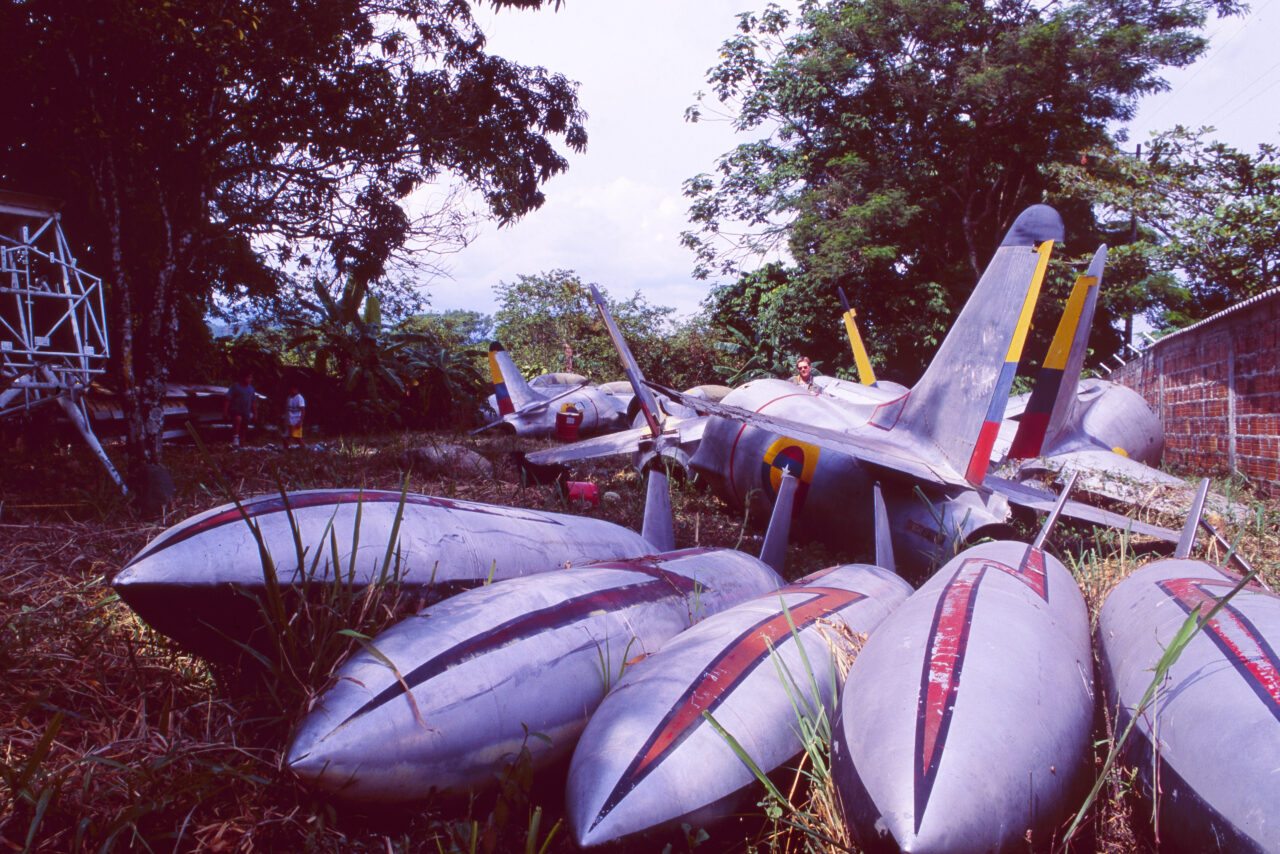
In Bogota, I met my professional colleague, aviation journalist and military pilot Hans-Jörg Egger. Together we flew from the capital of Colombia in all directions in one week on behalf of Swissair. First to Letica in the border triangle of Brazil, Colombia and Peru in the south of the country in the middle of the Amazon jungle, then to Cartagena in the colonial pearl, with the magnificent colonial style buildings similar to Havana. We continued to Cali, then the drug stronghold of Pablo Escobar, another destination was Villa Vicencio, also known as a drug transshipment point, and finally we flew up to the Caribbean island of San Andres, located off the coast of Nicaragua. The purpose of the trip: We were to put together a travel itinerary for the Swissair VIP shareholders trip and reconnoiter the best places where ancient aircraft types still fly around. It was to be a fantastic vintage aviation trip. …
The harbingers of the jungle begin less than 100 kilometers from Bogota, but in order to get there you have to overcome the grueling pass road of the Sierra Oriental at an altitude of 3700 meters above sea level and then master and survive the winding descent on narrow paths along abyssal canyons down to a hundred meters above sea level. The sun is just setting on the blood-red horizon above the steaming jungle, where tropical thunderstorms rain down heavily on the esmerald green jungle just before dusk, making the ride on the slippery pass road hell. Arriving in Villa Vicencio, we board the silver fuselage of the DC-6 after an interview with the airport director, and soon we are flying through the lashing rain with a loud propeller howl. The pilot’s forehead is also covered with thick beads of water, as it looks to him like difficult flying and landing conditions. The propeller engines are roaring as they fight against the dense, fast-moving clouds. The view from the small round windows sweeps over the green jungle sea in the Amazon basin, the meandering river courses and island dots. Then the descent begins and we set down for landing, whereupon we are soon relieved to have arrived unharmed. …
At the end of our Colombia trip we arrived at the airport in Bogota as always in the last days only shortly before departure. We had gotten used to the fact that 15 minutes were enough to board the plane. This worked well with all Colombian flights, but the upcoming flight to Ecuador was just a flight out of the country. We had not thought about that and that the procedure would take much longer. When we arrived at the counter and learned that boarding was already completed, I showed the check-in counter employees two seat cards and said: „Stop the airplaine, now immediately“ and simply ran through the gate past the surprised securities out onto the airfield. Without being shot at, we ran towards the plane that was taxiing to the runway. At the same time we saw a stair car racing towards the plane and the jet stopped. After a few dozen meters, we made it and were allowed to rush up the stairs, whereupon the boarding door opened and we were able to board. „Wow, what awesome action!“ Why did the plane stop, you ask? Well, one business card was that of the Colombian Minister of Aviation and the other, that of the Bogota Airport Director. Both of these people we had interviewed before. And so it happened that for us two Swiss journalists in Colombia, a commercial airliner on an international flight was stopped on the taxiway for departure so that the two VIPs could board. …
Species extinction through overexploitation: Amazon Cruise with scientists

Its name is a legend and sounds as exotic as the myth that surrounds it: the Rio Amazonas. It is the second longest and most water-rich river on earth, the one with the most tributaries, the strongest water discharge, the largest catchment area and the most enormous delta. In thousands and thousands of meanders it flows majestically through the most diverse and opulent rainforest on earth, nourishing, watering and sustaining an immense variety of fauna and flora and at the same time being the lifeline of millions of people. The Amazon is called „Maranhão“ by the Indians, „which only God can unravel“ and it consists of a bizarre network of over 1100 rivers, 20 of which are longer than the Rhine. But it is only after the encuentro dos aguas, the confluence of the Rio Negro and Rio Branco at Manaus, that the river is called Rio Amazonas. With its catchment area of more than seven million km2 and its daily deposit of three million tons of sediment in the delta, the Amazon outranks all other rivers. One fifth of the fresh water in the world’s oceans is fed by the king of rivers. More than 30,000 species of plants, which thrive on three levels above each other, and more than 2,000 species of fish and birds live in its catchment area. …
An expedition to the Amazon jungle is both a journey into an exotic world full of overwhelming flora and an encounter with a species-rich fauna – full of giant snakes, such as anacondas and phytons, anteaters, sloths, howler monkeys, piranhas, shy river dolphins, colorful parrots (macaws) or magnificent tucans as well as nimble hummingbirds. The list could, it seems, be continued almost indefinitely. But the opposite is the case. The number of species threatened with extinction is increasing dramatically. According to experts, the rainforest is irretrievably destroyed when 40 percent of its area has been destroyed. In the last 50 years, a quarter of the rainforest has already been cut down or burned – with catastrophic consequences for the climate, the environment, people and animals. The indigenous people in the rainforests had destroyed barely one percent of the rainforest over the period of the last 15,000 years. A single human generation is therefore sufficient to bring the entire ecosystem of planet Earth out of balance and the human race as such into danger. …
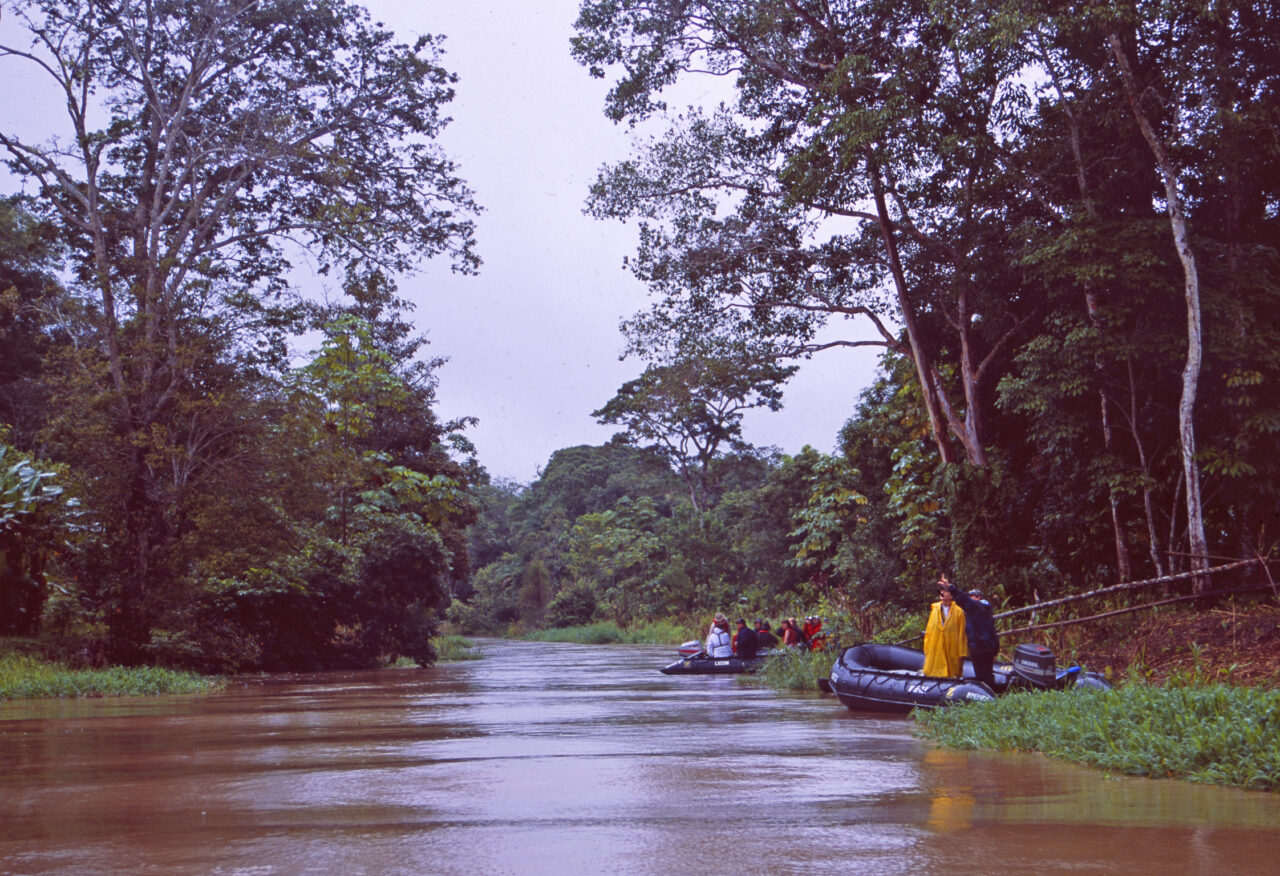
In Brazil today there are still about one million square kilometers of Amazon rainforest, which is not protected and not zoned, but also does not belong to the indigenous tribes living there (because they must first prove their centuries-old legitimacy in lengthy processes), so that their land is not sacrificed to overexploitation and investor rapacity. Because the common principle goes as follows: Areas are illegally confiscated, burned or cleared and thus destroyed. In the years that follow, attempts are then made to legalize land grabbing in this area through lucrative cattle ranching, which has been a piece of cake since President Bolsonaro. Land speculation is fueled by interna-tional investors. In the region, some 30 billion U.S. dollars will be spent in the next few years on road construction, electricity and infrastructure to develop and exploit the primary forest. 92 dams are planned in the Amazon region. These are devastating prospects. What capitalist madness. To add to the misery, the government of Jair Bolsonaro plans to build a railroad almost 1000 kilometers across the jungle and many indigenous protected areas. The agricultural lobby is delighted, as the Ferrogrão infrastructure project promises lower future transport costs to the Atlantic and thus higher profits. A study by economists Juliano Assunçao, Rafael Araújo and Arthur Bragança has shown that additional clearing of an area of 2050 square kilometers is to be expected, which corresponds to around 300,000 soccer fields. Not only would the clearing of this virgin forest produce about 75 million tons of carbon, but the increasing loss of the green lung will soon lead to the collapse of the climate and irrigation system in the entire Amazon basin. …
Borneo 96: Stalking through the jungle with a handicapped orang utan
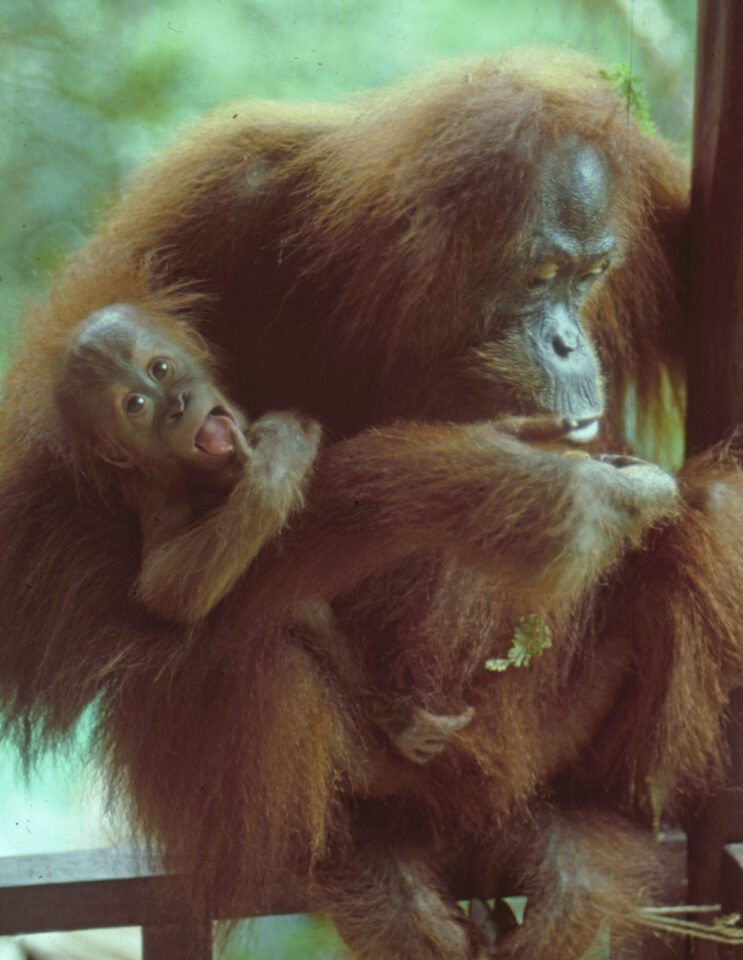
The orang utan, the „forest man“ in Malay, has been threatened with extinction since the mid-1960s. Despite international species protection agreements, at that time still extremely restrictive trade agreements and the two rehabilitation stations on Semengho in Sarawak and Sepilok in Sabah on the Malaysian island of Borneo, the close relatives of Homo Sapiens are acutely endangered. Greed for tropical timber and palm oil is destroying their habitat, the primary forest. Due to the destruction of their refuges, they are now isolated in small groups. The apes have also become known through the Swiss environmental and human rights activist Bruno Manser. Manser lived in Borneo from 1984 to 1990, recorded the fauna and flora of the tropical rainforest, learned the language and culture of the Penan and lived with them. In 1990 he had to flee to Switzerland after he was expelled by the Malaysian government and declared an „undesirable person“. A bounty of 50000 dollars was put on his head. In 1993, Manser participated in a fasting action and a hunger strike in front of the Federal Parliament in Bern to protest against the import of tropical timber. In 2000, despite an entry ban and a bounty on his head, he traveled from the Indonesian part of Borneo (Kalimantan) across the green border into the Malaysian Sarawak to the Penan and was never seen again. Since then, Bruno Manser has been considered missing and was officially declared dead in 2005. …
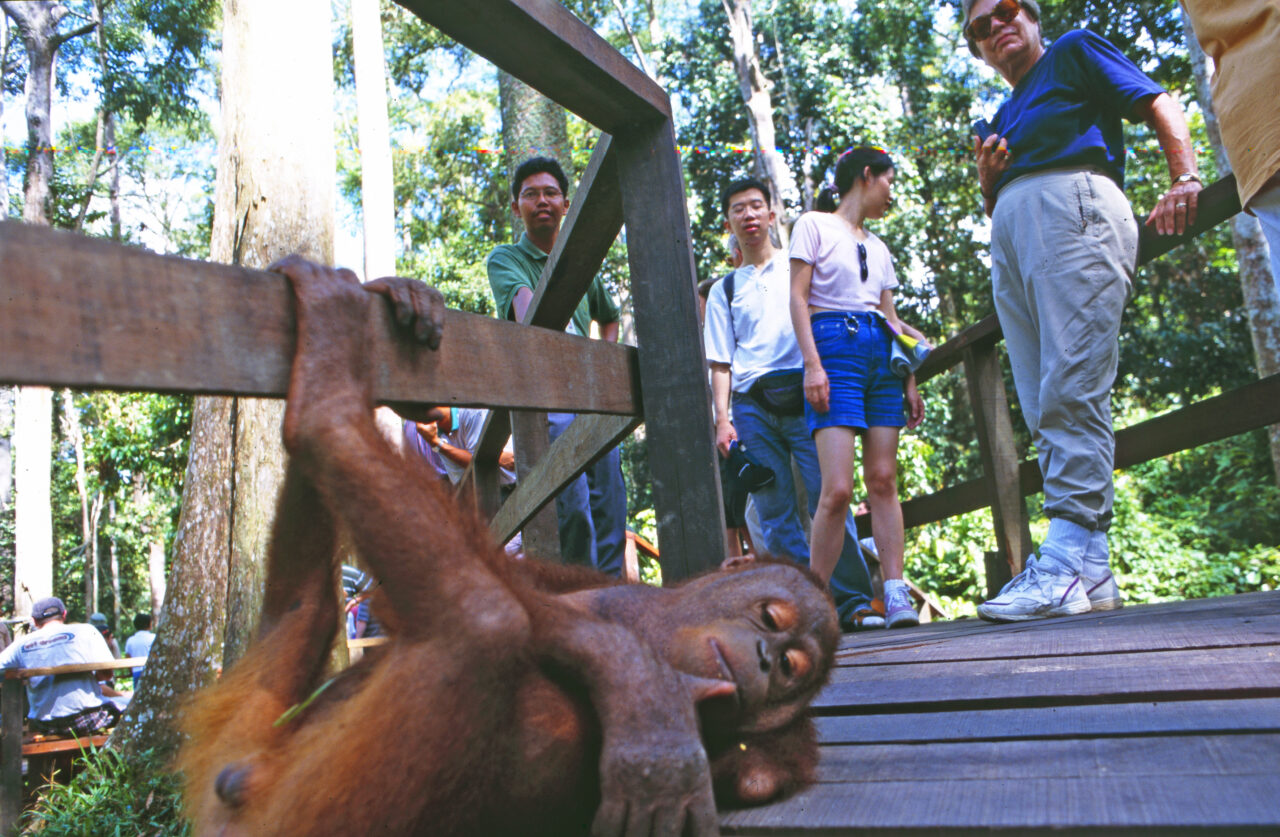
In 1996, I made a trip to Malaysia to celebrate 50 years of independence from the British crown and after the state celebration with all Asian heads of state, I first traveled by car all over Malaysia and visited the Taman Negara National Park in the rainforest. After the detour to Langkawi, I flew to Borneo and landed in Sarawak with the goal of exploring the situation of forest clearing for palm oil production, the threatening situation of the headhunters and the destroyed habitat of the Orang Utan. At Lake Batang Ai in Sarawak on Borneo I started the expedition into the rainforest and hired a guide with a dugout canoe to lead me to the Iban Headhunters living here. After two days‘ travel from Lake Batang Ai, paddling a canoe through a sea of deforested tropical tribes flowing downstream, I ended up in one of these remote longhouse villages. The days of decapitating intruders with the parang, the dreaded long knife, and hanging the trophies in the form of shrunken mini-skulls from the beams of the longhouses are thankfully over. The longhouses of the head hunters are built on stilts, up to 100 meters long and have a continuous wide corridor leading to a longitudinal veranda.
Unfortunately, I came down with malaria. Shaken by fever cramps and checkmate, I lay around for three days like a dead fly in the „longhouse“ of the headhunters, before I could go back by dugout canoe to a jungle camp, which had a radio station, in order to take up contact with Switzerland over the radio connection and the telephone handset held to the radio, with my family. When at home in Switzerland the tape recorder instead of a connection came, I said only briefly that I wanted to say goodbye, because I would probably not survive the night. After that I lay down outside under the starry night sky, shaken by further bouts of fever. I wanted to die at least in the open air and not in the tiny, stuffy wooden hut in which I had been quartered. What happened now was unique and should shake my distinctive sense of reality fundamentally. Whether it was just hallucinations or whether I was actually brought back from the Ascension is not clear to me to this day. In any case my astral body took off and then I saw purely optically already the stars with comet-like rapid speed coming towards me and felt pulled weightlessly up into the orbit and glided like the spaceship „Enterprise“ which jetted with light speed through the orbit towards the starry sky. But since the stars can’t come at me, I realized that I must have taken off like an angel and was now racing toward the sparkling firmament, unless my fevered brain was doing its antics and hallucinogenic vision with me. With the help of the jungle camp residents, I got back on my feet after two days, traveled on to Kota Kinabalu to the Orang Utan Rehabilitation Station in Sepilok, and arrived just in time for the feeding from a platform two kilometers further into the forest. The tourist groups had already started walking before me on the wooden walkway that led a good two meters above the ground into the rainforest to the large visitor platform and the two feeding stations in the trees behind it.
Then I watched as the babies got their food and gobbled it down and then disappeared back into the trees. After feeding, I wanted to get back to the rehab station before the others, so I made my way back along the walkway before the others. As I tried to sneak past a young handicapped orangutan, with a chopped off but already healed arm, lying backwards on the walkway, blocking the passage, he grabbed me by the lower leg. What was I supposed to do? When I wanted to gently loosen his hand that was clutching my leg, he simply grabbed me by the wrist, whereupon we both, the young orangutan and the still feverish and sweaty photographer ran hand in hand through the jungle to the station. He could have taken me right up into the treetops with his cronies. That didn’t work, but I made a good appearance in the rehabilitation ward when we arrived there hand in hand, like old friends. …
Indonesia: Dramatic deforestation and species extinction accepted
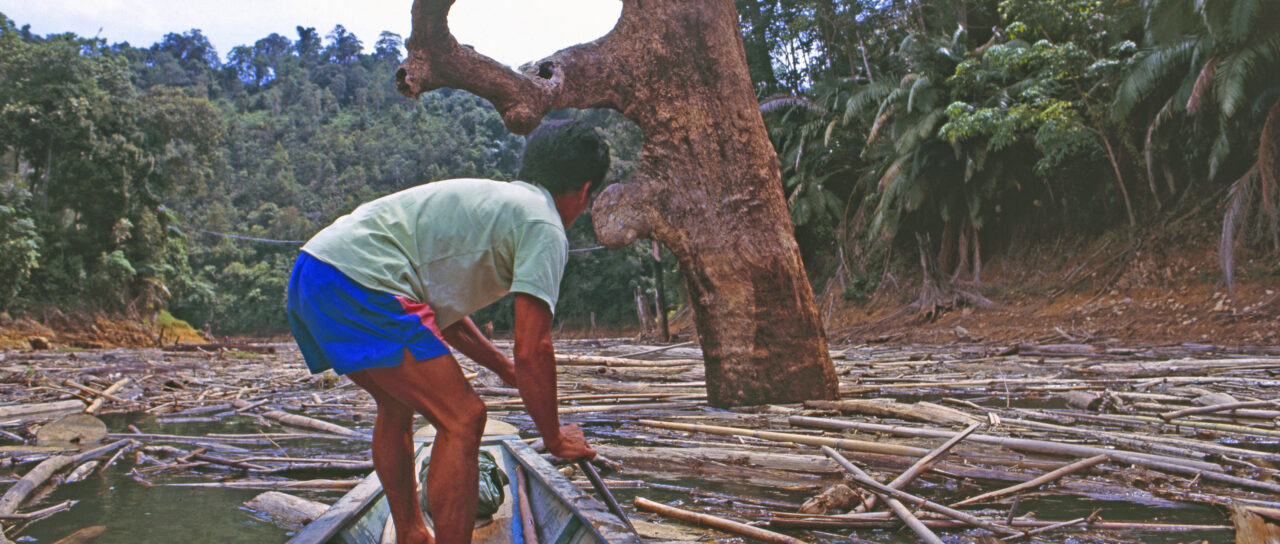
What is the situation today? The habitat of the great apes has been drastically reduced and their population has not increased but has been further decimated. Genomicists at the University of Zurich have recently discovered a new species on Sumatra, the Tapanuli orangutan, whose refuge lies in the rugged mountains of the Batang Toru region in Indonesia. The estimated 800 primates are affected by forest clearing for palm oil plantations, urban sprawl and a dam project here in Indonesia, as they are on Borneo. And they are not the only ones silently dying out. Many other species are also going extinct. One million species are threatened with extinction in the next decades. This is the devastating conclusion of the 2019 „World Biodiversity Council“ (IPBES). Reptiles and birds are having a hard time, but more and more mammals are also becoming extinct. 540 land vertebrate species were wiped out in the 20th century. Most of them in the Asian region.
Switzerland has concluded a controversial economic agreement with Indonesia and relies on „RSPO“ standards in the agreement, which was created in cooperation with companies, environmental organizations and aid agencies. But this will not stop deforestation or dam projects, and the habitat of the orang utan and many other species continues to be doomed. An agreement with sustainability goals is a small step forward, but unfortunately does not change the fact that overexploitation continues and there are too few protected areas, because the demand for palm oil has increased extremely and continues to rise. Accordingly, the area under cultivation has also grown, resulting from the clearing of primary forest. Since 2008, the area under palm oil cultivation has increased by 0.7 million hectares per year, an area four times the size of the canton of Zurich. And demand is expected to more than double again by 2050. On the island of Borneo, 50 percent of deforestation is due to palm oil cultivation. In the much larger Indonesia, the figure is already 20 percent. Six percent of all animal species are found on the island of Borneo. For over 4000 years, the rainforests of Borneo have been populated by indigenous peoples. Over the last 50 years, almost half of the rainforest in Kalimantan, the Indonesian part of Borneo, has been cleared. There are thousands of land conflicts by indigenous communities against large logging companies, but the state and the judiciary make it difficult for the people to access their rights and defend their land against overexploitation. Although a convention to protect the rainforests has existed for 30 years, it has never been ratified and implemented by the Indonesian parliament. Furthermore, it can be observed that almost all politicians are either former or still incumbent timber industrialists in Jakarta, as Norman Jiwan of the NGO „TuK“ reports. And only less than 30 of the richest Indonesian families profit from the palm oil industry. …
Philippines 95: Incredible Spirit Healing Skills
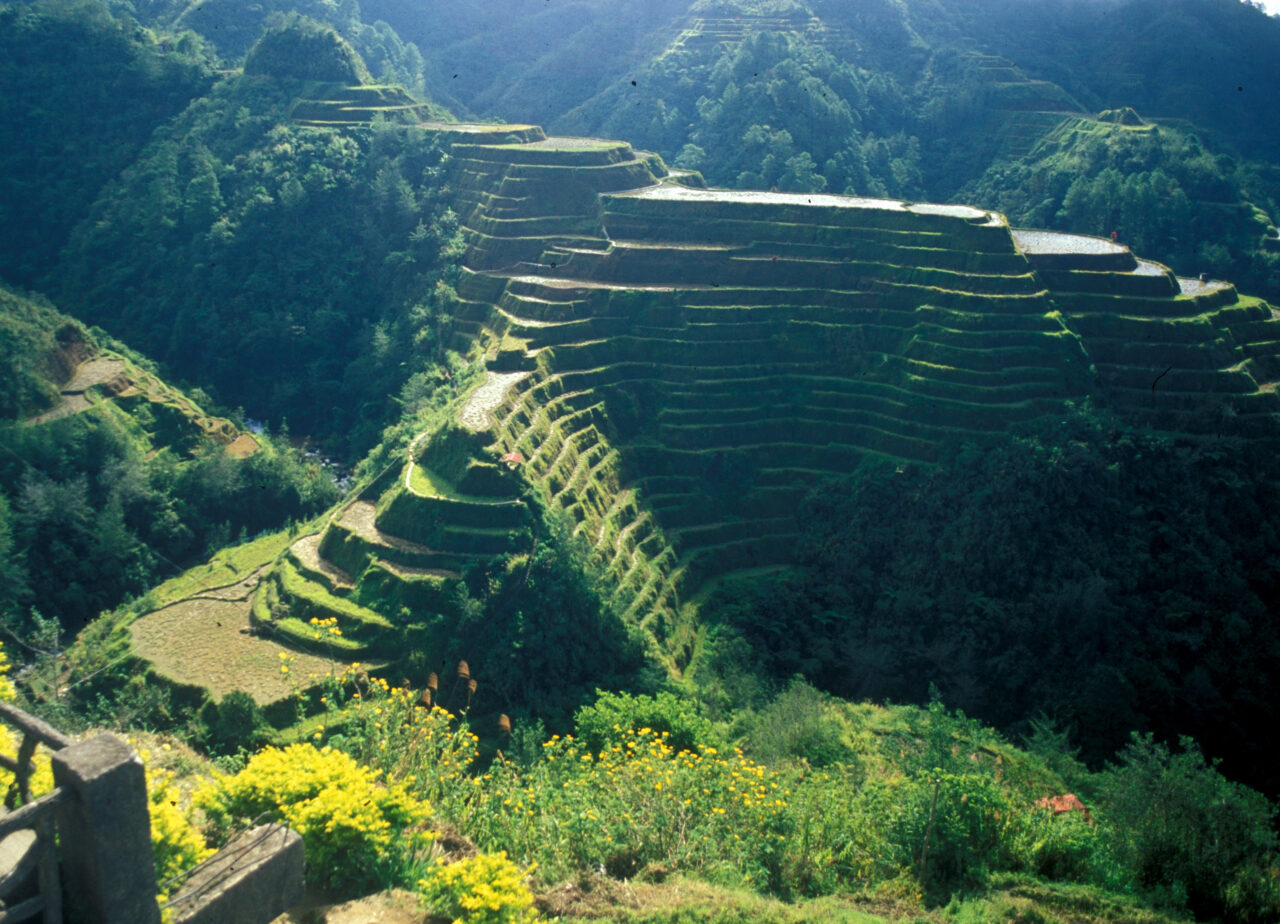
On my second trip to the Philippines, I first took a boat trip to explore Palawan Island, Busuanga Island and the Coron Islands, and then visited Filipino spiritual healers in Luzon. Half a year before, a 25 year old healer came to Switzerland and Germany, who obviously already had cult status. In any case, three dozen people were waiting in Zurich for a short session with this spiritual healer. One after the other, the people gathered in a darkened room and briefly told the spiritual healer, who was in a trance, their concerns, whereupon he examined them, palpated them and did strange things before my eyes, such as opening the body with the fingertip in certain places, whereupon the flesh wound opened up and he dipped his fingers into it. The Filipino spiritual healers are said to have the ability to dematerialize their fingers as they are dipped in order to merge with the body tissue. When he pushed his fingers deep into the flesh, they immediately became invisible under the surface of the skin and fused with the tissue. There were no more finger tips or tips to be seen, only the base of the fingers above the skin surface remained visible. And when he pulled his fingers out, they immediately closed the gaping wound, leaving behind a slightly reddened area on the skin’s surface. „Absolute madness!“ I have never seen anything like this before and only twice – with two spiritual healers in Zurich and now here in Luzon. Since then I perceive the world with different eyes and sensors. …
At the end of this Philippines trip I experienced another uncomfortable surprise. I was arrested at the airport when leaving the country, because I had the name of a person who was written out in the Philippines. So I had to go to the Minister of Tourism, on whose invitation I was in the Philippines, to be released and allowed to leave. Had it not been for him, I would have had to travel to Manila and present myself at the Department of Justice. Fortunately, I was spared that and so that other tourists in Switzerland would also be spared such a thing, I published the telephone number of the Minister of Justice in the daily newspapers with the reference that in such a case one should contact the head of the justice authority directly. This reference in the Swiss media was not appreciated by the Philippine Embassy. Even more: A few years later, when „Singapore Airlines“, my most important airline partner, invited me to the Philippines, I was suddenly disinvited again and elevated to persona non grata. …
India 2006: In the realm of loving hands with the Ayurveda pioneers
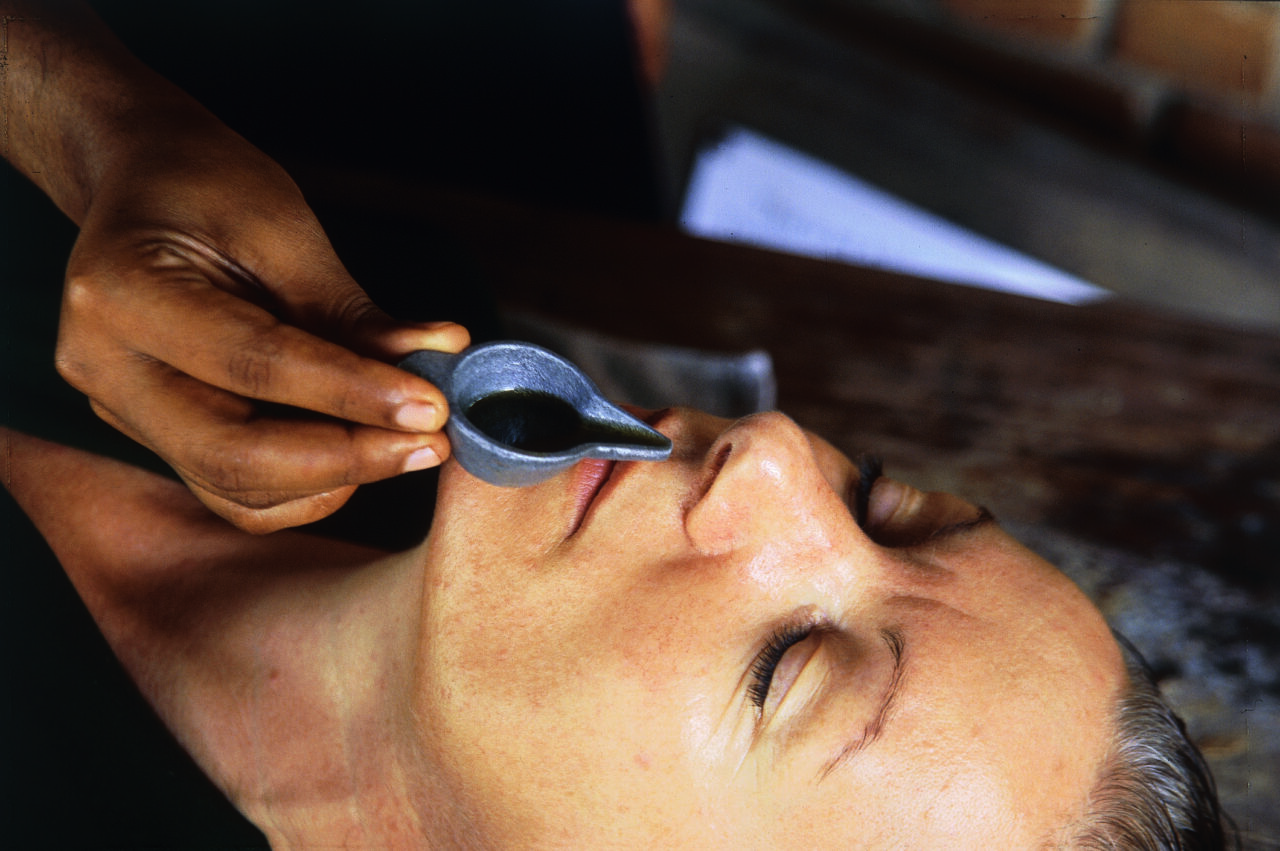
In 1996 I flew for the first time to India, namely to Kerala at the southern tip of the country to the up-and-coming Ayurveda resorts and clinics. I had previously come into close contact with Ayurvedic medicine in Sri Lanka and had done a Pancha Karma cleansing treatment and visited seven of the then best Ayurvedic resorts on the tropical island and compared them with each other. I was so fascinated by the Ayurvedic medicine I had experienced in Sri Lanka that I decided to travel to Kerala and met the South Indian Ayurvedic pioneers, the „cgh earth group“, who had already made a name for themselves with very exclusive resorts. Ayurvedic medicine was discovered over 5,000 years ago by highly gifted Indians in the depths of their meditation and spirituality, but as a result of colonization and professional bans by the British colonial government, it was suppressed for over 50 years before experiencing a revival in the 1990s. „A lot of knowledge was lost because of the ban,“ says Dr. Jayawardhana of the University of Colombo. Developed thousands of years ago in northern India, Ayurveda is a holistic system of nature that considers body, mind and spirit a single entity.Ayurvedic philosophy holds that all matter, including humans, can be traced back to the five elements of earth, water, air, fire and space. Ayurveda assumes that everything grows in nature that is needed to make and keep man healthy. Thus, plants, minerals, ashes, salts, barks, woods, roots and animal products are cooked and powdered and then made into pills, ointments and oils. The delicate yellow sesame oil is the base of all massage oils. It is rich in unsaturated fatty acids and makes brittle skin soft and smooth. To the sesame oil the doctor mixes other natural ingredients that are specifically adapted to the particular dosha type. The oil can thus have an optimal effect on the individual constitution of the person. No other medicine in the world has such a universal, profound and holistic cleansing system as Ayurvedic medicine and the Pancha Karma cure in particular. It is the mother of all cures! …
Gujarat 2013: the meeting with Narenda Moodi in Ahmedabad
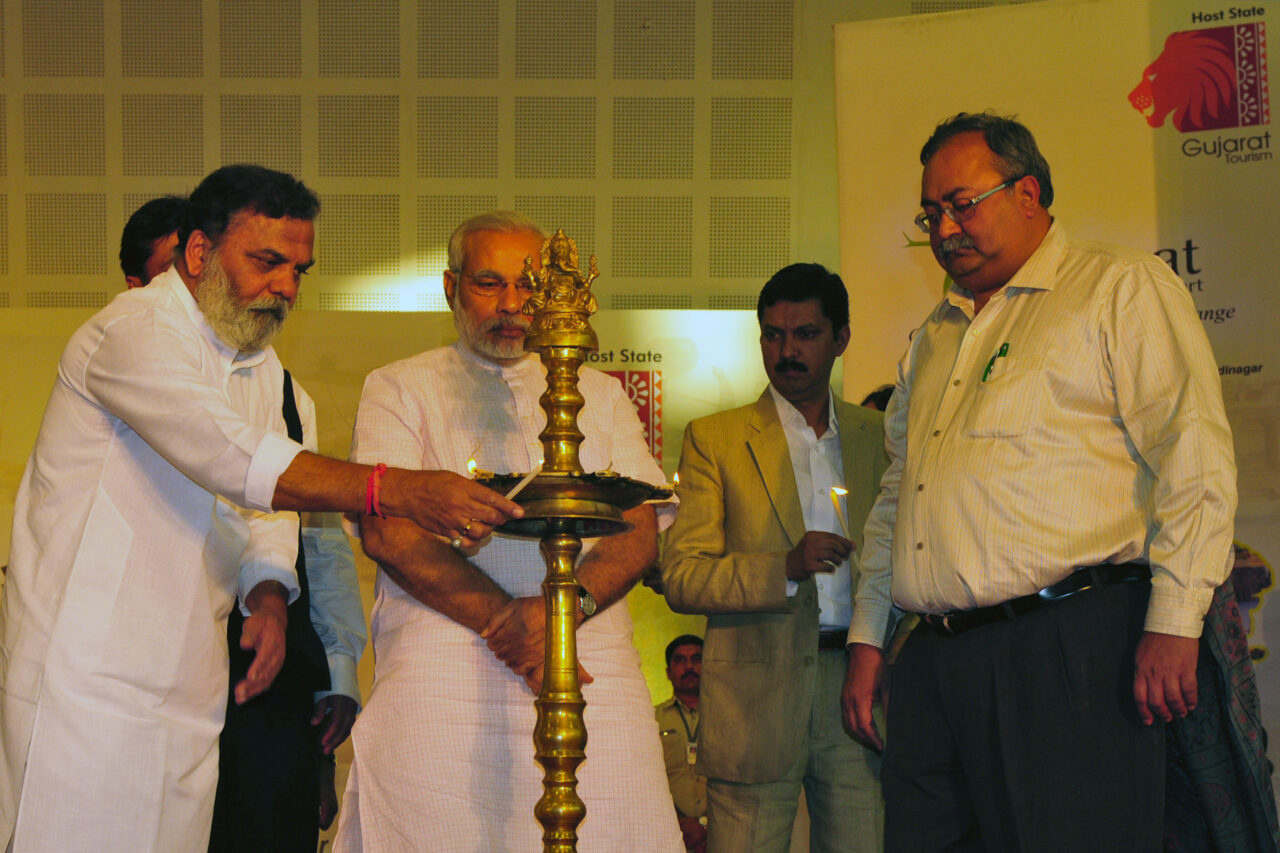
In March 2013, at the annual tourism trade fair „ITB“ in Berlin, in the hall where India and Indian tour operators presented themselves, I was approached about a press trip to Gujarat and gave my business card to the initiators. Just two months later, I flew via Dehli to Ahmedabad, the capital of the state of Gujarat, and there, to my amazement, I met about 150 journalists and influencers who had flown in from all over the world to get to know the tourist attractions of Gujarat. After splitting into different interest groups, we were carted around for five days and introduced to the tourist highlights. First was the Rani ki Vav stepwell near the town of Patan on the banks of the Saraswati River. A Unesco World Heritage Site, the temple complex was dedicated in the 11th century in honor of the king’s daughter of Khengara of Saurashtra of the Solanki Dynasty. The temple complex was a huge eight-story water reservoir and contains over five hundred frescoes from Hindu mythology of that time and still valid today. Another highlight was the Sun Temple in Modhera, this temple complex is also located on the banks of a river, the Pushpavati River. The sacred site was built between 1026 and 1027 BC during the era of King Bhima I of the Chaulukya dynasty. The temple complex consists of three com-plexes: The Shrine Gudhamandapa, the Unification Hall Sabhamandapa and the water reservoir Kunda. Then the journey continued in a jeep and took us into an inhospitable, dust-dry land to the Rann of Kutch, a saltwater marshland on the border between India and Pakistan. The Rann of Kutch is divided into two regions: The Great Rann Kutch and the Little Rann Kutch. The Greater Rann is located in Pakistan, while the Lesser Rann of Kutch borders it to the southeast and extends to the Gulf of Kutch. 20,946 km2 of the Little Kutch are protected area with a Wildlife Sanctuary, which was established in 1973. At the end of the trip we spent one more night in the Maharaja Palace in Poshina and before it went back to the capital of Gujarat Ahmedabad, where I visited the Ghandi Museum and then it came to the final meeting of the journalist event with the appearance of Narenda Moodi, of which until the hour none of the media representatives knew anything. It was only when some heavily armed soldiers with mine detectors and search dogs showed up that it was clear that there would be high ranking visitors shortly. Then a small escort drove up and Narenda Moodi ascended in the presence of the tourism minister of Gujarat and some other officials and made clear to all his ambitions for the Indian presidency, a goal that he then also achieved and since then has divided India with his Hindu nationalist course. …
Egypt 2004: Witnessing two terrorist attacks among the Bedouins in Sinai
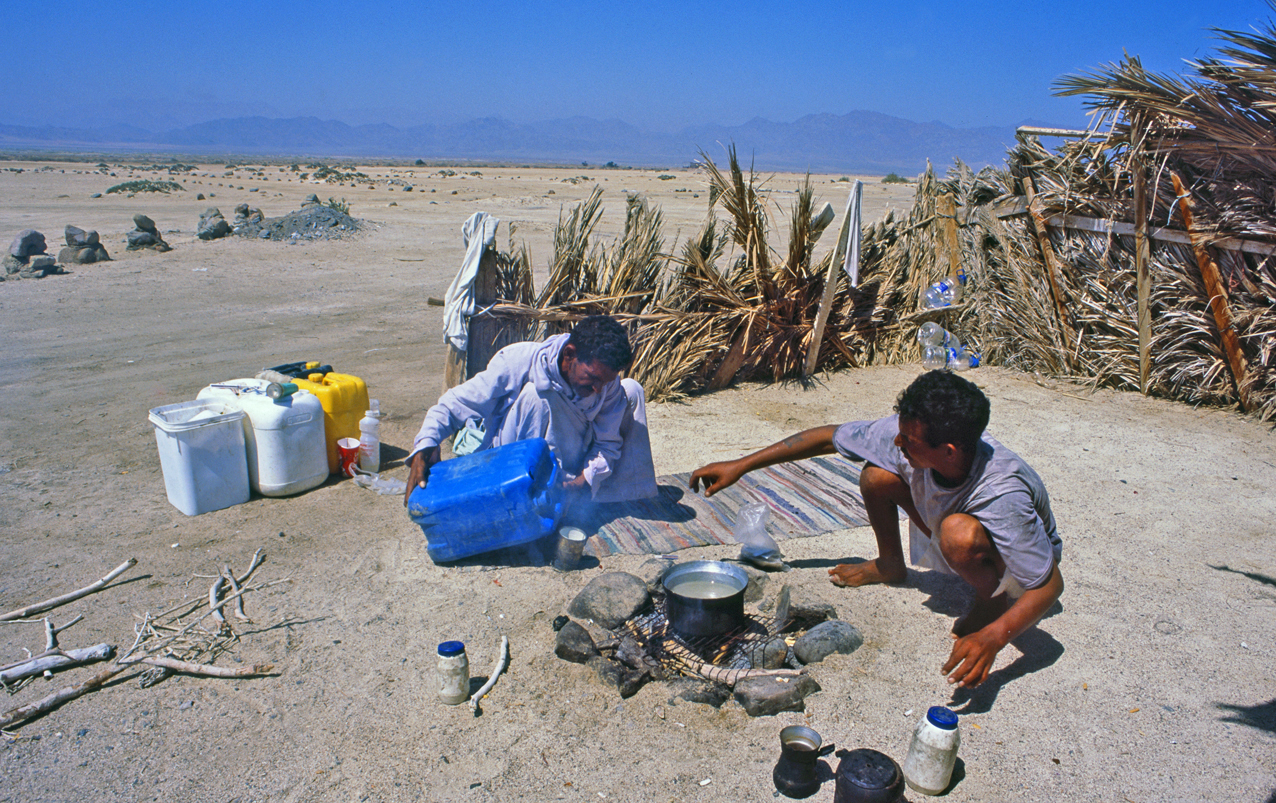
Arrived in Sinai in 2005, more precisely in Sharm el Sheikh, the situation as resident manager for a Swiss tour operator was again quite different. this assignment was a real challenge. The first two months in Sinai I lived in the „Radisson „Hotel“ with all tourist amenities, good infrastructure and nice ambience. Then I was shipped off to a spartan concrete block for the local tour guides in a dreary environment, whereupon I got a special permit from the Governor General for the restricted military areas in Sinai (due to the UN peacekeeping mission after the Six-Day War), so that I was allowed to drive into the restricted areas in the desert outside Sharm-el-Sheikh at night. What was I doing there at night? Well, as always, access to the local color and locals outside the tourist hotspots. In this case, access to the life of the Bedouins in Sinai and to my friend Faroud. With outside temperatures during the day reaching over 50 degrees Celsius, life in the desert takes place at night. Since I had made the acquaintance of Faroud, who lived alone at the shipwreck „Maria Schroeder“ in the Nabq National Park, I could now meet him after work in the seclusion of the desert, escaping the tourist hustle and bustle, and spend a few spiritual and poetic hours under the sparkling firmament. The journey to him was not so easy, because the 35 km through the desert and sand dunes had it in itself. I covered the distance with the official vehicle, thus a conventional passenger car. In pitch-dark surroundings it meant to drive then with much speed over the dunes, without getting into the faltering, because without 4-wheel drive there was normally no getting through here. But I found a way and twice a week I drove into the desert at night to parley with the young Bedouin, to philo-sophize and to enjoy the twinkling stars without light pollution. …
At the time I was stationed in the Sinai, there were two of a total of three major terrorist attacks. The first was in Taba, the second and largest attack occurred in July 2005 in Sharm-el-Sheikh and claimed 88 lives, and well over 100 were injured. The third terrorist attack occurred on the evening of April 24, 2006, in Dahab, a diving hotspot, in which three fragmentation bombs were detonated. The first detonated at a busy intersection in front of the „Ghazala“ supermarket across from the police station. Two others exploded a short time later on the seafront. Around 30 people, almost all Egyptians, lost their lives in the attack. Many more people were seriously injured. We were very close to a catastrophe, because we remember the terrorist attacks of November 17, 1997 in Luxor, where 36 Swiss lost their lives. But the fear was great and the security measures in front of each hotel rigorous. Each car was carefully mirrored and frisked before entering the hotel driveway. X-ray machines scanned every hotel guest entering. …
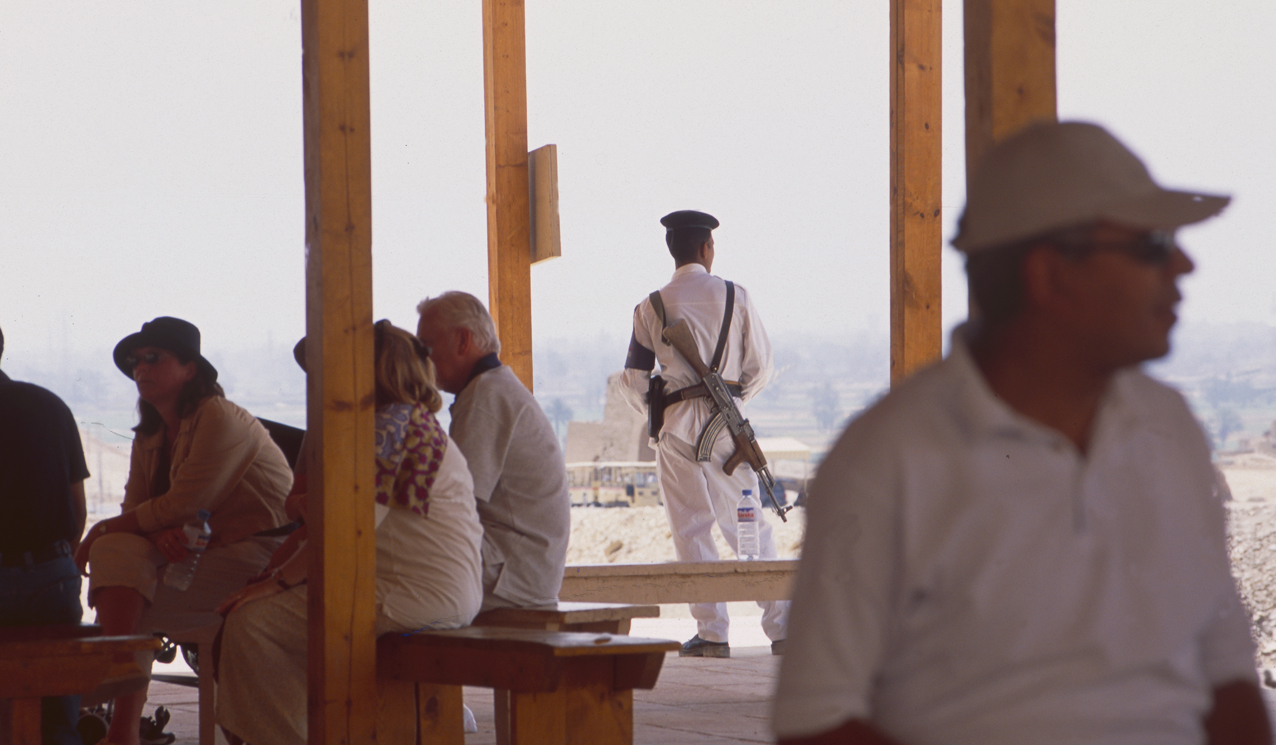
All the crazier was a trip with two vehicles and seven Swiss tourists, who absolutely wanted to make a trip to Cairo with me in the car, across the whole Sinai, from the southern tip of Sharm-el-Sheikh in one day to Cairo including the return trip with a total distance of over 1000 km and a good 30 military roadblocks on one way. My local co-driver and I managed the feat and needed 27 hours for the oxen tour. Three hours longer than planned, because I overlooked the last but one military roadblock in my tiredness after more than 24 hours at the wheel and roared with about 70 kilometers per hour through the barriers built up in a serpentine line – nota bene without touching a single one. …
Lebanon 2006: In the Palestinian Camp „Shatila
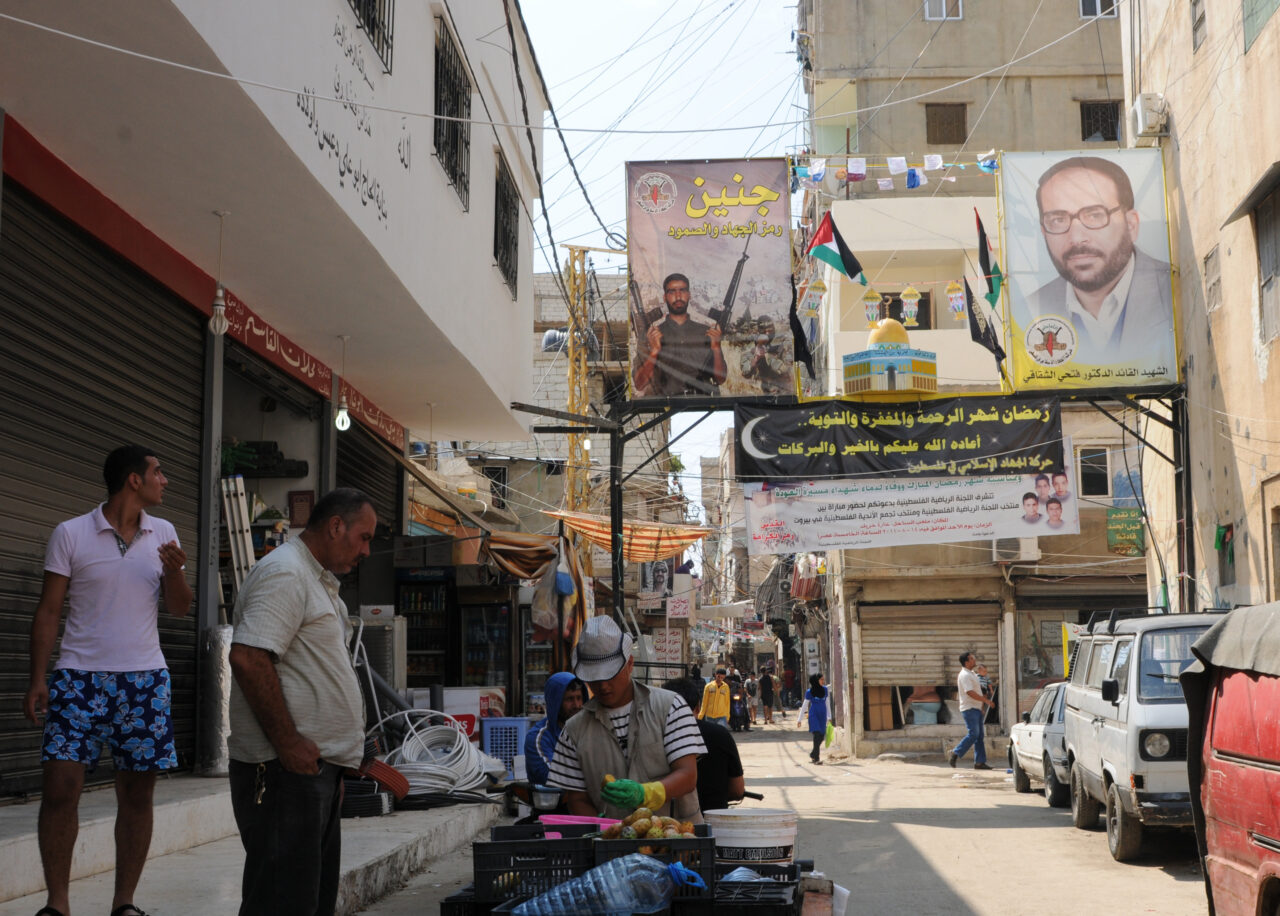
I have already visited many conflict regions and even experienced critically hot phases, but I did not dare to enter the Hezbollah quarters without appropriate contacts and connections or a locally familiar person in the background. But in order to establish contacts, the time until my departure within a few days was too short. In addition, one of the most important protective factors in my work is not only to speak the language of the population, but if possible not to be recognized as a foreigner or stranger. I could not use these trump cards here. During my short stay, I was stopped and briefly interrogated by the Lebanese army three times in one day alone. In the Hezbollah quarters it became even more uncomfortable. Almost on every third corner you were stopped as a foreigner and asked who you were and what you wanted here. Hezbollah is Iran’s most important ally in Lebanon, not only from a military but also from a political point of view, because Hezbollah, together with its allies, is the most important political force in the imploded country on the Levant. Lebanon serves Iran as a military front against Israel and that outside its own territory, therefore the Assad regime in Syria is also an ally and Iran’s only strategic partner. Due to the precarious security situation and without local contacts or adequate protection, I withdrew from this neighborhood and arrived instead at the Palestinian refugee camp of Shatila. There, a Palestinian refugee showed me the three massacre sites. The Sabra and Shatila massacre is the name given to a cleansing action perpetrated by Phalangist militias, i.e. Christian Maronite soldiers, directed against Palestinian refugees living in the south of Beirut. In September 1982 – in the middle of the Lebanese civil war – the two mentioned refugee camps, which were surrounded by Israeli soldiers at that time, were stormed and hundreds of civilians were massacred by the Christian, i.e. Phalangist militias. …
The Persian Poppy Shah and His Diplomatic Drug Princes
Humanitarian reasons did not count in the Persian empire of the Shah of Persia. As one of the most merciless persecutors of narcotics traffickers, Mohammad Reza Pahlavi had had well over 100 people shot for illegal possession of drugs since 1969 on the basis of his anti-drug law. Anyone caught in Persia with more than ten grams of heroin or two kilograms of opium was sentenced to death. All the greater was the unease and political dilemma in Switzerland over the course of the Geneva affair, when a member of the Shah’s team, who broke off his winter vacation in St. Moritz because judges and individual members of the authorities in Geneva had demanded that the immunity of the opium prince, who was not accredited in Switzerland, be lifted in order to initiate criminal drug proceedings. After all, Persia was Switzerland’s third most important trading partner in Asia at the time and, moreover, one of its largest arms buyers. In 1969/70, Swiss war material producers sold weapons systems in Iran for over 90 million Swiss francs. For the sake of the prominent St. Moritz winter sportsman Resa, the most prominent anti-Shah agitator, Bahman Nirumand, was also not allowed to speak publicly in Switzerland at that time. In the same year that the Shah enacted the world’s toughest drug prohibition laws, Mohammad Reza Pahlavi lifted a 1955 ban on opium poppy planting and ascended to the throne of poppy farmers: 12,000 hectares of poppy crops belonged to him and his family. According to the WHO in Geneva, the heroin and opium extracted from the imperial poppy could only be used medicinally to a very small extent. Thus Persia, along with Afghanistan and Turkey, was the hubs for the illicit trade. At the time, UN drug investigators noted another conspicuous fact: While all countries had destroyed the drugs they had seized, only 329 kilos of the 18.4 tons of seized drugs were destroyed in Iran, 152 kilos went to the legal trade. of the remaining 17 tons, the Shah had them distributed throughout the world via his diplomatic couriers. Suspicions that Persian diplomats were smuggling heroin and opiates for their emperor’s foreign exchange coffers had not only arisen since the Huschang affair in Geneva. In 1961, when poppy planting was banned in Iran, the Shah’s twin sisters, Princess Ashraf, were also reportedly caught at Geneva’s Cointrin airport with a suitcase full to the brim of heroin. Only their diplomatic immunity, according to the „National-Zeitung“, saved them from prosecution. How does the situation look today? …
The Murderous God State and General Qassam Soleimani’s Execution
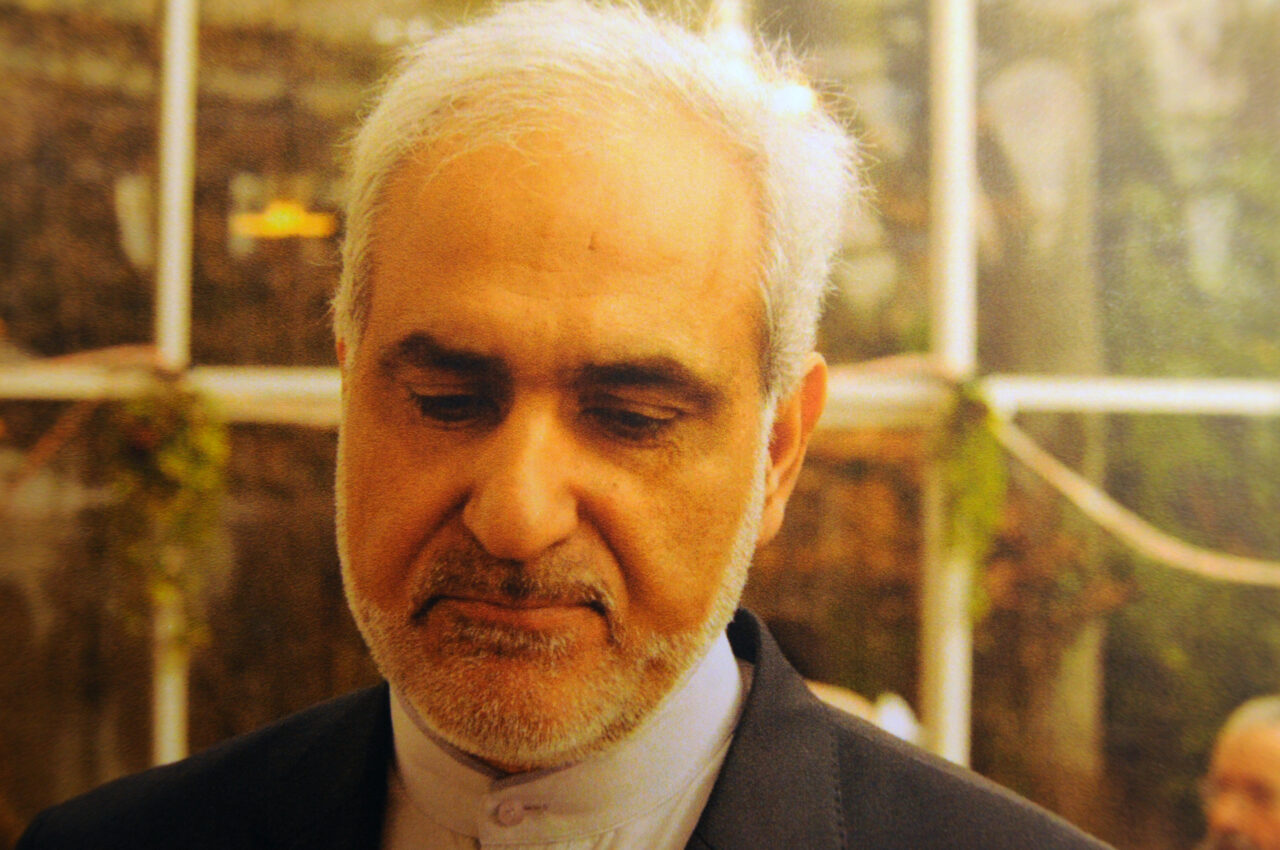
What „the hell“ prompted the Iranian ambassador in Switzerland, Alireza Salari, to invite me to the diplomatic celebration on the occasion of the 35th anniversary of the Iranian revolution at the embassy in Bern, I do not know. I expected a short media appointment amidst a crowd of journalists and a few words „on the state of the nation“. But it turned out differently, I was the only media representative and press photographer among a hand-picked selection of non-state guests. All the other 150 or so invited guests were diplomats, spies or both. Things got even more interesting when Iranian Foreign Minister Mohammed Javad Sarif also appeared at the Iranian Embassy in Bern and was enthusiastically greeted by Alireza Salari. Switzerland and the Iranian Embassy in Bern, as well as the accredited representatives to the United Nations in Geneva, played an important role in world politics in the diplomatic relations between Iran and the United States. As with Cuba, Switzerland serves and acts as a neutral country and mediator of diplomatic interests between these countries. The nuclear negotiations with Iran also took place in Montreux at that time. From this point of view, Switzerland and the „UN“ in Geneva are the hub for the diplomatic relations of the USA with Iran and Cuba. Therefore, I would like to introduce a string-puller of Iranian foreign policy and look at his capabilities as well as his great influence on world affairs. We are talking about General Qassam Soleimani, the „Che Guevara“ of the Iranian revolution, who ended up in about the same way as his famous Cuban predecessor, who had the same idea and exported the Cuban revolution not only to all the countries of Latin America, but also went so far as to support communist or Marxist countries in Africa as well. …
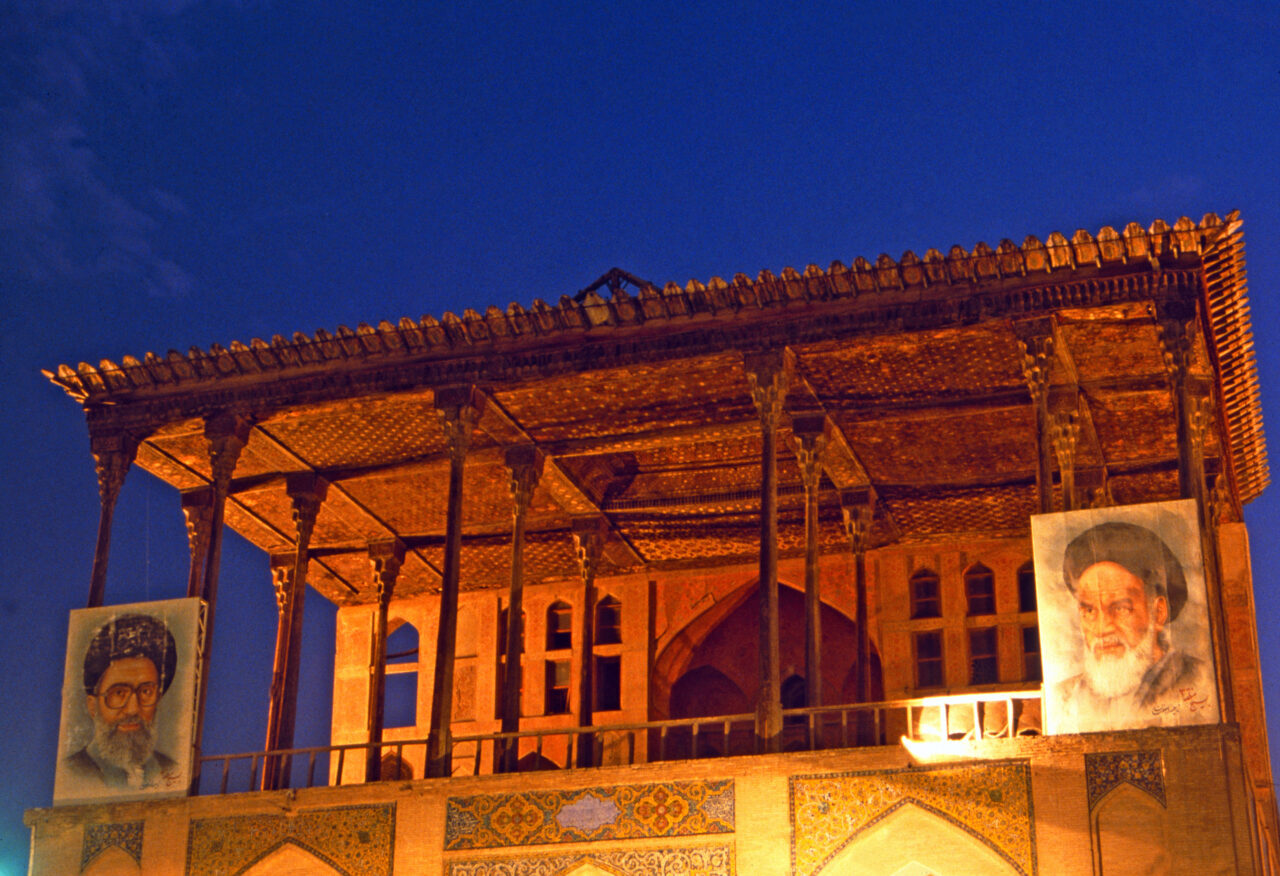
General Qassam Soleimani, Tehran’s longtime gray eminence, was appointed head of the „Khuz“ brigades by Khomenei in 1998 and coordinated attacks on the Israeli occupiers from Lebanon until they withdrew two years later. Israel’s invasion of Lebanon is a grave mistake in retrospect because it fueled Iran to build up Hezbollah in Leba-non and to attack Sunnis in Iraq with Shiite militias, according to then-Iranian Deputy Foreign Minister Hossein Amir-Abdollahian. Soleimani was also the creator of the „Axis of Resistance to Imperialism“ and the longtime chief strategist in Iranian foreign policy aimed at „engaging imperialists abroad, uniting the Shiite community across the Middle East, and defending the faith community against Sunni claims to power.“ In particular, the eight-year Iraq war, which cost the lives of over a million Iranians, and the Israeli invasion of Lebanon, shaped Soleimani, who grew up under the „Revolutionary Guards“ and „Khuz“ brigades, a special forces unit. Iran has benefited from the collapse of Iraq and the consequences of the Arab Spring, massively expanding its influence in the region. Tehran is driven by three main interests: the three components of Iran’s foreign policy are ideological, geopolitical and security strategies. Ideologically, Iran sees itself as a protective power of oppressed Muslims in the context of a revolutionary resistance force against Israel and the United States. Geopolitically, Iran aims to stand up to Saudi Arabia to expand its influence in the region. The rivalry is being played out in Syria or Yemen. …
Species extinctions & pandemics: Will we survive?

In this chapter, I would like to go into detail about the scientific findings of the SOS state of Mother Earth as a result of climate change and the consequences for the world’s population, as I have been dealing with this for a good 30 years and have seen the dramatic effects worldwide. I have been most impressed by the indigenous peoples around the globe with their understanding of nature. It is they who are often among the first to suffer and be displaced. But also the young and the next generations will have to realize stunned that in the consumption rush after the oil crisis in 1975 and especially since the beginning of the 90s we have burned almost as much gas, coal and oil as not in a million years of earth history before. And this, although the sun has always sent 10,000 times more energy to the earth’s surface than man needs and mankind, despite environmental scientific knowledge and photovoltaics available since the 1950s, is politically unable to follow and certainly unable to act adequately. Also all the causers, the oil, coal and gas industry, which despite better knowledge for 50 years with billion-heavy disinformation campaigns their disastrous raison d’être at the expense of the society, nature and geosphere legitimates – unfortunately until today with success. It is not excluded that with the great species extinction also our species will become extinct and man will become planetary history. Mankind has blown more than 2000 billion tons of CO2 into the earth’s atmosphere. There are still 350 billion. tons of CO2 emissions to meet the climate goal of limiting global warming to 1.5 degrees and a good 1100 tons to limit warming to two degrees. An analysis by the scientific journal „Nature“ concludes that all existing plants worldwide will still emit around 700 billion tons of CO2 over the course of their normal lifetime. tons of CO2 over the course of their normal lifetimes. So there is little hope that we will reach the two degree target at all“, says Walter Rüegg, who worked for 15 years as a nuclear and particle physicist at the „ETH“ and then for 30 years for „ABB“. …
Butterfly effect: Hedge funds are the drivers of wars and climate change

A good 500 companies with well over 10,000 employees work in the commodities industry in Switzerland, which had its first notorious protagonist in March Rich, who made it to dubious fame when he first hit the headlines in the 1970s. The Belgian-born U.S. citizen ensured that commodities trading became significant in Switzerland. His unscrupulous oil deals with South Africa and Iran, circumventing international sanctions during apartheid, helped the „father of the Swiss success model“ to immense wealth and put him on the list of most wanted criminals in the US until Bill Clinton, the godfather of neoliberals pardoned him in 2001. We recall that Clinton and Greenspan also pushed for the liberalization of food markets, triggering the hedge fund scourge. Back to Switzerland. In this country, Christoph Blocher and Martin Ebner were among the most ruthless liberalizers in the 1990s. We know from „Bloomberg“ journalists Javier Blas and Jack Farchy that Ebner was among the saviors of Marc Rich’s empire, and „Glencore“ boss Ivan Glasberg also earned his spurs in Johannesburg, South Africa, and learned much from his master in illegal oil deals and evasion of sanctions, even though he worked in the coal department. Low taxes, a central location in Europe, a stable Swiss franc and access to the international financial system, and weak regulation have provided fertile ground in Switzerland in recent decades for companies that exploit the world’s resources and pay little in the way of taxes. From „Glencore’s“ environment emerged other successful commodity traders such as „Vitol,“ which helped the island nation of Cuba secure oil deals in exchange for sugar at favorable prices when Cuba defaulted.
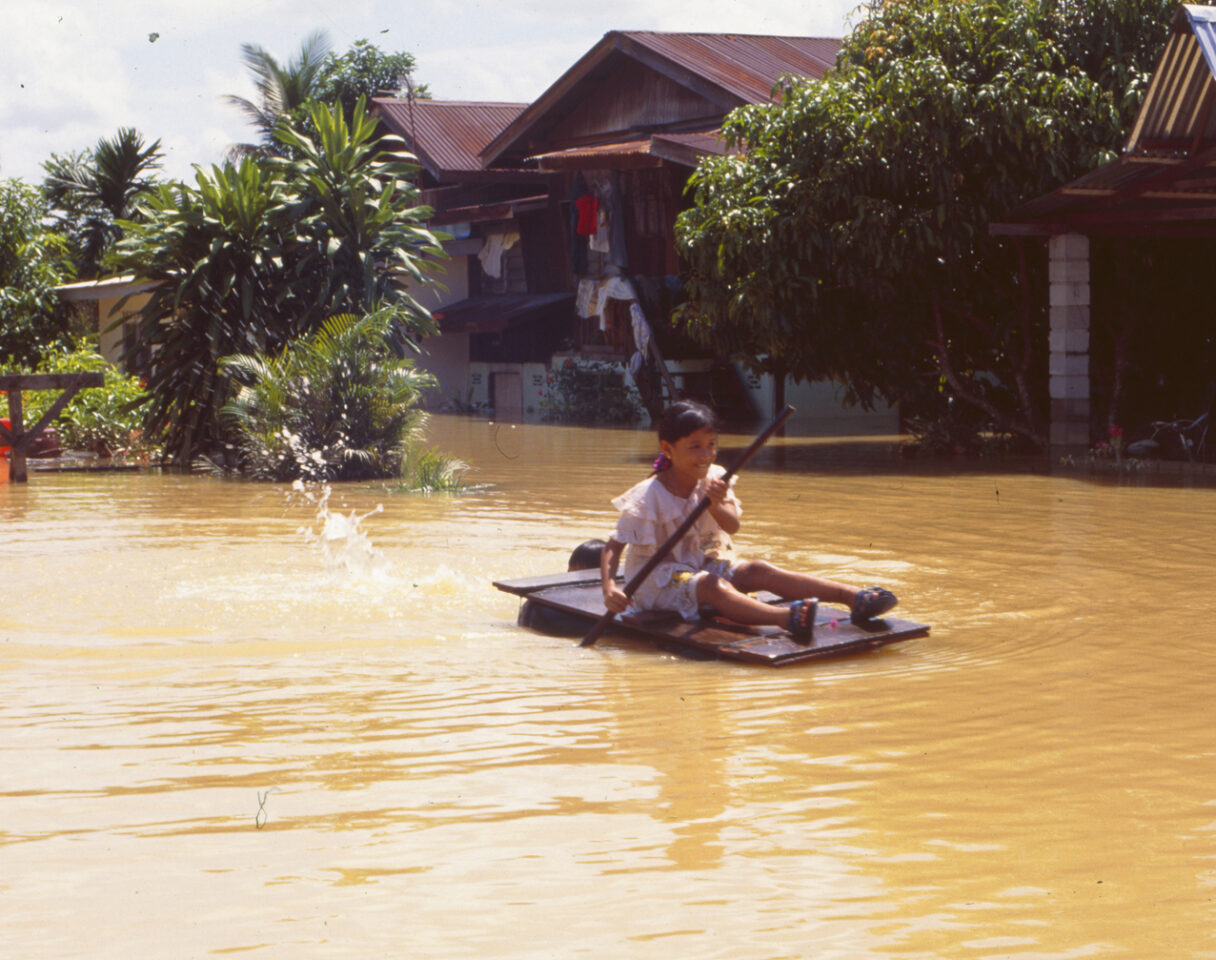
Swiss commodity traders control almost 80 percent of global trade and act unscrupulously. The „Gunvor“ case in the Congo, the machinations of „Credit Suisse“ in Mozambique and the money laundering affair in Bulgaria are examples of the tip of the corruption iceberg. Although the Federal Council confirmed in a report „the great risk of corruption“, it did nothing further to strengthen banking supervision and curb money laundering. Commodity traders „Glencore,“ „Trafigura,“ „Vitol,“ „Mercuria“ and „Gunvor“ received a total of $363.8 billion in loans from 2013 to 2019, according to research by Public Eye. „Public Eye“ also investigated the high-risk financial instruments and practices of commodity traders, which now function as banks themselves, but largely evade financial control and banking and financial supervision „finma“. „Gunvor“ paid 164 million fine in the USA for the misconduct in Brazil, Ecuador and Mexico. It is repugnant that large corporations, banks and the super-rich can repeatedly buy their way out with ridiculous fines, while others go to jail for much lesser acts. …
South Seas Pearls 1996: At the Gate to Paradise
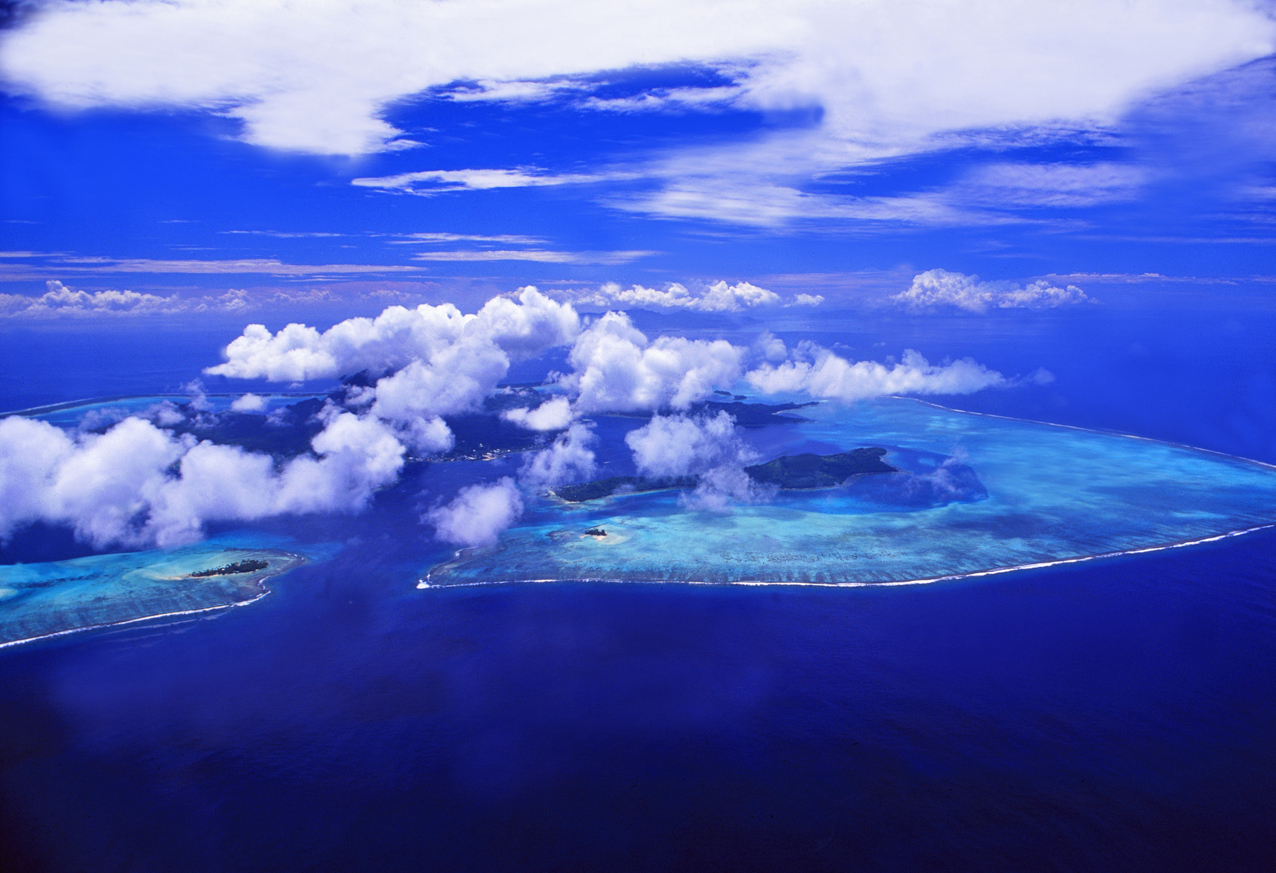
The magic of the South Seas has made many poets go into raptures. The whole fund of occidental poetry and fantasy has been exhausted to describe the glory of Polynesia and the gentle way of life of the Maori. A mosaic of light and color surrounds the widely scattered chain of islands. Like luminous white pearl necklaces, the shimmering islands, covered with emerald green vegetation and fringed by ring-shaped reefs, stand out from the first turquoise, then deep blue Pacific Ocean. Well over 2500 atolls are lost in the boundless expanse of the Pacific Ocean, which with its 182 million square kilometers swallows up a third of the earth’s surface. The volcanic islands and coral atolls delimit the depths of the sea, turn its opulent underwater splendor upward and unfold the beauty of the colorful coral gardens with great abundance of species and shield the islands, often located only a few meters above the sea surface, from the surf. Tahiti, the „island of multicolored waters“ is also a symbol of the transfigured myth that covers the South Seas like its sparkling firmament with enchanting impressions. In the South Seas the creator once wanted to show what he was capable of, the poet Robert Brooke recorded. Gaugin, too, fell into a painterly impressionistic frenzy of colors and senses. Especially Moorea, which is less than half an hour away from Papeete by catamaran, is taken to heart by many. Right next to the 900 meter high Mount Rotui is the famous Cook Bay. Indeed, one cannot help but paint the South Seas in the most beautiful colors and praise it in the highest terms. In view of the gentle and strong charisma of the islanders, one is tempted to elevate their world to a paradise on earth, when graceful, strong men row their canoes through the water at the speed of an arrow or graceful creatures sit under the coconut palms, mango, papaya, avocado and breadfruit trees.
Mauritius: Symphony in turquoise and white with the world’s best spa resorts
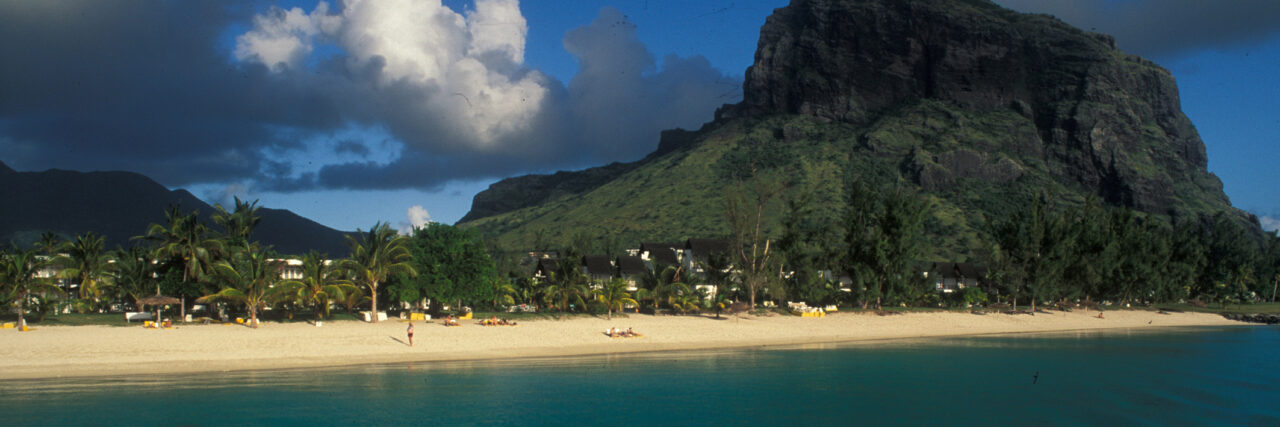
To be under shady filaos on the coral-white sandy beach under the steel-blue sky and to have the turquoise-blue shimmering lagoon in front of your eyes – Mauritius offers such paradisiacal views. You should be a painter, you think, when you see Mauritius for the first time. The shades of blue of the sea and the sky, which contrast so clearly with the white of the beaches, captivate you. Behind them, the lush green of meadows, palm trees, sugar cane plantations and tropical vegetation. The fertile volcanic soil allows the most wonderful fruits to flourish, for example sugar-sweet pineapples, mangos, papayas or cinnamon apples. What a variety of colors. The same is true for the Mauritians. From ebony black to saffron yellow to pearl white, the color shades of the Mauritian population range. It is a colorful mixture of peoples, two thirds of the islanders are Hindus, about 180’000 are Arabs, mainly Sunnis. There are also tens of thousands of Chinese, Hakkas and whites, mostly of French origin. The more than 300,000 Creoles are descended from African and Malagasy slaves, white settlers, Indian agricultural workers and Chinese traders. Thus, Asian art of living mixes with the European colonial heritage, the result makes the magic of this island area and captivates tourists. …
Australia’s fantastic natural paradises and the dirty coal industry
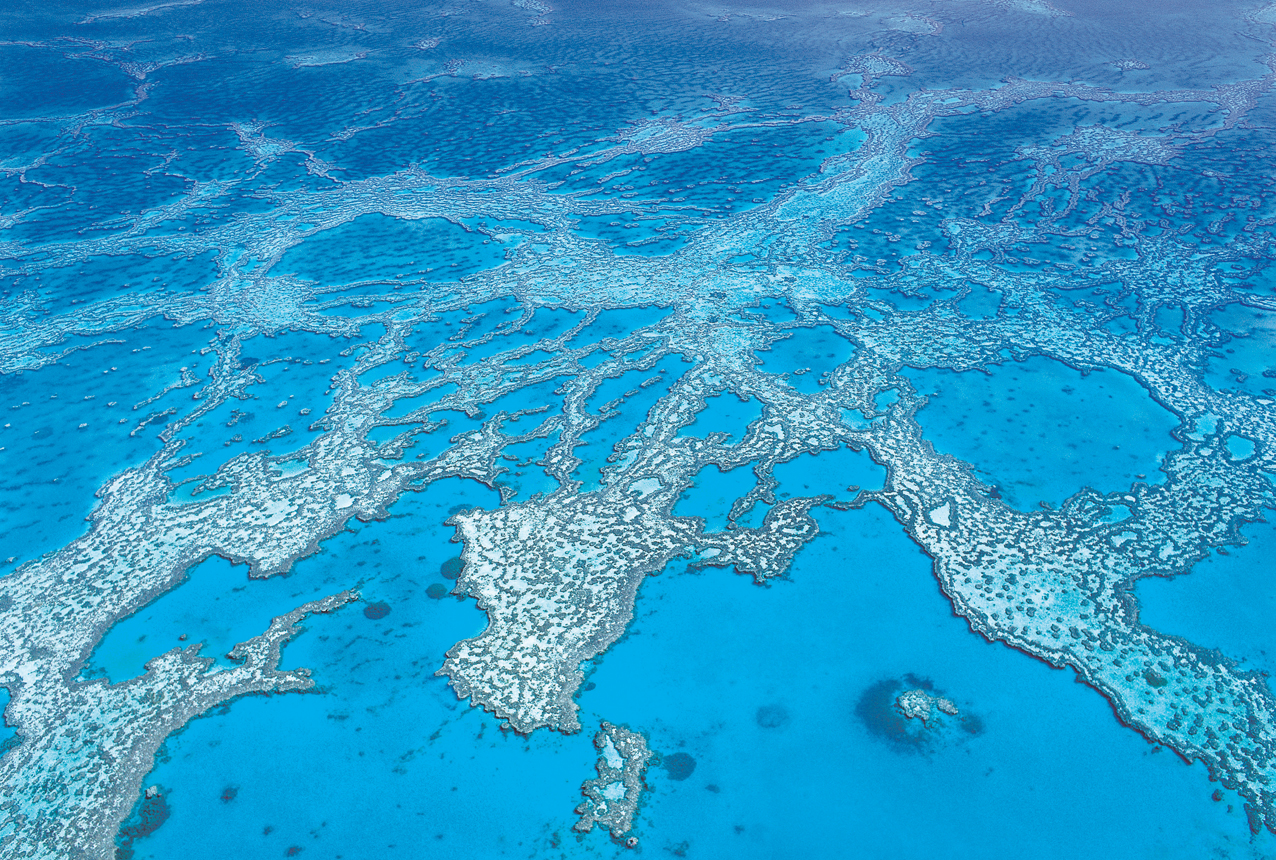
Fraser Island is ancient and carries the eternity of over 220 million years of evolutionary history under its hump. Sand has been washing up and accumulating on the island for two million years. During the Ice Age, this landscape was formed and in its present form it has existed for about 6000 years. With the warming of the climate 140,000 years ago, the first traces of the Aborigines appeared there, but it is assumed that the Butschulla aborigines settled on „KGari“ Island, as they called the island at that time, only 20 million years ago. The attraction of the island microcosm are the up to 240 meters high sand dunes, 120 kilometers of beach, over 100 crystal clear freshwater lakes, which spread between eucalyptus forests, palm groves and a sea of ferns in the gigantic dune landscape as well as a large, protected bay, the Hervey Bay, which offers the humpback whales between August and October a protected retreat. The crystal clear waters of Lake Mc Kenzie beckon for a refreshing swim. Its shore lined with white sand is not only a popular resting place after the trip through the rainforest, but also the dingos and walabis (mini kangaroos) come here to drink. But the dingos also come because of the bulging provision bags of the tourists. Many a fine morsel falls off for the wild dogs. Then we continue to Lake Wabby, which is surrounded by dense rainforest on this side, while on the other shore you can roll down from the sand dunes almost reaching into the sky and splash into the water. The gigantic freshwater reservoirs hold a combined ten to twenty million mega-liters of fresh water. Fraser Island is ancient and carries the eternity of over 220 million years of evolutionary history on its hump. Sand has been washing up and accumulating on the island for two million years. During the Ice Age, this landscape was formed and in its present form it has existed for about 6000 years. With the warming of the climate 140’000 years ago, the first traces of the Aborigines appeared there. …
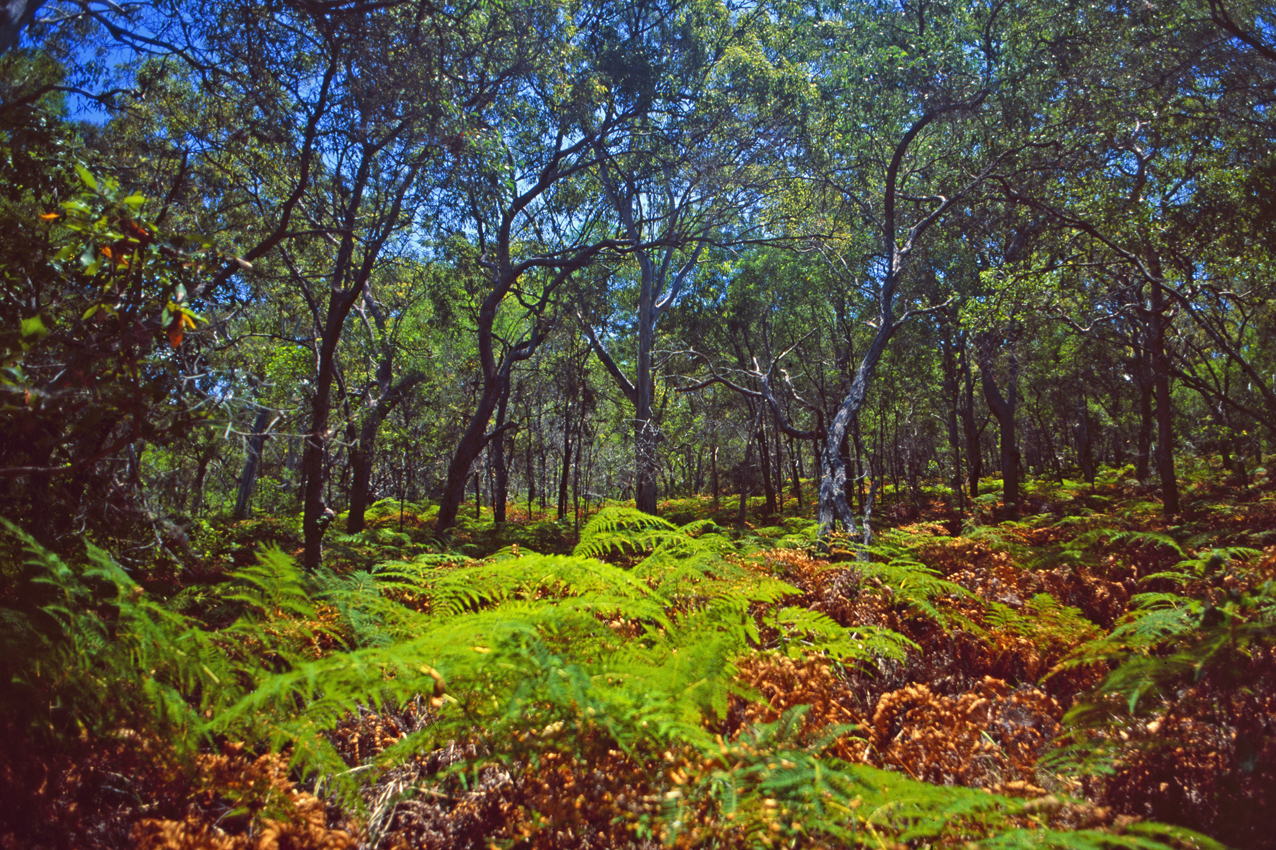
Not far from the city of Cairns is the Tapukjai Cultural Village, where visitors are introduced to the culture and customs of the local Aborigines. If you drive further north along the coast, you first come to Palm Cove, a small charming nest, then you continue to Port Douglas, where the famous Thala Beach Lodge and the Daintree Forest Lodge are located, the latter has been awarded several times as the most environmentally friendly accommodation in Australia. At the Wawu-Jirakul Spa (which means „cleansing of the spirit“ in the Aboriginal language), the five elements of earth, water, fire, air and ether are celebrated into a fantastic wellness cocktail amidst a waterfall in the jungle that served as a sacred cleansing kraal for the Kuku Yalanji Aborigines and a yoga site for Brook Shields. For the spa treatments, in addition to essential oils, various sandstones are used, which the Aborigines use not only for their body paint but also as food. I am amazed, whereupon the Aborigines walks with me around the spring, reaches into the loamy earth at three places and strokes a smear on my naked leg. Immediately I see that one stripe is sand-yellow, the second clay-gray and the third reddish colored. „See here we have zinc, copper and calcium mineral layers. Once you run out of food,“ he says to me, „you flush the clay down with water and get minerals that way!“ Not bad, I thought, nevertheless I would not like to come into such a situation to have to eat this porridge. …
Opal seekers in Coober Pedy: Hope lives underground

Between Adelaide and Alice Springs, somewhere in the middle of a glowing hot, inhospitable lunar landscape, lies the then 5000-strong nest of Coober Pedy, also called „Opal-Miner City“. The inhabitants live in subterranean mole-like structures and also spend the day underground, in tunnels, equipped with dynamite to carry out further blasting. Glimpses of the life of opal prospectors in a dynamite-laden underground, driven by the hope of quick riches and exposed to the risk of failing miserably – real fortune seekers, in other words, from all parts of the world can be found here doing their dangerous work. Men from Albania, Italy, Croatia, Greece, Serbia, Poland and even Switzerland are digging for precious stones in the hot outback. Desolation, scorching heat, lots of dust and rubble, and endless hardships – the opal prospectors are spared nothing. Four-fifths of the population lives underground in the tunnels, which have been converted into apartments and have light and ventilation shafts to the top. The supermarket, the gas station and the church are also underground. As recently as the late 1990s, you could just stake a „claim“ and start drilling and blasting. Lucky people who left Coober Pedy as rich men are few and far between. The large cemetery in the desert nest is eloquent testimony to that. …
Maldives 93: First signs of climate change become visible
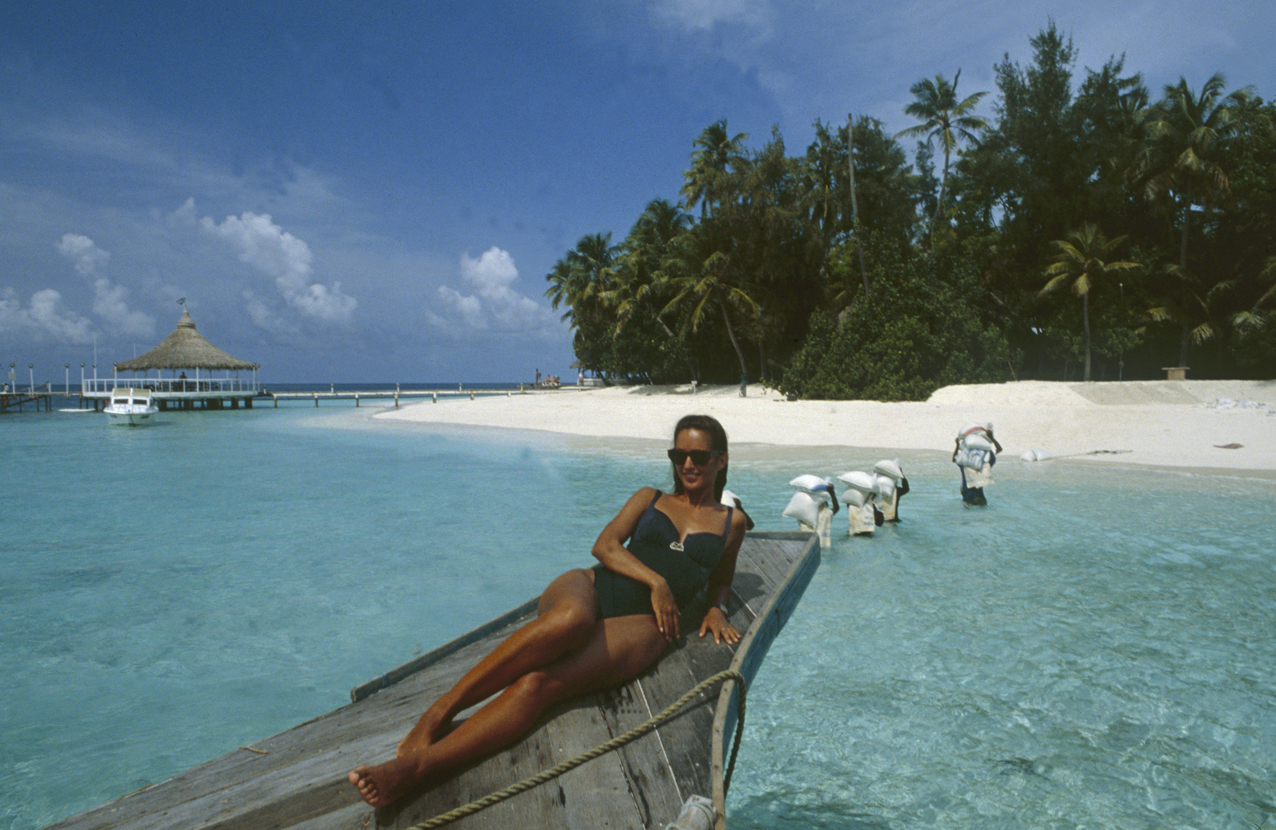
The nearly 1800 coral atolls stand out from the deep blue Indian Ocean like a shining white string of pearls. A mosaic of light and color surrounds the chain of islands scattered from north to south across seven degrees of latitude. Each of these islets, covered with smaragd green vegetation and fringed with turquoise blue lagoons and ring-shaped reefs, which rise from the depths of the seabed and turn its opulent underwater splendor upward, looks slightly different again. The outer reefs shield the atoll, which often rises only a few centimeters above the water surface, from the surf. The colorful coral gardens were then home to a tremendous abundance of species. A picture book idyll of sea, sun and palm beach and secluded island romance as well as an Eldorado for divers as well as water sports enthusiasts, awaited me on the first tourist island of Ihuru. The downsides, however, are: A fragile ecosystem, which is endangered by the rise of the sea level and especially by tourism. An island kingdom that was already visibly threatened in its existence by global warming in the early 1990s and is probably irrevocably doomed. In addition, the mountains of garbage left behind by tourists on the islands and on nearby Male are testimony to the growing environmental pollution and the destruction of fragile ecosystems. Since tourism has replaced fishing as the main source of income, a flood of garbage has poured over the tourist islands and coral gardens along with the tourist boom. Apart from fish, coconuts and bananas, all other consumer goods have to be imported. The fuel consumption for the transport of the goods to the tourist islands already devoured a lot of fuel at that time and was reflected in second place in the import statistics.
In the realm of loving hands at the top Ayurveda resorts in Kerala
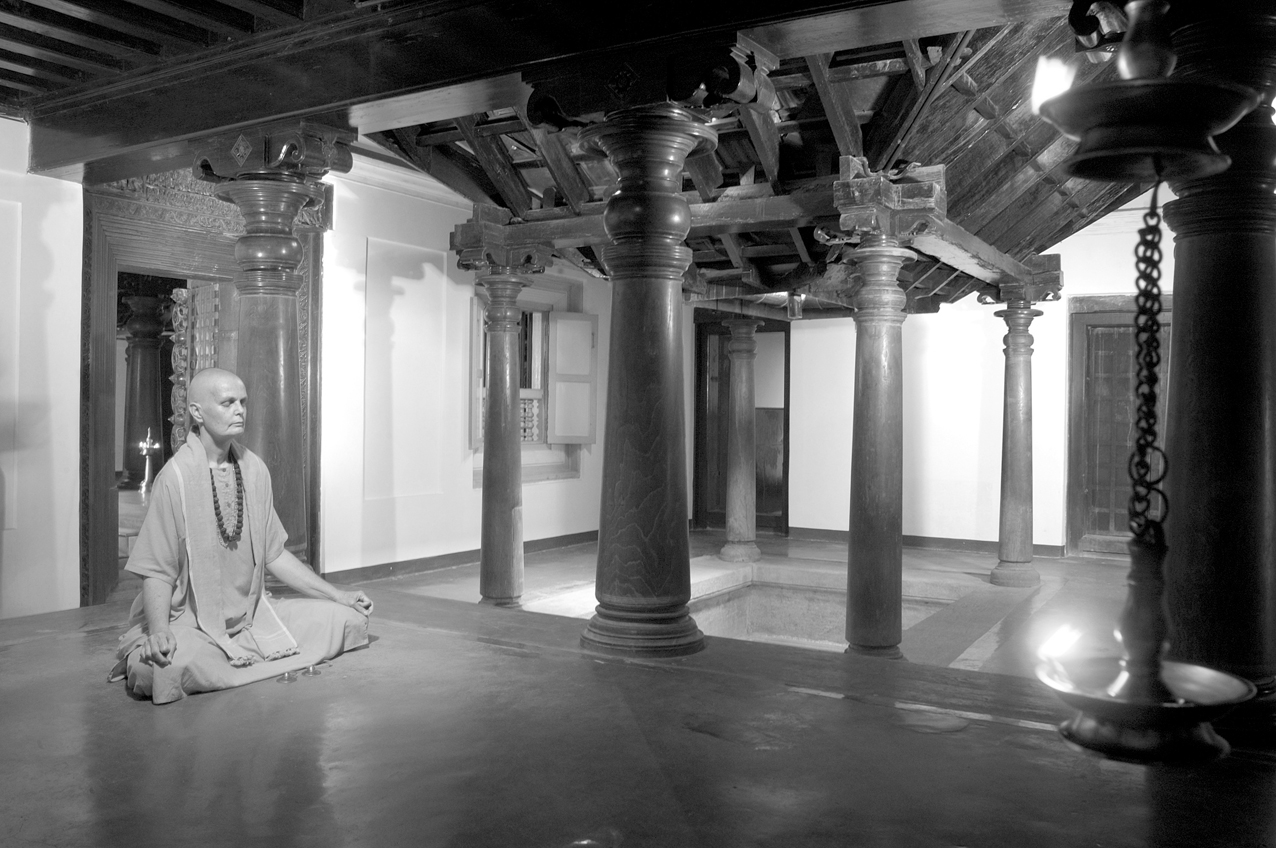
No other medical system in the world has such a universal, profound and holistic purification system as the ancient Ayurvedic Pancha-Karma cure. Where stressed Westerners become healthy again, filled with Eastern wisdom and mediative calm, and which are the best Ayurvedic fountains of youth in Sri Lanka and India, is what I would like to discuss here. Slowly the warm herbal sesame oil runs in a fine stream over the forehead during the Shirodhara treatment. Back and forth, evenly and soothingly. For a good 20 minutes. Everyday thoughts dissolve and make room for a soothing emptiness. Attention turns inward. Deep relaxation spreads through my body. The mirror to the soul opens, even old memories emerge from the depths of consciousness. Although the oily Ayurvedic massages make you feel like an oil sardine, you quickly get used to them and enjoy the soothing touches. An extremely relaxing experience is the synchronous massage, called Abhayanga, also known as the loving hands massage. This describes the sensation during the massage very well, because being massaged synchronously by four hands is more beautiful than any caress. The gentle movements of the hands massage the herbal oil into the skin so that it reaches the lower layers of the tissues, involving the blood and nervous systems and isolating the toxins and waste products to be eliminated afterwards. What was developed thousands of years ago in Nordin-dien is a holistic natural system, which sees body, mind and soul as one. The Ayur-veda philosophy assumes that all matter, including human beings, can be traced back to the five elements: earth, air, water, fire and space. From this connection three basic constitutions are formed, the so-called Doshas, which are understood as essential bio-energies. The elements air and space form the Vata-Dosha and stand for the life principle movement. It controls the movement processes in the body, breathing and the nervous system. The second dosha is called pitta and is dominated by the element fire. Pitta energy is responsible for all reactions, i.e. digestive and metabolic processes. The elements earth and water influence the third dosha, called kapha. Their energy is structuring, shaping and responsible for the cell and skeleton structure as well as for the characteristic features. Only when the doshas are in balance, body and soul are healthy. …
Cannabis: Prohibition never worked, medical potential neutered

The hemp plant and its medicinal potential have suffered the same fate as Ayurvedic medicine. It too was banned for 50 years. Therefore, we make another spiritual cannabis journey from the advanced cultures of indigenous peoples to today’s lowlands, errors and confusions in drug use, delving into the international and state repression machine in dealing with psychoactive substances and focus on the local drug policy, which mainly protects and supports the pharmaceutical industry, but has little to do with prevention and public health. For while the globally acceptable drug alcohol, causes far more health damage and deaths, the hemp plant and THC consumption are still stigmatized and banned in Northern Europe. Spain and Portugal, as well as Czechoslovakia, have relaxed the laws and allowed consumption on a limited basis in so-called social clubs. Besides the USA and Canada, which have long since legalized, Mexico and other countries are now following suit. …
Berthel and other addiction experts are convinced that in a free society adults do not need „lifestyle know-it-alls,“ and that this also applies to psychoactive substances of all kinds. Berthel is convinced that bans are useless, and that regulated distribution combined with addiction prevention is the better way to go, and that „a drug-free society is an illusion. Moreover, it is not tenable to ban a drug with a low addictive potential and little harmful indications such as cannabis, while a substance with such a high addictive potential as alcohol is consumed naively. On this point, Berthel and pharmacopsychologist Boris Quednow, who researches substance use and its consequences at the Psychiatric University Hospital in Zurich, agree. He, too, is of the opinion that consumption should be decriminalized as soon as possible, „otherwise we will continue to punish the most severely affected.“ …
Cannabis is also used to treat type 2 diabetes. Certain molecules in the cannabis plant can help prevent and treat the disease. Type 1 diabetes is a genetic disorder in which the body cannot produce insulin. Type 2 diabetes or diabetes mellitus is much more common and occurs when the pancreas, does not produce enough insulin. A cannabis drug developed in the UK that eliminates the need for insulin injections in diabetes. It targets the use of the cannabinoids CBD and THCV (tetrahydrocannabivarin), which lower blood sugar levels and improve insulin production. THCV is a potent cannabinoid and has already been shown to suppress appetite. In turn, the cannabinoids CBD and THC enhance each other’s therapeutic properties. Cannabigerol (CBG), like cannabidiol (CBD), is a non-psychoactive cannabinoid from the cannabis plant. CBG content is usually higher in indica varieties than in sativa varieties and has anti-inflammatory, antibacterial, analgesic, and intraocular pressure-lowering effects. Researchers from the „University of Barcelona“ have proven that CBG is a partial agonist of cannabinoid receptor 2 (CB2) and acts as a regulator of endocannabinoid signaling. Italian researchers proved that inflammation and oxidative stress play a central role in neurodegenerative diseases such as Alzheimer’s, Parkinson’s and multiple sclerosis and found that cannabis also exerts neuroprotective effects against inflammation and oxidative stress, protecting neuronal cells. Researchers from the „Uni-versidad Complutense“ Madrid in Spain studied the effects of CBG and identify genes associated with Huntington’s disease (e.g., gamma-aminobutyric acid A receptor (GABA). The study was conducted under the supervision of scientists from 18 countries. The Journal of Investigative Dermatology published a study in which mice with melanoma were treated with THC and CBD, and an international team of researchers found that these substances lead to the death of cancer cells through apo-ptosis and autophagy. The term autophagy refers to a process in which the cell disassembles itself to get rid of damaged parts. Apoptosis is the natural suicide of the cell. It breaks apart and then the immune system cleans up the rest. …
Abuse of power monopoly & media mistrust
In the final chapter, I would like to take you on another contemporary and futuristic journey, questioning and reflecting with you on the achievements and dangers of digitalization, the credibility of the media, and the disruptive division of society by self-proclaimed gurus, (a)social fake news and filter bubbles.
Rupert Murdoch is one of the most evil string-pullers in the division of society in the UK and in the US, he was an Iraq-war-monger and is an avowed climate skeptic like Donald Trump. Thus, after the decline of the Conservatives in Great Britain, he and his me-dies supported the course of Toni Blair’s government, which promised a referen-dum on Britain’s euro entry in the 1997 election campaign. Among other things, Murdoch is accused of having taken a Euroskeptic stance on Fox TV and the 175 newspapers of „News Corporation“ in the run-up to the Iraq war. „The Sun“ and the „News of the world,“ which was discontinued in 2011, were known for their anti-EU and anti-German stances. „Fox TV was repeatedly criticized for one-sided partisanship in favor of the Bush administration. In 2007, Murdoch publicly admitted in an interview at the World Economic Forum in Davos that he had actively tried to influence public opinion in favor of George W. Bush’s Middle East policy. Murdoch was with Blair more often than the British Foreign Secretary or other members of the government during the hot phase and debate on Britain’s entry into war in alliance with the United States. Murdoch urged Blair to side with the USA. First, Murdoch’s tabloid media desa-vouirized all Labour government ministers with smear campaigns under the Thatcher government, bringing the Torries to power.
Under Cameron, the gigantic wiretapping scandal of the „News of the World“ was uncovered. In 2009, journalist Nick Davis published the background to the bugging scandal in The Guardian. According to the report, hundreds of politicians and celebrities were systematically spied on, monitored, blackmailed or bribed for years. Four British prime ministers were finally invited to the Leveson Inquiry. There, it was also learned that Murdoch also encouraged Nigel Farage of „UKIP“ to further push for Brexit and thus managed to strongly divide British society. Murdoch represents a real danger to liberal democracies – without him, there would have been no „Bre-xit,“ politicians and political scientists agree. The „Brexit“ was the peak of Murdoch’s power in Great Britain and with „FOX NEWS“ he made Trump great and promoted him to president – not the Russians. Yvanka Trump apparently managed the assets of Murdoch’s daughters – that’s how the contact came about. At first Murdoch was not enthusiastic about Trump, but he recognized Trump’s potential for his purposes. The meeting of the tribal chiefs took place on the golf course in Scotland in 2006. There, Rupert chose Trump over Hillary Clinton. The rest is history. Trump would never have become president without „Fox News,“ that much is certain. Murdoch is directly responsible for the political contamination of the media and thus the contamination of society.
Man or machine – who is superior? Who makes the decisions?
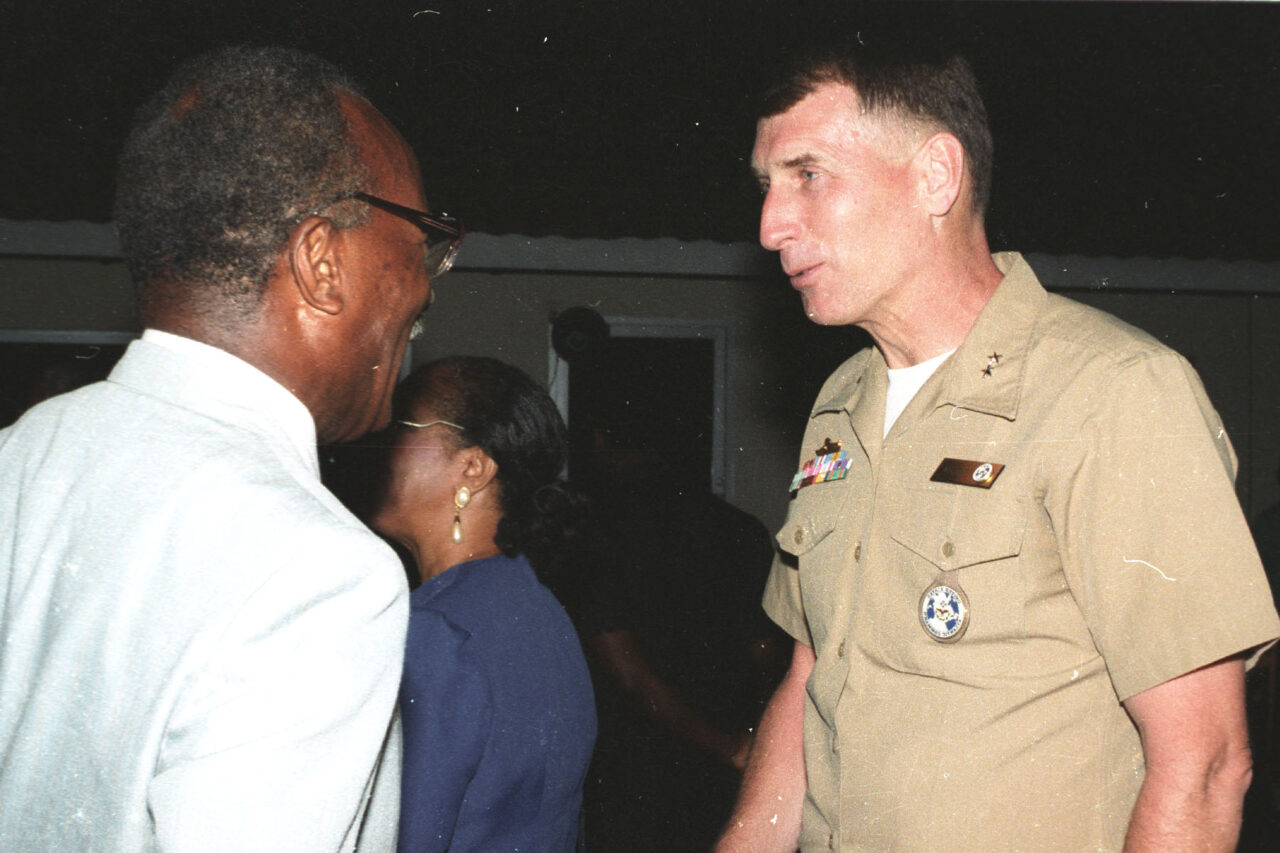
An example of Big Data in military use with deadly errors and consequence: In late August 1988, as the nine-year war between Iran and Iraq was winding down, civilian oil tankers were attacked in the Persian Gulf. After Kuwait’s request to the U.S. for escort protection, American troops began deploying tanker escorts. The U.S. cruiser „USS Vincennes“, which had a complete air defense system consisting of the most modern radars at the time, extensive anti-aircraft armament and an air reconnaissance center, was also on the scene. The Combat Information Center (CIC) is where all the threads come together. The high-tech radar system „Aegis“ has the task of evaluating complex air battles with up to 200 aircraft in real time and sorting out a large number of threats, be it from ground missiles or to detect enemy aircraft, their armament, course and other details. Just when the „USS Vincennes“ was attacked by an enemy craft on July 3, 1988, a flying object that had taken off from Iran also appeared in the sky. Manuals with civilian flight plans and the „IFF codes“ are consulted to identify the aircraft. „IFF“ stands for „Identification, Friend or Foe.“ What unfolded next is a sequence of chaos, software problems and disinformation that led to one of the most tragic air traffic disasters, killing 298 people. At 10:17 a.m., Captain Mohsen Rezaian had departed on the short routine flight from Bandar Abbas to Dubai with 290 Mecca pilgrims on board. The flight distance of only 120 miles required a short climb of the Airbus 320, and the flight of Iran Air 655 was probably doomed by the fact that military aircraft had also landed at Bandar Abbas airport the day before due to military aerial reconnaissance. When the white dot appeared on the radar of the „US Vincennes“ and the commercial aircraft did not listen to the warnings of the US naval officer and the „Aegis“ system erroneously classified the aircraft as an „IFF Model II“, i.e. a fighter jet, the situation escalated. Since even a fire control beam did not cause the Iranian aircraft to turn away, it was shot down and over 290 people lost their lives. What was the cause of the catastrophic misjudgment that led Captain Rodgers to order the plane to fire? …

Another example from the tragedies of aviation history and the conflict between man and machine in the collision of two aircraft near Überlingen on Lake Constance on July 1, 2002, when the Boing on its way to Brussels collided with the Russian Tupolev of Bashkirian Airlines 2937 on its way to Barcelona in the Lake Constance region. This air accident, however, was partly caused by a Swiss air traffic controller who paid for it with his life, as the father of a daughter who was killed took revenge and murdered the air traffic controller. Back to the cause of the accident: When the safety distance between the two aircraft became dangerously close, both aircraft used the Traffic Alert and Collision Avoidance System „TCAS“ to process the data of the contact, such as course and speed, and to warn their crews. While the system of the Russian pilot, Alexander Gross, instructs to climb, the British pilot Paul Philipps receives the instruction to descend, which he follows immediately. Only now the air traffic controller of „Skyguide“ in Zurich intervenes and it comes to a man-machine decision conflict and momentous intervention of a human being. …
Upside-down world: Whistleblowers are punished and tortured, the mass murderers walk around free
Finally, a detour into the political abyss and the role and fate of whistleblowers. 20 years ago the terrorist attacks of September 11 on the Twin Towers of the „World Trade Center“ in New York took place. These fundamentally changed the world and the „War on Terror“ replaced the „Cold War“ with the Soviet Union, with NATO Allies immediately joining the U.S. in unconditional solidarity and declaring an alliance emergency for the first time in NATO history. After the collapse of the Soviet Union, the U.S. security apparatus was left without a significant enemy. The „War on Terror“ gave the war machine another powerful boost and large military budgets, and the arms companies profited even more. The war in Iraq and in Afghanistan were the consequences and Europe has blithely participated – also in the knowledge of the torture prisons of the USA in Afghanistan, in Iraq, in the Eastern Bloc and on Guantanamo. Switzerland also helped in the US kidnapping and torture flights and played a disastrous collaborative role in humanitarian terms. Germany is no better off and the British do what the Americans want anyway. We Swiss are also lapdogs of the United States and kowtow at all levels. In addition, we are also the European, not to say global intelligence operations hub with all the inter-national organizations and the many oligarchs, tax evaders and Mafiosis who live and work here. They all love Switzerland, not only because of the beautiful mountains. …
Since there is no internationally recognized definition of terrorism under international law, states have extended the concept further and further, ramped up and inflated the security apparatus to a preventive surveillance state, and in the meantime everyone is a suspect. Terrorism today includes crimes that have nothing to do with political, subversive violence. This is also the case in the new „Swiss Police Measures Act“ (PMT), which gives one food for thought, because in the law even the spreading of fear and terror is considered „terror“. In criminal law, there has been a gradual shift to the preventive and thus to the private sphere. Preventive surveillance has increased dramatically and disproportionately. After 2015, Switzerland also decided on an anti-terror strategy and tightened the Intelligence Act, whereby coercive measures are now permitted on the basis of suspicions, vague indications and equally opaque algorithms in dragnet searches. I wonder where all the freedom-trychlers, the original Swiss, SVP corona deniers and conspiracy theorists stayed when our basic rights have been continuously curtailed for two decades and the population has given its nod to all the tightening and restrictions. A tragedy and a hypocrisy beyond compare. …
Thanks to courageous whistleblowers, such as Wikileaks founder Julian Assange, or Edward Snoden, or investigative journalists and research networks such as „Bellingcam“ or „correctiv“, some of the dirty tricks of despots, corrupt politicians, military operations, surveillance measures and economic crimes come to light. Fortunately, one would think. But far from it. „Julian Assange has produced evidence of the most serious state-sanctioned crimes, such as torture and mass murder,“ says none other than UN Special Rapporteur Nils Melzer in his book „The Case of Julian Assange – History of a Persecution.“ Apparently, Melzer’s visit to investigate alleged human rights violations, announced at the Ecuadorian embassy in April 2019, led to a three-day coordinated blitz by the three countries involved that allowed Assange to be handed over to British police and has since been back in custody. First, the Ecuadorian embassy withdrew his asylum status and citizenship without due process of law, and at the same time the British government received an extradition request from the U.S. authorities, after which Assange was handed over to the British police. Prior to that, he stayed in asylum in the Ecuadorian embassy for seven years to avoid extradition to the U.S. via Sweden. …
„That the person who exposed mass murderers and crimes of torture against humanity should now himself be jailed as a criminal for 175 years, while not a single crime has been atoned for or those responsible punished,“ is evil for Europe, Melzer continues. „I didn’t think it was possible at first that Sweden or the United Kingdom would have such a disregard for human rights. But when it comes down to the wire, the rule of law doesn’t work anymore, even here in Europe. Assange is, so to speak, „the skeleton in the closet of the self-righteous West.“ This has already shaken him (Melzer), although he has experienced and seen a lot as an ICRC delegate. Also the procedure in Sweden because of alleged Verge-waltigung at and other sex offences had been stopped, after Meltzer had written a letter to the Swedish government and had pointed them to approximately 50 partly most serious procedure injuries. Asked whether the same could happen in Switzerland, the UN special rapporteur replied, „Absolutely.“ He said he regularly has to approach massive authority collusion in this country as well. …
Butterfly Effect: Hedge Funds are the Drivers of Wars and Climate Change
Let’s face it, financial markets are at the center of the neoliberal economy, they determine commodity and food prices worldwide, and they dictate events around the globe. Hedge funds are the bane of food, water and commodity capitalism at its purest. Let’s take a closer look: In 2008, food and commodity prices rose sharply even though the world was in recession after the financial crisis. This shows that prices rose because of speculation, not because of increased demand. What began in the 1980s with Thatcher’s and Reagan’s neoliberalism and became known as the flapping of a butterfly’s wings on Wall Street in 2010, led to riots, wars and global refugee crises from then on. The flapping of wings was triggered by then President Bill Clinton and National Bank President Alan Greenspan with the Commodity Modernization Act, i.e. the liberalization of markets that had been strictly regulated since the 1930s and a limited number of speculators. But from then on, everyone could speculate with commodities and food without limits, whereupon the financial markets licked blood and Wall Street and hedge funds henceforth dictated events in the most evil way.
These speculations and the developments in the oil states also had even more far-reaching consequences. Due to the enormous rise in the price of petrodollars, Russia and Saudi Arabia, but also Venezuela, came into immense wealth and increased their military budgets and police forces either to suppress revolts in their own countries or for further offensives, as Russia did in Syria, in Ukraine and most recently in Crimea. In the case of Saudi Arabia, war came to a head in Yemen and in many other regions in the conflict between Shiites and Sunnis, meanwhile Iran, infiltrated the Middle East in its own way, pumping it full of its crude ideologies, weapons and fighters. The rise in oil prices was also the beginning of doom for Venezuela, which ultimately perished from the resource curse. Here, too, the speculators were ultimately the trigger and responsible for the refugee flows from Latin America to the USA and from Africa and the Orient to Europe. …
A good 500 companies with well over 10,000 employees work in the commodities industry in Switzerland, which had its first notorious protagonist in March Rich, who made it to dubious fame when he first hit the headlines in the 1970s. The Belgian-born US citizen ensured that commodities trading became significant in Switzerland. His unscrupulous oil deals with South Africa and Iran, circumventing international sanctions during the Apard era, helped the „father of the Swiss success model“ to immense wealth and put him on the list of most wanted criminals in the US until Bill Clinton pardoned him in 2001. We remember that Clinton and Greenspan also pushed the liberalization of food markets, triggering the hedge fund plague. In Switzerland, Christoph Blocher and Martin Ebner were among the most ruthless liberalizers in the 1990s. We know from „Bloomberg“ journalists Javier Blas and Jack Farchy that Ebner was among the saviors of Marc Rich’s empire and that „Glencore“ boss Ivan Glasberg also earned his spurs in Johannesburg, South Africa. …
—————————————————————————————————————–
Thank you for your interest. Here you can find the access to the whole document as well as to the other versions:
Online stories: www.allmytraveltips.ch Press images: www.allmyphotos.ch
